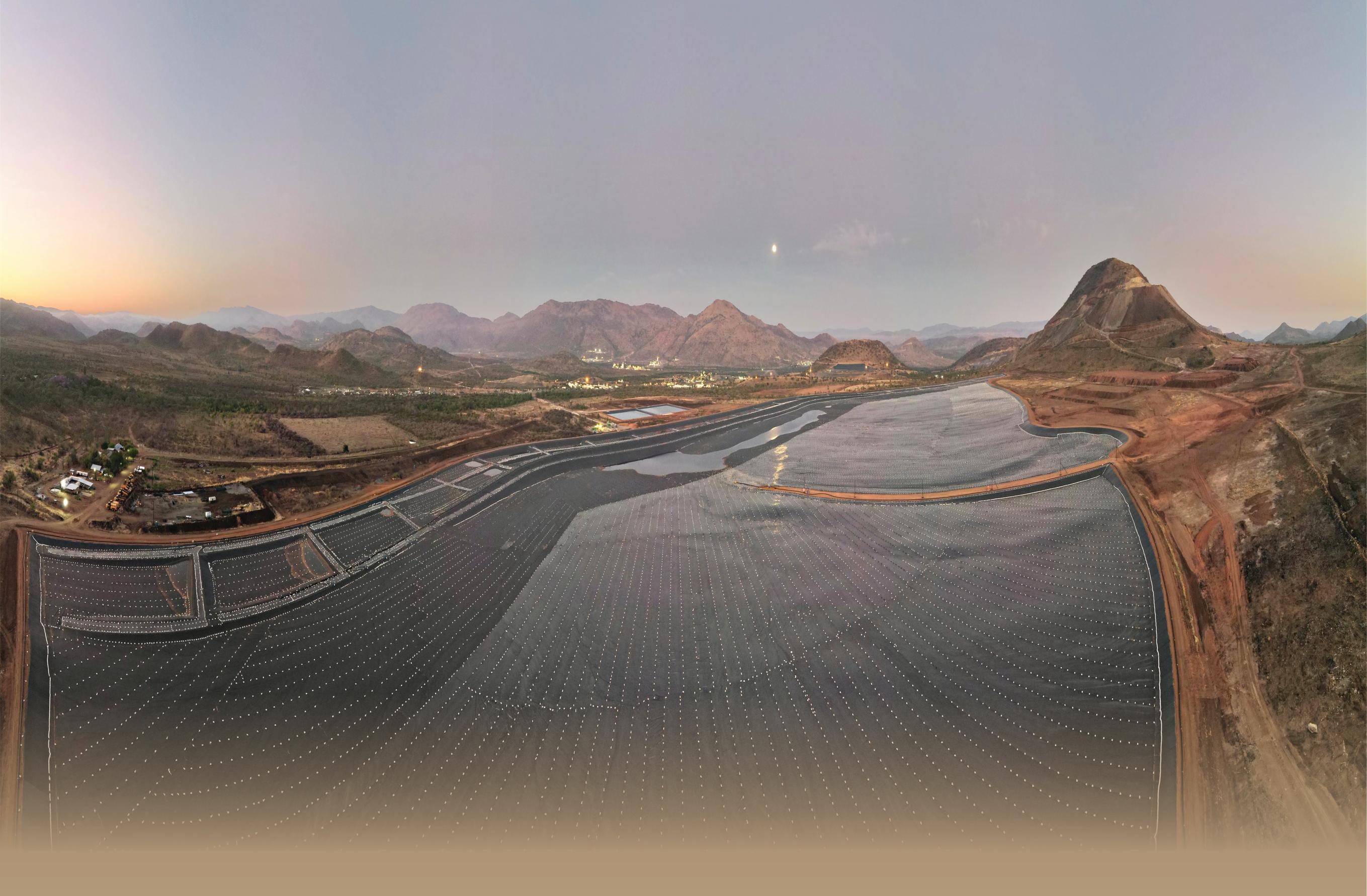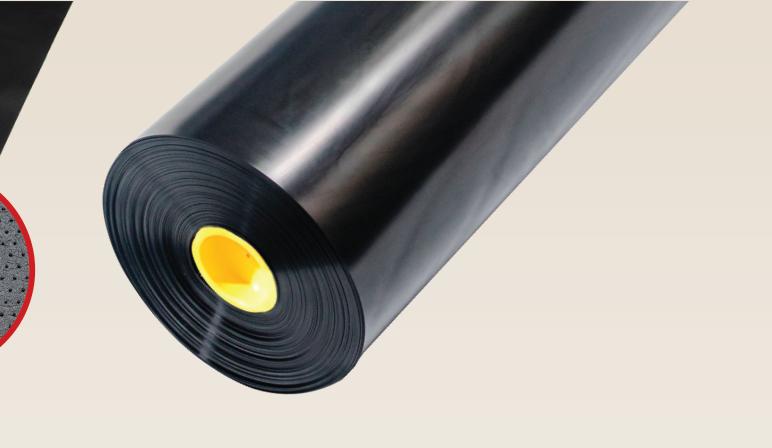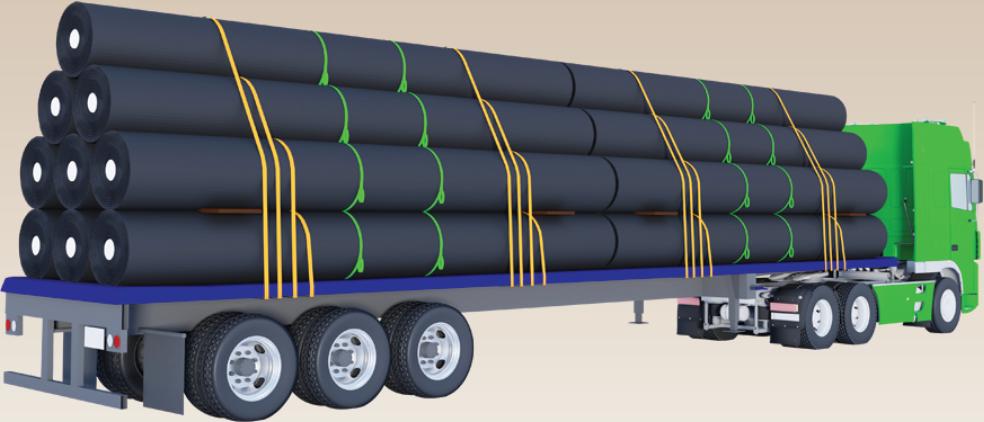


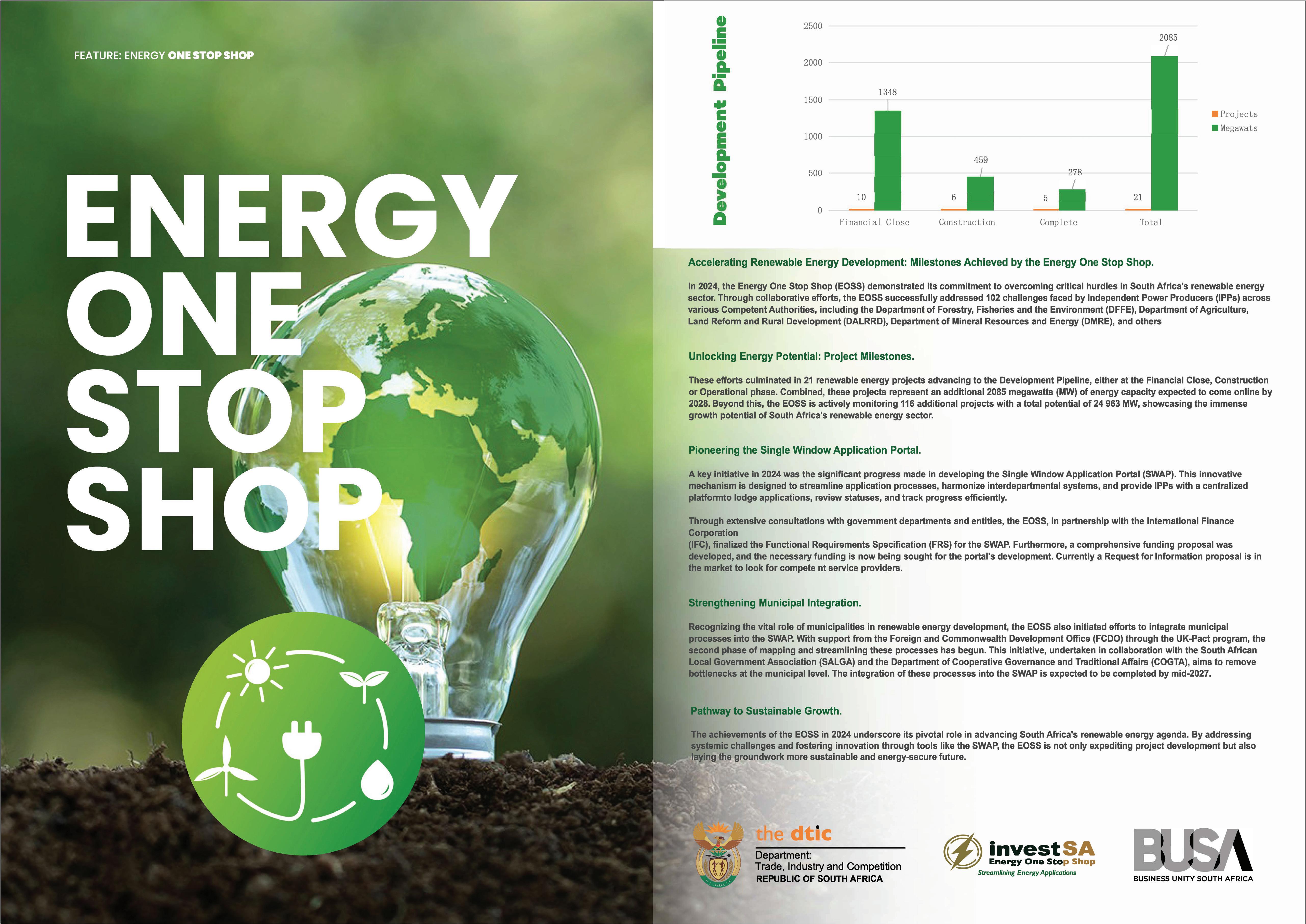









Steinmüller Africa
Power generation is a major driver of production, but mitigating emissions from the combustion process is vital. This is where Steinmüller Africa, under the directorship of Moso Bolofo, is delivering solutions.
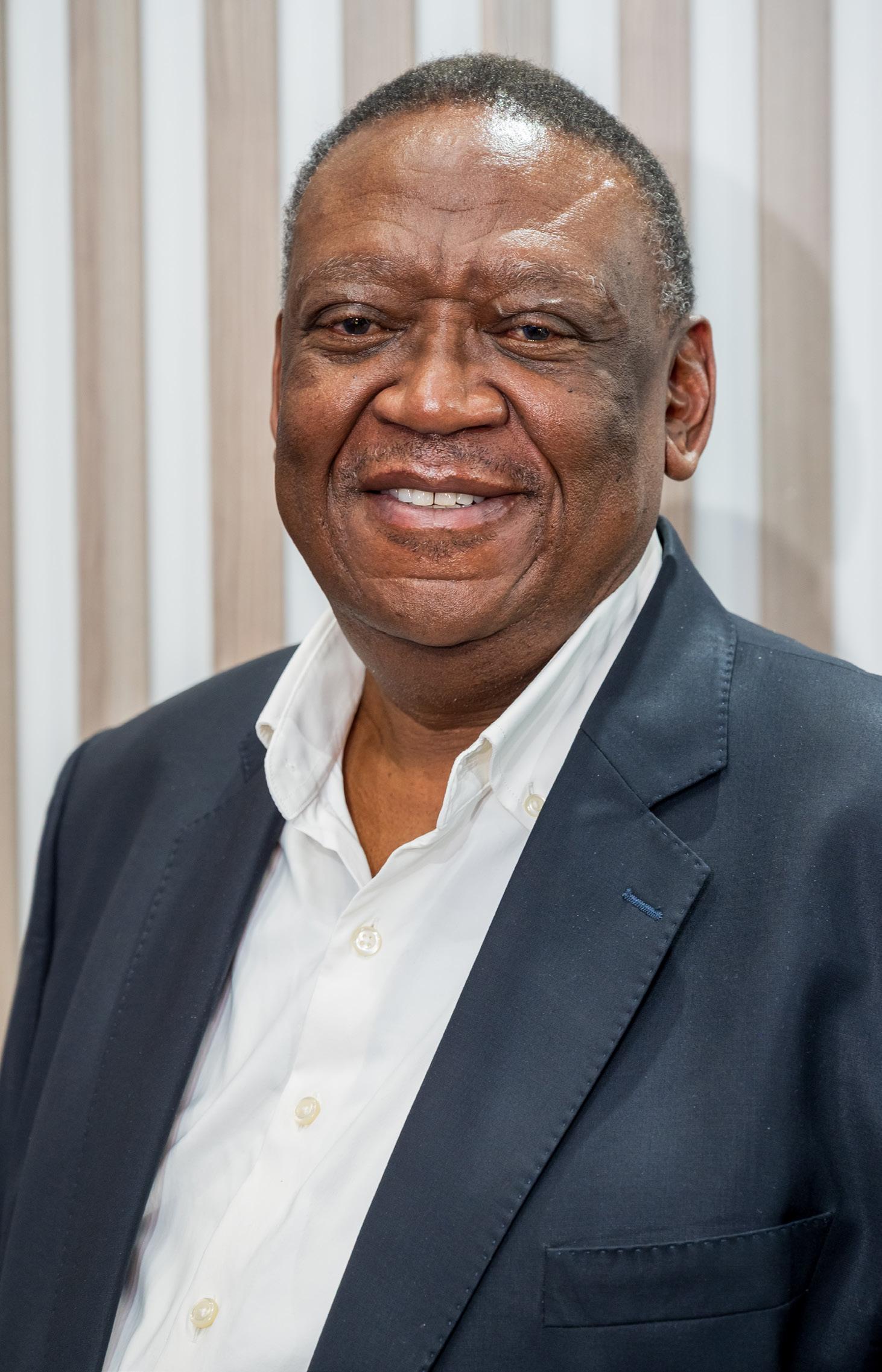


Global Reach. Local Precision.
Leadership Assessment
Measuring Leadership with a Sustainability Lens
Executive Development
Optimising Organisational Performance
Employer Branding Strategies
With Global Industry-Specific Insights
Executive Search


Securing High-Impact Leaders for Long-term Success

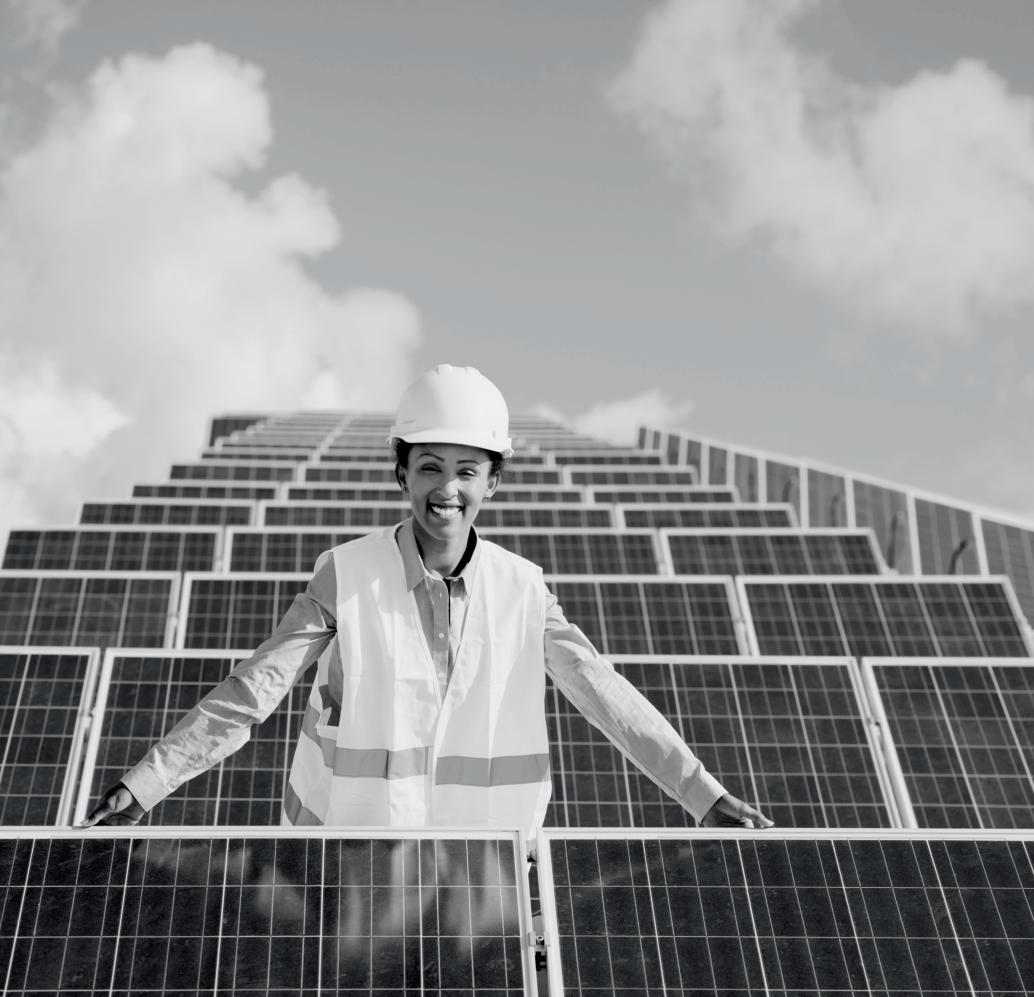
22 IN FOCUS
How making sand from ore could solve a looming crisis
26 WOMEN
The Glass Cliff phenomenon: When leadership for women comes at the brink of collapse
32 POLICY
DMPR Budget Vote: Bold regulatory overhaul and targeted investments aim to transform mining and fuel a green-energy pivot
38 TRADE/ECONOMICS
Can zero tariffs drive real change? Inside China’s new trade policy and Africa’s energy-led future
42 REGULATORY
Building a legal framework for Namibia’s midstream infrastructure
48 FINANCE
Can the new Africa Energy Bank transform the continent’s refining and downstream future?
52 SUSTAINABILITY
Why green skills development is vital to drive sustainability in mining



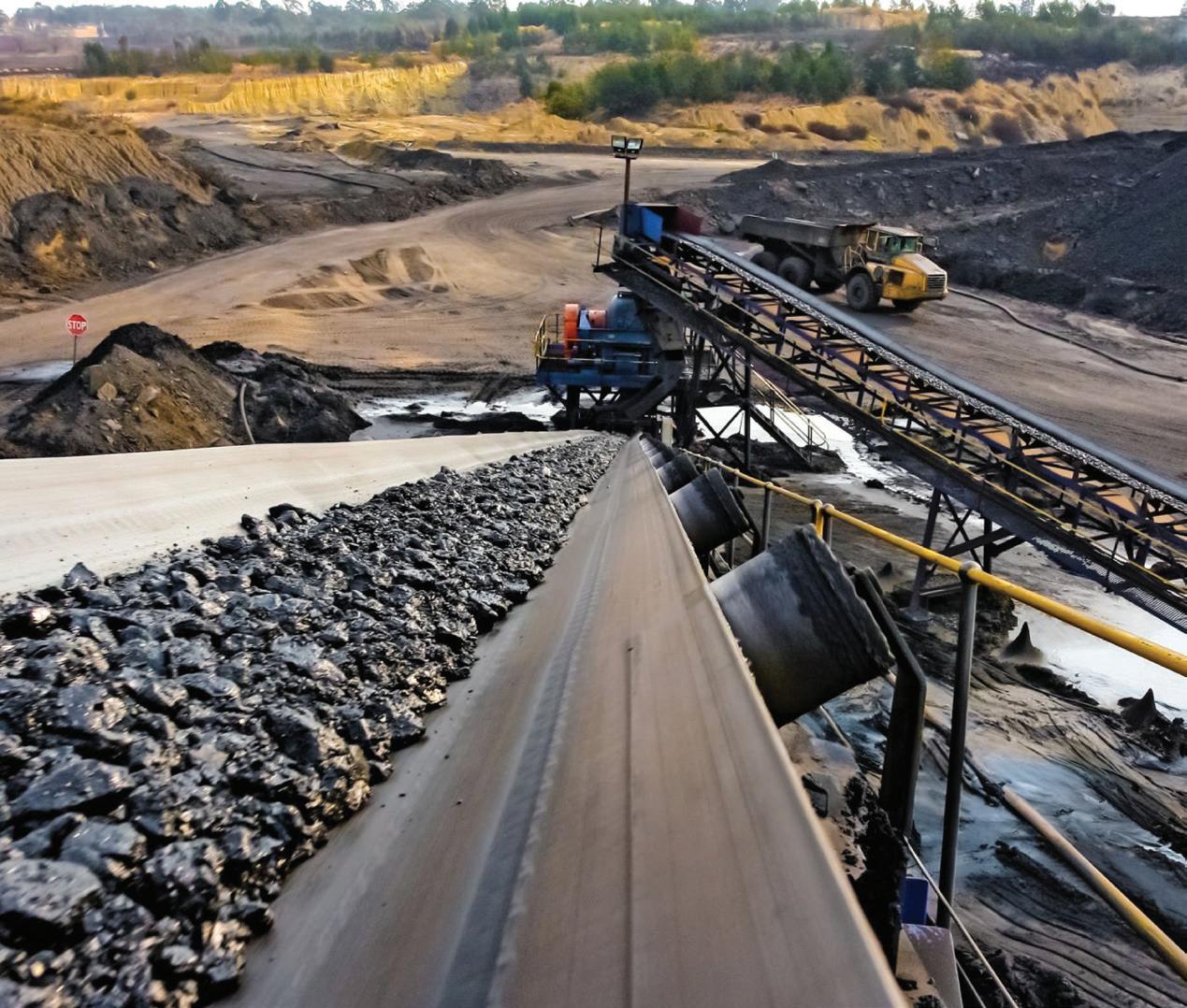





A lot can change in 6 years our warranty promise won’t





















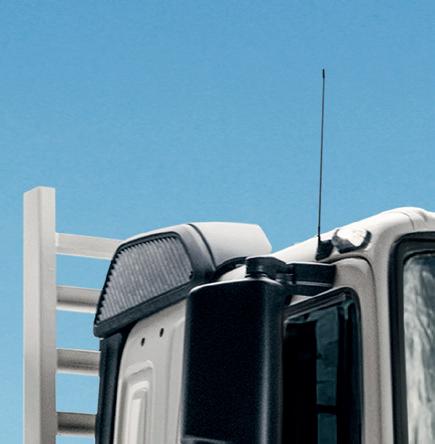








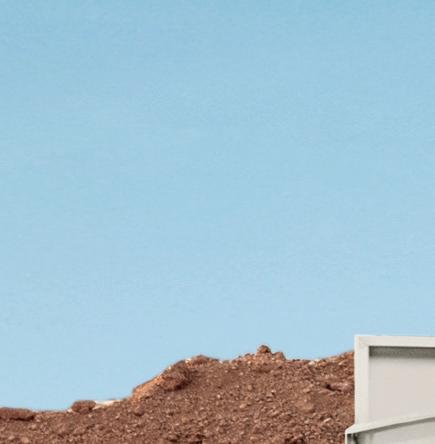




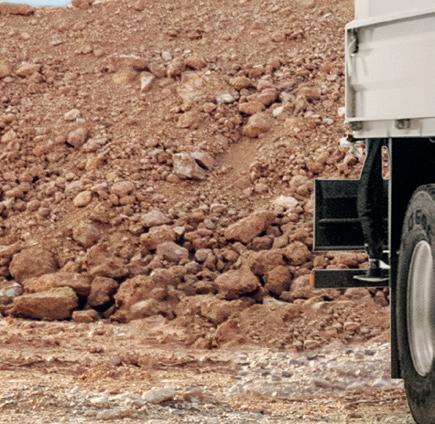



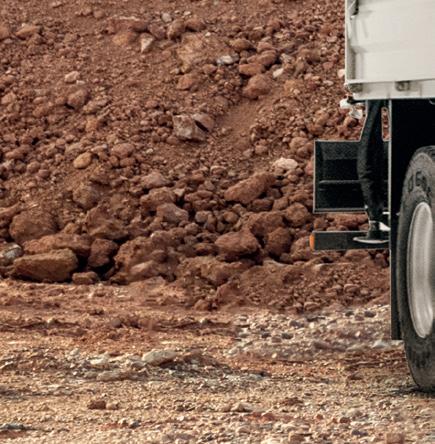













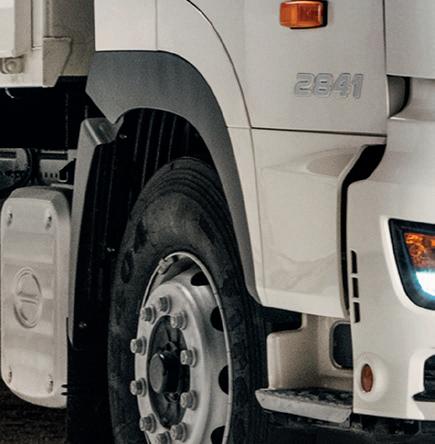

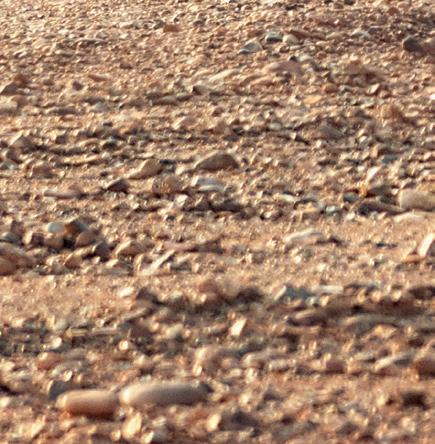




























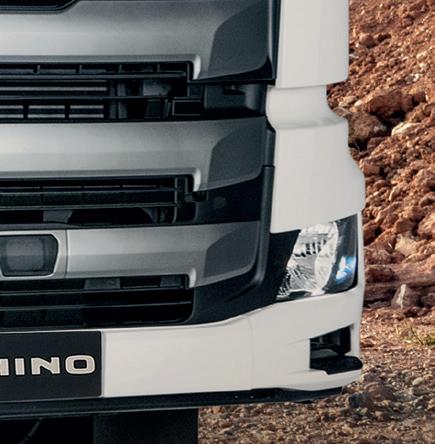










6 years of change and our warranty protects your investment

A lot can change in 6 years. Our 6-year drivetrain warranty promise protects your investment against the test of time. Built to keep your business moving, supporting uptime, growth and daily operations, all the way. Ts and Cs apply.








HINO ALL THE WAY



56 ENVIRONMENT
Why the energy transition won’t be green until mine waste disasters are prevented
62 ENERGY
Why Africa’s leapfrogging from oil and gas is not the quick energy fix the world seems to think it will be
66 CRITICAL MINERALS
South Africa’s new Critical Minerals and Metals Strategy 2025 marks a new frontier for sustainable growth
74 OIL
The long-awaited initial public offerings of Nigeria’s NNPC and Angola’s Sonangol signal a seismic shift in Africa’s oil industry
78 GAS
Natural gas and Africa’s energy future: balancing growth and sustainability
82 TECHNOLOGY
How AI–powered enhanced oil recovery is breathing new life into southern Africa’s ageing oilfields
90 HEALTH & SAFETY
Controlling dust and managing road surfaces are vital for safe, efficient operations in mining
96 WATER
How artificial intelligence is transforming water treatment management in African mining
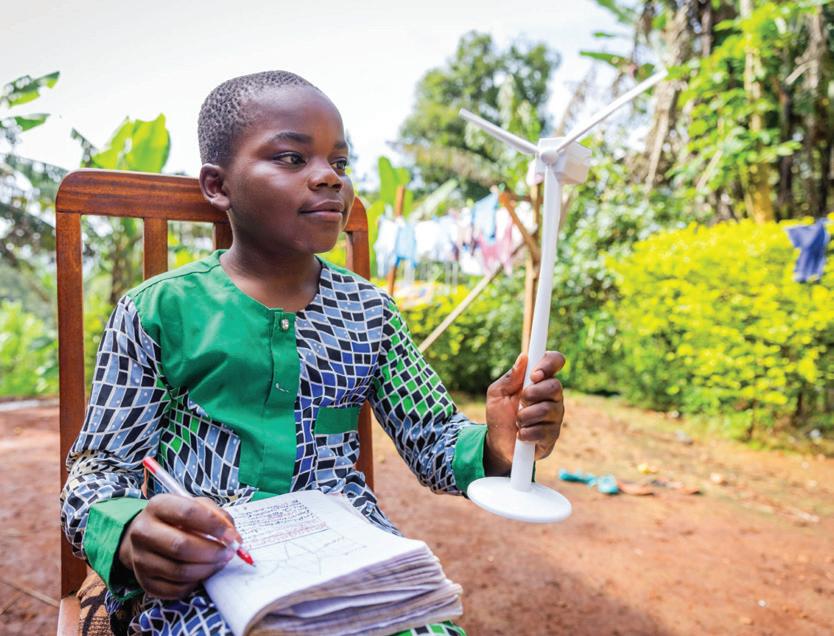
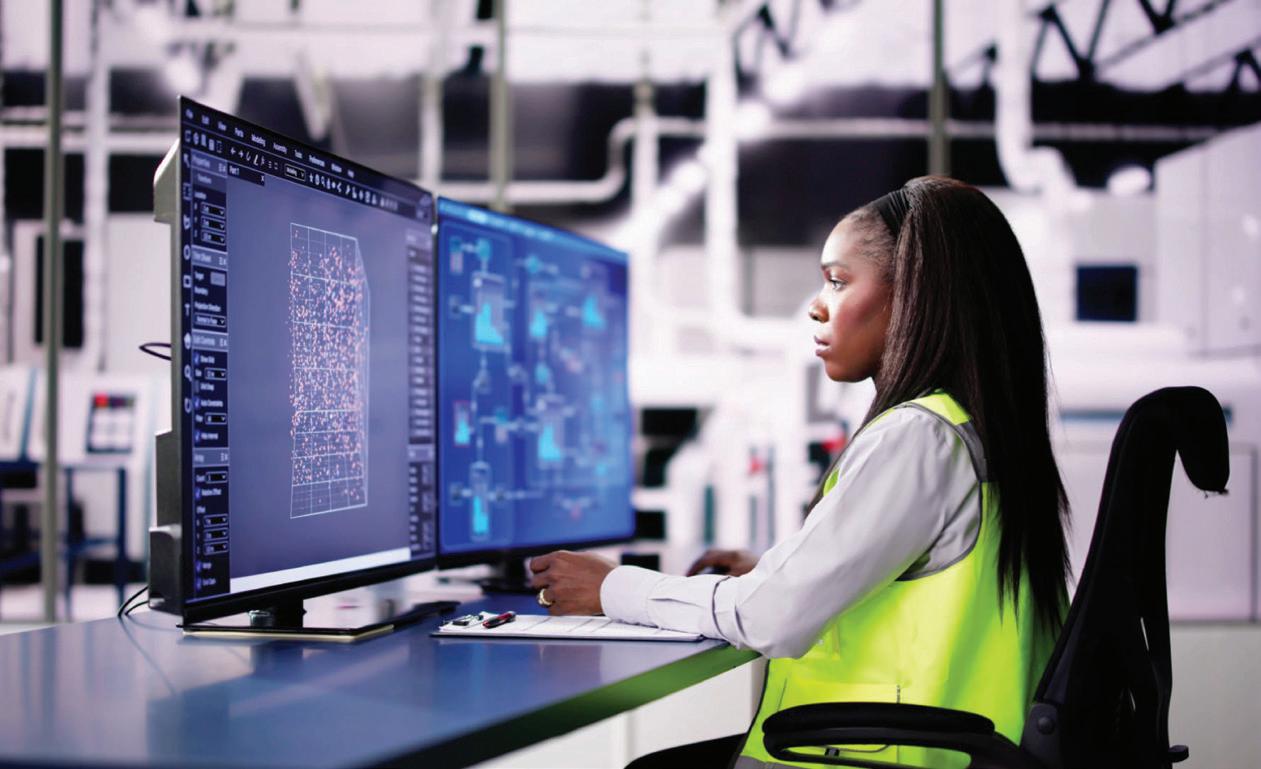



For decades, mining has been the backbone of southern Africa’s economies. But today, the industry stands at a critical crossroads. As global markets, investors and regulators place increasing pressure on environmental, social & governance (ESG) performance, the future of mining depends not just on what is extracted from the earth—but on how responsibly it is done.
Driving sustainability in mining is no longer optional. It is a business imperative.
This begins with managing environmental risks—particularly tailings and wastewater. Catastrophic tailings failures globally have shown the human and ecological cost of poor waste management. Forward-thinking mines are now investing in dry-stack tailings, water recycling and closed-loop systems that significantly reduce contamination and freshwater use. These technologies not only protect communities but also safeguard a mine’s social licence to operate.
But sustainability is also about people. As the industry pivots toward greener operations, workers must be equipped with the skills to match. From technicians maintaining solar arrays to operators using AI–driven monitoring systems, green skills are becoming core to modern mining roles. Investing in employee training is both a moral and strategic necessity.
Renewable energy is another powerful tool. Across the region, mines are deploying solar and wind solutions to reduce reliance on costly, unstable grids and diesel generators. These transitions cut emissions and operational costs—delivering both environmental and financial returns.
Lastly, AI technologies are transforming how sustainability goals are met. Real-time data can now track emissions, optimise energy use and detect environmental risks before they escalate—enabling smarter, faster decisions.
The path to a sustainable mining future lies in innovation, collaboration and bold leadership. Those who embrace change today will shape a stronger, greener and more resilient industry for generations to come.

mining news
PUBLISHER: Donovan Abrahams
MANAGING EDITOR: Tania Griffin
DESIGN: Erin Esau
EDITORIAL SOURCES: NJ Ayuk, Cliffe Dekker Hofmeyr, SA Oil and Gas Alliance, Dust-A-Side, Africa Energy Week, Gaby PatonThomas, TheConversation.com, BizCommunity.com
STAFF WRITER: Matthew van Schalkwyk
IMAGES: iStockPhoto, WIkimedia Commons
PROJECT MANAGER: Viwe Ncapai
ADVERTISING EXECUTIVES: Viwe Ncapai, Lunga Ziwele
ONLINE CO-ORDINATOR: Tharwuah Slemang
IT & SOCIAL MEDIA: Tharwuah Slemang
CLIENT LIAISON: Majdah Rogers
ACCOUNTS: Benita Abrahams, Bianca Alfos
HUMAN RESOURCES MANAGER: Colin Samuels
PRINTER: Novus Print
DISTRIBUTION: www.africanminingnews.co.za, www.issuu.com
DIRECTORS: Donovan Abrahams, Colin Samuels
PUBLISHED BY: Aveng Media

Boland Bank Building, 5th Floor 18 Lower Burg Street Cape Town, 8000
DISCLAIMER:

Tel: 021 418 3090
Fax: 021 418 3064
Email: reception@avengmedia.co.za
Website: www.avengmedia.co.za
© 2025 African Mining News magazine is published by Aveng Media (Pty) Ltd. The Publisher and Editor are not responsible for any unsolicited material. All information correct at time of print.

Rub shoulders and conduct business with the high-flyers in the African mining industry
Uganda International Oil & Gas Summit 2025
Kampala Serena Hotel, Uganda uiogs.com
Held under the patronage of the Ministry of Energy and Mineral Development, UIOGS has cemented its role as East Africa’s must-attend gathering for oil and gas leaders. Every year, it brings together senior government officials, global operators, investors, service providers and policymakers. Under the theme, “The Refinery: An East African Affair”, this year’s summit will explore how downstream development and crossborder co-operation are shaping a new era of regional prosperity.
African Energy Week
29 September to 3 October
Cape Town International Convention Centre, South Africa aecweek.com
African Energy Week (AEW) is the African Energy Chamber’s annual event, uniting African energy leaders, global investors and executives from across the public and private sector for four days of intense dialogue on the future of the African energy industry. AEW promotes the role the continent plays in global energy matters, centred around African-led dialogue and decision-making.
African Mining Week 1 to 3 October
Cape Town International Convention Centre, South Africa african-miningweek.com
African Mining Week is the ultimate platform to explore the continent’s rich mining opportunities. With Africa home to the world’s largest reserves of key minerals like lithium, cobalt and copper, as well as gold, diamonds and iron ore, the event provides insights into untapped resources, new projects and emerging markets that are driving global innovation and industrial growth.
Joburg Indaba 8 & 9 October
Inanda Club, Sandton, Johannesburg, South Africa
www.joburgindaba.com
Critical and constructive conversations are one of the stand-out features of the Joburg Indaba, serving the industry with robust discussions that get to the crux of the key issues. The event will once again bring together an outstanding panel of speakers including CEOs and senior representatives from all major mining houses, local and international investors, government, parastatals, experts from legal and advisory firms, and representatives from communities and organised labour.
Sustainability & ESG Africa Conference & Expo
15 & 16 October
Sandton Convention Centre, Johannesburg, South Africa esgafricaconference.com
This highly anticipated event provides an unparalleled platform for industry pioneers and experts to come together and tackle the common challenges associated with embedding sustainability and ESG practices within organisations. The conference’s core theme, “Adapt. Innovate. Succeed— Driving Sustainability in Changing Times”, underscores the essential role that leaders play in ensuring their organisations align with ESG principles and integrate them into their overall strategy.
9th International PGM Conference
27 & 28 October
Sun City, Rustenburg, South Africa
www.saimm.co.za
The Platinum Conference Series continues to address the opportunities and challenges facing the global platinum group metals (PGM) industry. As the sector faces increasing demand—from
technological innovation and decarbonisation to cost management and market volatility—the 9th edition offers a critical platform for addressing these challenges head-on. Attendees can expect high-quality technical papers and presentations, robust networking opportunities and strategic insights that help shape the future of the industry.
2025 MineSafe Conference and Industry Awards
19 to 21 November
Emperors Palace, Johannesburg, South Africa
www.saimm.co.za
A key event dedicated to enhancing safety, health and environmental practices within the mining and metallurgical industry. This conference will serve as a vital platform for knowledge-sharing and idea exchange among key stakeholders including mining companies, the Department of Mineral & Petroleum Resources, the Minerals Council South Africa, labour unions, and health and safety practitioners at all levels in the minerals industry.
MSGBC Oil, Gas & Power 2025 9 & 10 December
Centre International de Conférences Abdou Diouf, Dakar, Senegal msgbcoilgasandpower.com
A hot spot for global energy investment, the MSGBC region is home to promising upstream acreage, integrated infrastructure projects and future-oriented development plans. MSGBC Oil, Gas & Power has emerged as the leading platform for industry leaders, innovators and policymakers across the MSGBC basin. With momentum from previous successes, MSGBC 2025 promises to be the most transformative edition yet, providing unparalleled opportunities for investors, project developers, international operators and service providers.
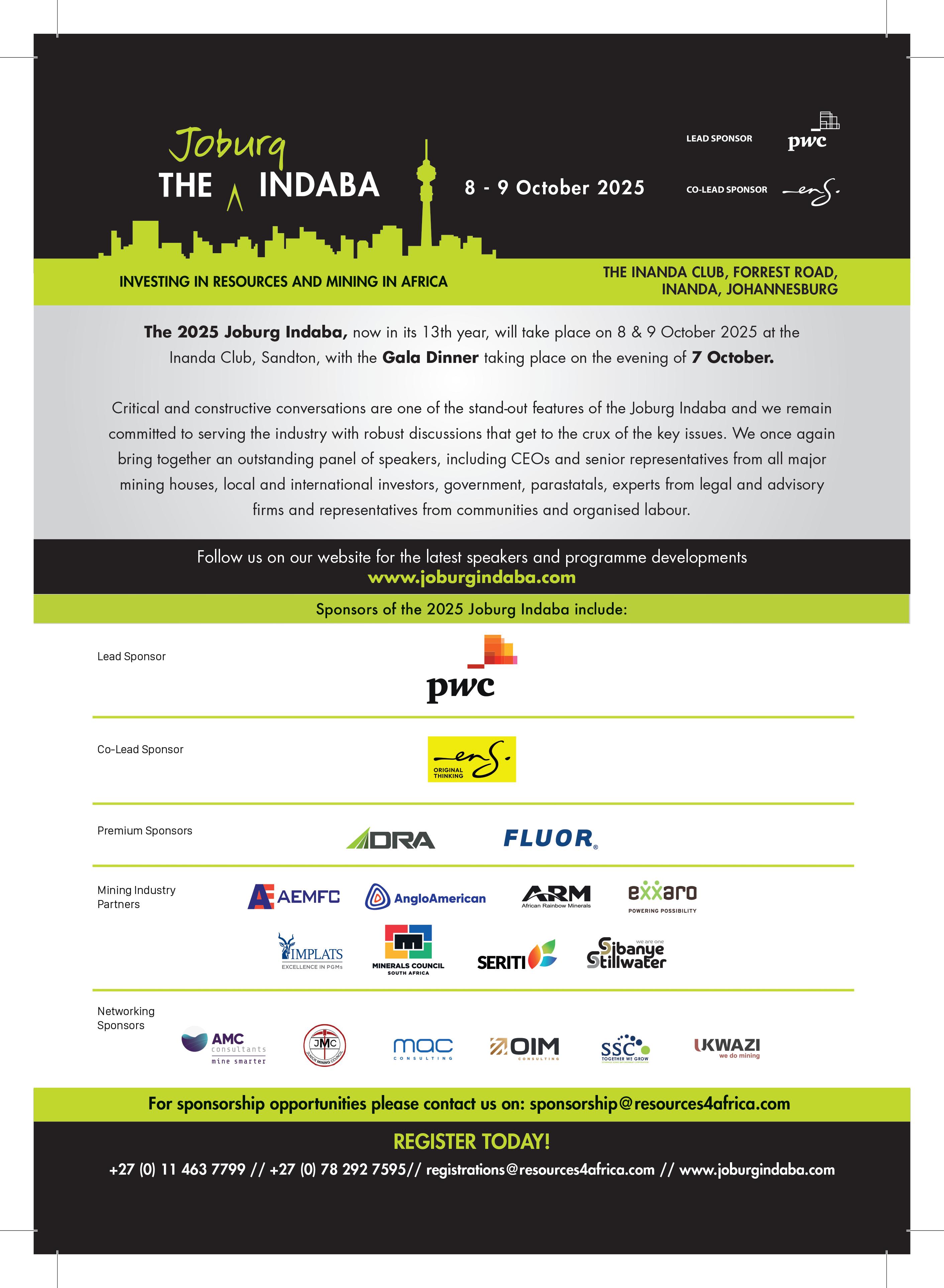
Power generation is a major driver of production, but mitigating emissions from the combustion process is vital. This is where Steinmüller Africa, under the directorship of Moso Bolofo, is delivering solutions
In the world of technological advancements—regarding mining and engineering excellence, and various power resources—Moso Bolofo, director of Steinmüller Africa, provides invaluable insight into these sectors and what they represent for him and his company as a major player in the industry.
Steinmüller Africa specialises in manufacturing, power generation and environmental technology in industrial plants, among others. Established in 1962, it has been a cornerstone of engineering excellence for decades. From designing cutting-edge industrial facilities to implementing advanced technologies, the company is dedicated to delivering solutions that exceed expectations.
Bolofo says engineers in various fields focus on power generation as a major driver of production, but mitigating emissions from the combustion process is vital. This is an ongoing dialogue and initiative in South Africa, he asserts.
The African Mining News team sat down with Bolofo at this year’s Enlit Africa Expo, hosted at the Cape Town International Convention Centre.
The company’s collaboration with several business partners at this year’s expo was critical. Steinmüller Africa’s core involvement and manufacturing in power, mining, pulp and paper, petrochemical and other industries spans the globe. It offers professional—and, most importantly—sustainable input and expertise with mechanical and innovative engineering designed for the future, while analysing ongoing rates of success of multiple projects.
This forms the framework for the business; one that Bolofo says is important to form opinions and drive issues forward intrinsically. In the
company’s effort to build successful business relationships through collaboration, Bolofo said: “We have to drive a co-ordinated effort in order to grow the industry, grow the economy … while mitigating negative environmental impacts.”
It is Steinmüller Africa’s well-rounded approach to these value chains that forms its long-term mission to be an effective multidisciplinary partner covering all the bases pertaining to the life cycles in the process industry.
Bolofo emphasised that major industrial plants localised in Africa and South Africa form part of a much bigger picture, generating skills development within Africa and supporting funding for students specialising in this field. Steinmüller Africa is a leading industrial services provider, one that Bolofo is proud to be part of, explaining that funding students in this field of work at Wits University, the University of Cape Town and other technikons “is at the core of what we try and do”.
Apart from fuelling Africa’s next generation of entrepreneurs and industry leaders, Steinmüller Africa builds bridges continuously. Each phase— from consulting to its tailored services and upholding the most impeccable values of safety, to the maintenance of plant expansion—forms part of the company’s mission to deliver the best in technological advancement and expertise.
We asked Bolofo about some of the main factors involved in furthering growth on the African continent, regarding environmental technology.
“We have had our engineers take part in conferences like Enlit Africa, looking at what impact we could have on power generation plants, the numerical analysis that models things like combustion and so
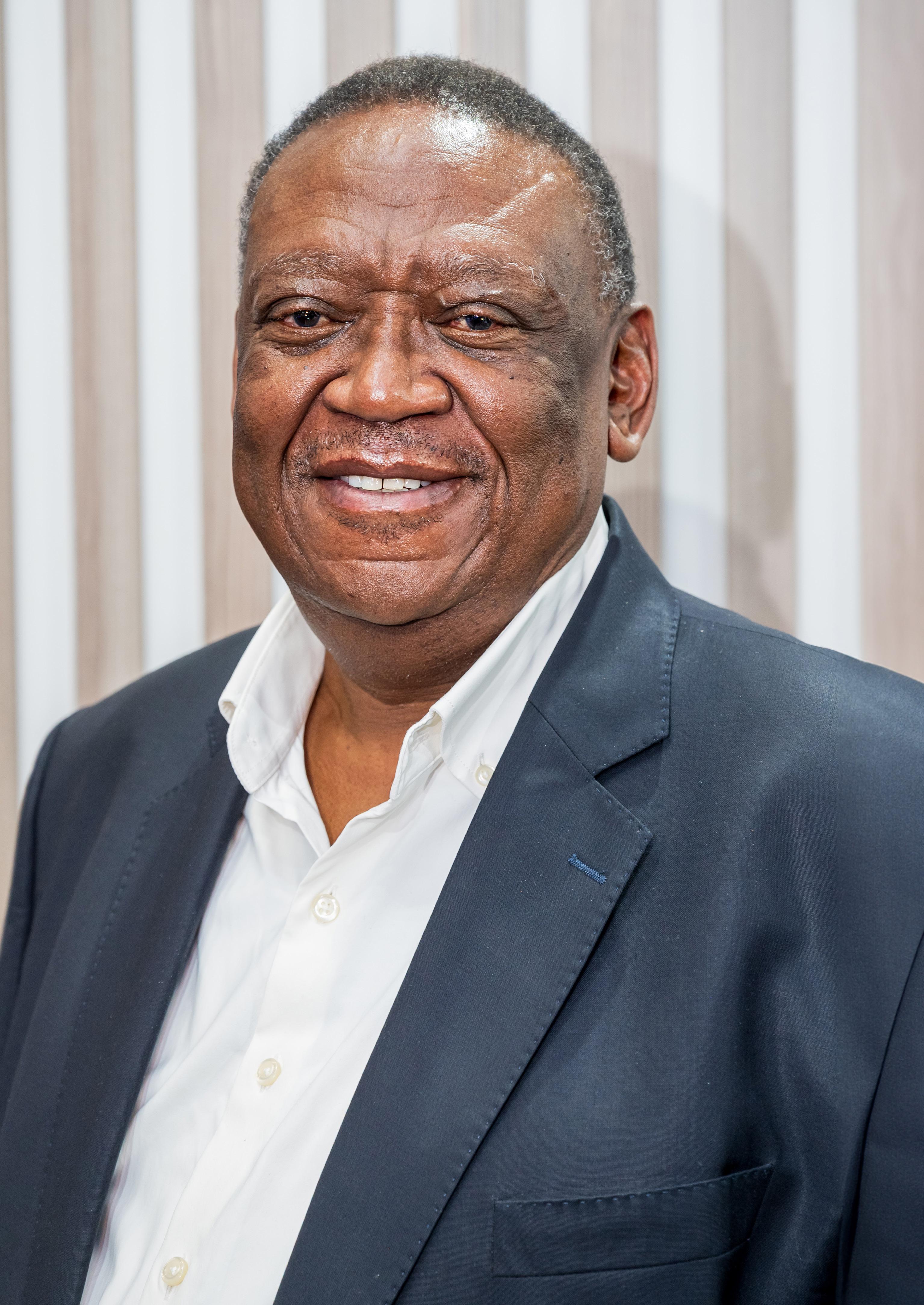
forth. Which then enables us to design plants by using the latest alloys, for instance, you can use higher temperatures. This allows you to use less coal for the same output; you use less water for the same output. We also have the ability to assist plants, about which we are quite excited, and the new strategies for mitigating emissions, such as carbon capture and the like, ” he explained.
“Our capability in the sector for manufacturing, installation and supporting clients will play quite a good role in ensuring that as we progress we continue to maintain the coal plants and mitigate emissions. That’s what we need overall.”
Bolofo expanded on this: “We have also been acting quite actively with CSP [concentrated solar power] plants, using steam to generate electricity. So we are looking at a whole variety of activities in the power generation industry.”
When asked about the mining sector in South Africa and Africa as an inseparable infrastructure of societal development and sustainability, Bolofo crucially indicated that the narrative of the past has changed dramatically. “What I am happy about is that throughout the continent, politicians as well as industries have come to accept that we need to grow and industrialise. With our mining resources, we have to find ways of optimising these, how we use them and what we do to negate some of the associated negatives.
“However, at the end of the day, the issue is that we must use those resources for the 600-odd million people who don’t have access to things like electricity and so on—it’s going to take our mining resources to get to that point.”
He continued , “If you look at the IRP [Integrated Resource Plan]
and the provision of electricity, going forward many of the mining houses are the ones will be generating their own resources [as independent power producers, IPPs] in order to increase their output—and possibly selling back some of that electricity and so on. But at least this is self-sufficient. All these issues are around there being no finance, but our miners already have that in place. These are the very first people you can be sure will play a big role in the IPP space.”
Bolofo stressed that the growth of the economy will depend heavily on the mining sector. “This is part of the backbone. And when you look at new technologies—whether it’s smartphones or electric vehicles or whatever else—these are manufactured using specialised [critical] minerals. These can be found right here on the African continent. People are saying we must beneficiate these minerals and manufacture our own products rather than buy finished goods [from other countries]. I can foresee that for our coming generation, that’s where the growth will be. Hence, it is important that we develop the skills to be able to do it for ourselves.”
How has Steinmüller Africa built sustainable and equitable solutions for the future? The director’s answer was well-informed, saying that minerals and mining technologies work hand in hand with the IRP. “These technologies are required together, to move industry forward. But at the same time, you cannot underplay the large number of artisanal skills needed so that we continue to grow. Which makes us quite independent as South Africa in dealing with the requirements for the future,” he commented.
We enquired how important it is to encourage African and local leaders to demonstrate skills development in the industry. “We are a level-one BBBEE accredited company, so there are various [requirements to be met]. And for us, it’s vitally important both in our manufacturing facilities and locally grown skills in terms of devising solutions for problems.

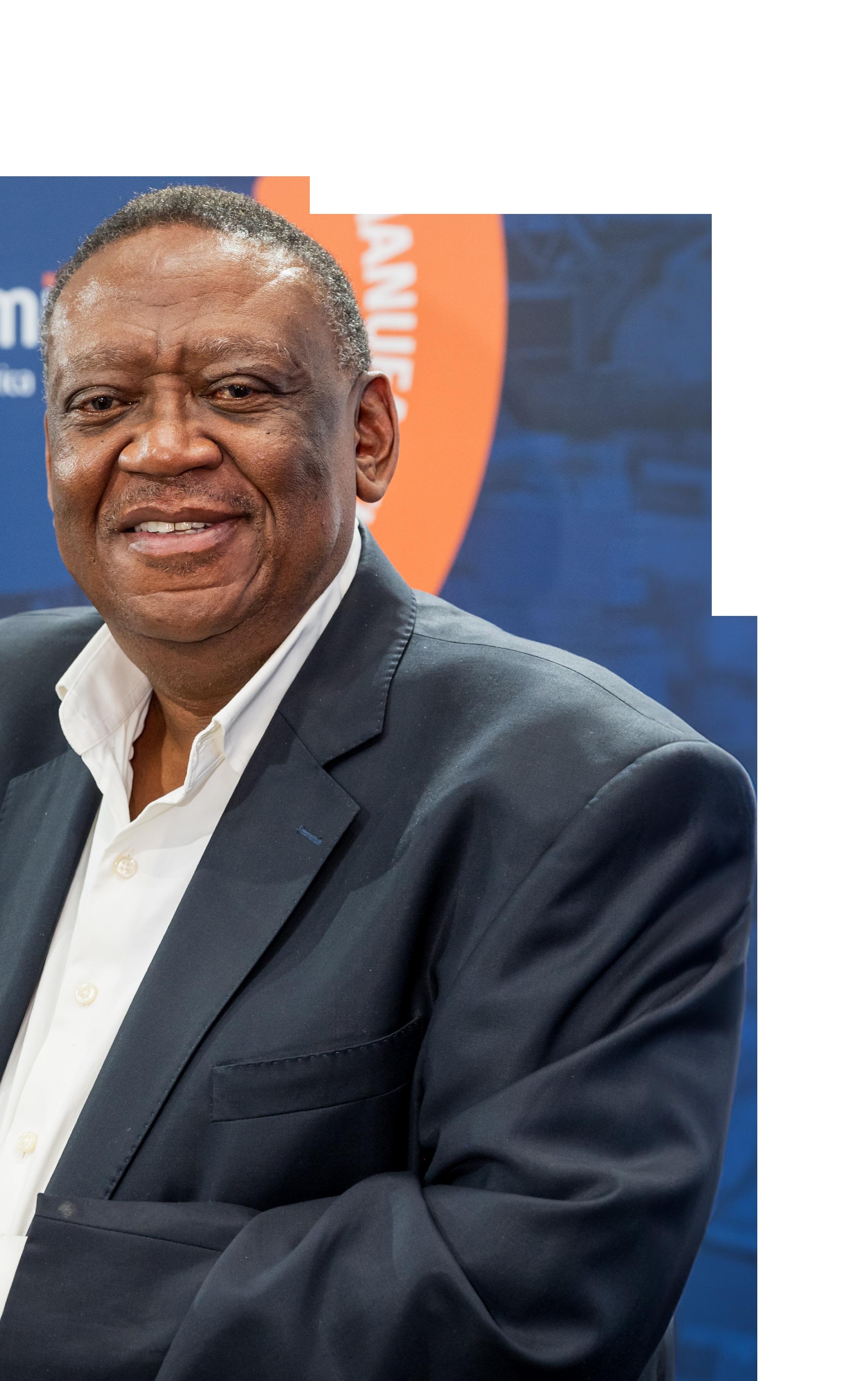
“With regard to locally developed skills, our business model is to support our clients right through the lifecycle of their plant: whether that’s a concept or design, manufacturing or installation of that plant. Or ongoing maintenance—life extension as well as dismantlement. As much as we were originally a company with roots in Germany, everything we’re doing now is locally grown. And that, for me, is a great thing.”
Bolofo’s execution of Steinmüller Africa’s vision and innovation in energy efficiency, concerning environmental and mineral engineering, is nothing short of brilliant. He has defined a novel narrative that spearheads sustainability, working hand in hand with the mining sector and many areas of energy production. Demystifying what once lay in the past to create a new lens for the future: one of generational change, of artisanal prowess and of a self-sustaining industry.
For more information, visit www.bilfinger.com/en/za.

Cost effective, locally pioneered proprietary solutions providing:
• Recovery and refining of base and precious metal values from complex solid and liquid wastes
• Development of hydro and pyro-metallurgical extraction solutions for the mining and petrochemical industry
• In house analytical laboratory services for the analyses of major, minor and trace ele ments
• Critical pre-analysis preparation of samples from drying, crushing and pulverising
Cost effective, locally pioneered proprietary solutions providing:
• Fire Assay facilities for the collection and determination of precious meta ls For a winning solution ... speak to us
• Recovery and refining of base and precious metal values from complex solid and liquid wastes.
• Development of hydro and pyro -metallurgical extraction solutions for the mining and petrochemical industry
• In house analytical laboratory services for the analyses of major, minor and trace ele ments.
• Critical pre-analysis preparation of samples from drying, crushing and pulverising • Fire Assay facilities for the collection and determination of precious meta ls. ution ... speak to us

yolanda@goldenpond67.co.za www. goldenpond 67. co. za
How a South African leader in hydro- and pyrometallurgy is redefining laboratory excellence and building the future of metals recovery
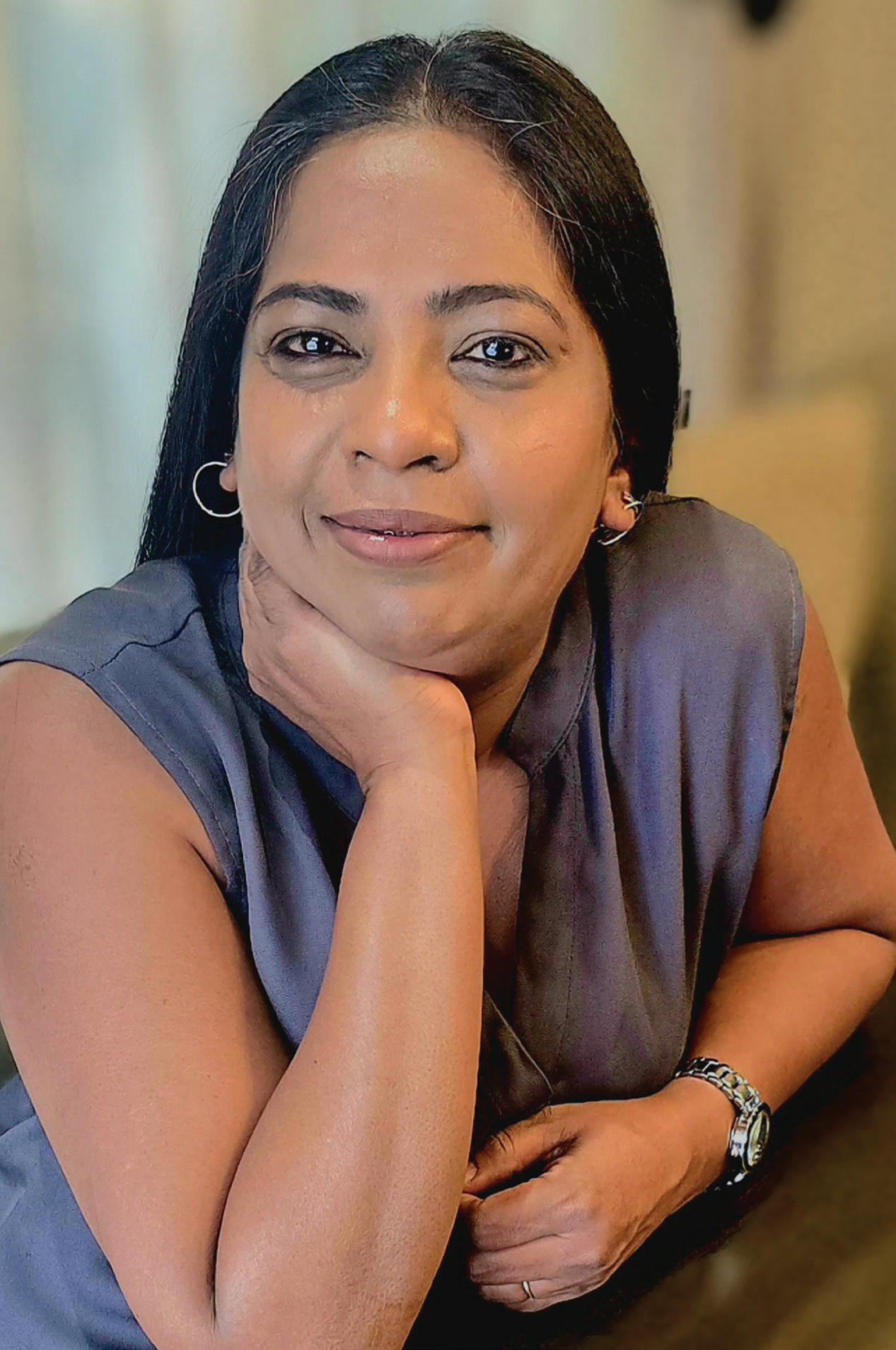
Yolanda Niharoo
Managing Director, Golden Pond Trading 67 (Pty) Ltd
MBA | National Diploma in Analytical Chemistry
In the heart of Roodepoort, Gauteng, a quiet but significant revolution in metallurgy is taking place. Golden Pond 67, a hydro- and pyrometallurgical enterprise founded in 2004, has grown into one of South Africa’s most respected names in the recovery of precious metals and the production of specialised metal chemicals.
What sets the company apart is not only its ability to extract value from waste and complex materials but also its world-class laboratory services and continuous investment in research and development (R&D).
Golden Pond 67 is more than just a metals recovery business: It is a company where scientific rigour, sustainability and innovation converge to unlock value for the mining sector and beyond.
Golden Pond 67 was founded more than two decades ago by Dr Gerhard Overbeek, Dr Sanjeev Debipersadh and Jacobus Petrus (Kobus) van den Bergh: three seasoned professionals with extensive backgrounds in metallurgy, chemical engineering and mineral processing. Their vision was clear: to bridge the widening gap in South Africa’s capacity for the recovery and refining of precious metals from waste streams, low-grade material and secondary resources.
Dr Overbeek, a technical visionary, laid down much of the scientific foundation that still guides the company today. His mentorship of Dr Debipersadh ensured that institutional knowledge was carried forward when he retired in 2019.
Today, under the leadership of managing director Yolanda Niharoo, Golden Pond 67 has flourished as a debt-free, black economically empowered privately owned company with a reputation for reliability and excellence.
Golden Pond’s leadership team combines deep technical expertise with strong business acumen:
Yolanda brings nearly three decades of experience in analytical chemistry and a strong portfolio of qualifications that extend into business administration that includes a Master of Business Administration (MBA), compliance and safety management. Her blend of technical and regulatory knowledge ensures the company’s operations meet the highest standards while positioning it for sustainable growth.
Dr Debipersadh, now technical director, embodies the company’s dual commitment to engineering excellence and sustainability. With a PhD in Environmental Management alongside qualifications in chemical engineering, taxation and a Master of Business Administration (MBA), he has been instrumental in shaping Golden Pond’s eco-friendly processes and expanding its production capacity.
Meanwhile, co-founder Van den Bergh contributes over 45 years of experience in metallurgical operations and strategy, anchoring the company’s work in both technical and commercial realities. His expertise is further strengthened by a Master of Business Administration (MBA).
Together, this leadership trio exemplifies Golden Pond’s
philosophy of balancing science, sustainability and business sense.
If Golden Pond 67 is an engine for value recovery, then its in-house laboratory is the beating heart that powers it. Accredited by the South African National Accreditation System (SANAS) since 2010, the lab is internationally recognised for its technical competence and quality assurance.
The facility is equipped with two inductively coupled plasma optical emission spectroscopy (ICPOES) instruments: state-of-the-art tools that provide high-precision elemental analysis across a vast range of materials. These instruments allow the lab to accurately determine the presence and concentration of precious metals, even in highly complex waste streams or low-grade material.
Supporting the ICP-OES instruments are fire assay facilities and a comprehensive sample preparation suite. Fire assay, a time-honoured method still regarded as the gold standard for precious metal analysis, complements the speed and precision of modern spectroscopic techniques. Together, these capabilities allow Golden Pond 67 to deliver rapid, reliable results to its clients—an invaluable service in industries where accuracy translates directly into profitability.
But the company does not stop there. Recognising the growing demand for its services, Golden Pond has already earmarked funds to expand its laboratory capacity with additional advanced equipment. This proactive investment strategy ensures the lab will continue to meet the sector’s rising analytical needs while maintaining short turnaround times and uncompromising quality.
“Our lab is not just a support function—it is a cornerstone of our refining operations,” says Yolanda. “It gives us the agility to analyse, adapt and refine processes in real time, ensuring maximum recovery and purity. Our analytical capabilities not only validate our processes but also open new doors for innovation and growth. The lab is where ideas are tested, refined and transformed into value for our clients.”
Precious metals recovery is rarely straightforward; feedstocks can range from low-grade effluents to highly variable industrial residues. Off-the-shelf methods seldom work. Instead, Golden Pond 67 thrives on innovation, leveraging its scientific depth to develop tailored hydro- and pyrometallurgical processes for each material profile.
Its in-house R&D division develops customised techniques to recover platinum group metals (PGMs), gold and base metals from materials that would otherwise be deemed uneconomical or too complex to process. This agility has helped the company carve out a niche. Whether buying material outright or refining on behalf of clients, Golden Pond 67 consistently delivers recoveries that maximise value.
The company’s portfolio includes processing spent low-grade catalysts, petrochemical low-grade residues and low-grade effluents. Each material stream is unique, and Golden Pond’s scientists and engineers take pride in designing bespoke recovery procedures. This capability not only maximises yields but also reduces waste, making the company a key partner for mining operations, refineries and industrial producers alike.
Such R&D efforts are not confined to process development alone. They extend into the optimisation of eco-friendly technologies, from reagent recovery to water reuse. For example, Golden Pond’s electro-winning plant not only extracts valuable metals but also recovers reagents from effluent waste, repurposing them in ongoing processes. This approach reduces costs, conserves resources and strengthens the company’s circular economy model.
Dr Debipersadh emphasises that research is not an optional extra: “In our sector, materials are increasingly complex. Without in-house R&D, you fall behind. We’ve made innovation a core business function, ensuring we can keep unlocking value from feedstocks others would consider waste.”
In an era where environmental, social & governance has become central to business reputation and investor confidence, Golden Pond 67 stands out for its proactive sustainability practices.
The company operates with reverse-osmosis systems to treat and recycle wastewater contaminated with heavy metals, sulphates and industrial effluents. Energy conservation measures, such as eliminating non-essential power use, further reduce its environmental footprint. Its waste recovery model minimises hazardous materials sent to landfills and ensures compliance with South Africa’s environmental legislation.
From its founding, Golden Pond 67 has operated with sustainability in mind; its emphasis on health and safety is as rigorous as its scientific methods. The company adheres to the Occupational Health and Safety Act (OHSA 85 of 1993) and currently holds a prestigious five-star NOSA accreditation—a benchmark for excellence in operational risk management.
Equally important is the company’s dedication to people development. Through mentorship programmes, in-house training, internships and bursaries, Golden Pond 67 ensures knowledge transfer in hydro- and pyrometallurgy as well as analytical chemistry.
It invests heavily in internal training, workplace safety and professional development. Senior managers mentor younger staff in hydro- and pyrometallurgy as well as analytical chemistry—ensuring knowledge transfer between generations.
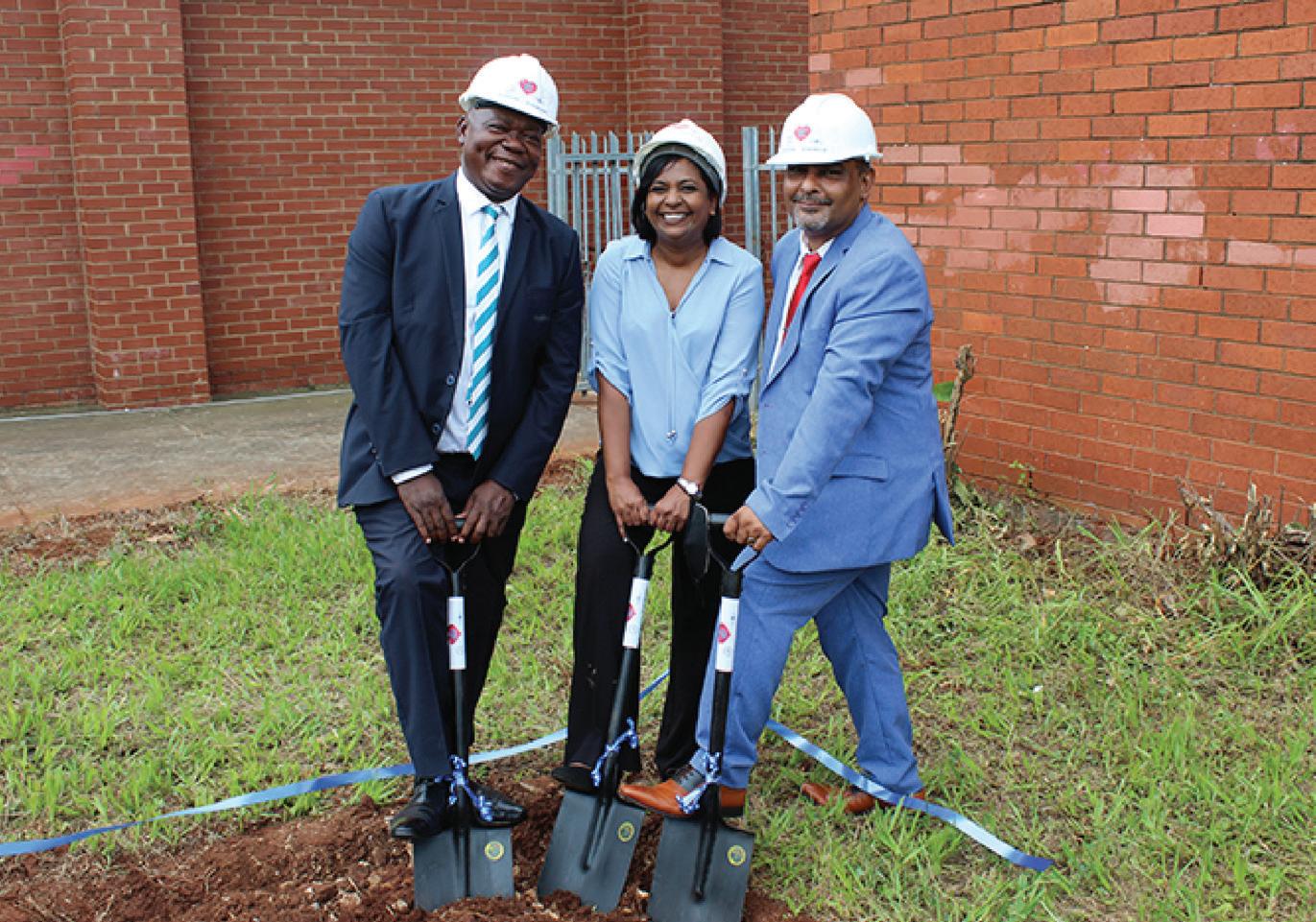
The internship and bursary programmes offer students practical experience in its labs and plants. These initiatives not only strengthen the pipeline of local talent but also reinforce Golden Pond 67’s commitment to employment equity—the latter of which remains central, with strong representation of women and historically disadvantaged groups in leadership positions.
Golden Pond 67’s sense of responsibility extends well beyond its gates. Its flagship corporate social responsibility programme is its long-term partnership with Strelitzia Secondary School. The company has funded and built fully equipped science and physics laboratories, established a computer science centre, and provides annual upkeep funding to ensure these facilities remain functional. Tutoring programmes for Grade 10–12 students further reflect Golden Pond’s belief that education is the foundation for lasting social and economic progress.
“Supporting education is supporting the future of South Africa. Education is where our impact multiplies,” says Yolanda. “By investing in science education, we are investing in the next genera-
tion of metallurgists, chemists and leaders.”
Golden Pond 67 contributes significantly to South Africa’s economy, both by recovering valuable metals and by enabling mines to monetise lowgrade or waste materials. In doing so, it alleviates pressure on primary resources, supports local employment, stimulates the recycling economy and generates exportable refined metals that boost foreign exchange earnings.
The company also plays a critical role for small- and mid-tier mining operations by making advanced refining services accessible and affordable. Its reputation for reliability and scientific rigour has made it a trusted partner across the value chain.
Golden Pond 67 is not resting on its achievements. Current projects include beneficiation of metals from increasingly complex materials such as low-grade effluents and spent catalysts and PGM residues. The company is also exploring expansions to its laboratory infrastructure to support higher volumes and more sophisticated analyses.
With the continued integration of advanced instrumentation and
eco-friendly processes, Golden Pond is positioning itself not only as a refiner but also as a research-driven hub of metallurgical innovation in southern Africa.
Golden Pond 67’s story is one of scientific excellence put into service of industry and environment alike. From its SANAS-accredited laboratory to its in-house R&D team, the company has cultivated a reputation for precision, innovation and sustainability. At a time when the mining sector faces mounting pressures—from volatile markets to environmental accountability—Golden Pond provides a model of how science and business can come together to create value while reducing impact.
As it expands its laboratory capabilities and continues to pioneer tailored recovery processes, it stands at the forefront of metallurgical innovation in South Africa. With global demand for PGMs and other metals remaining strong—driven by sectors from automotive catalysts to renewable energy technologies—the company’s role as a recovery and refining partner is more critical than ever.
As Yolanda reflects, the journey of Golden Pond 67 is far from complete.
“We’ve built a business on science and integrity. But what excites me most is how much more we can do: in the lab, in sustainability, in skills development. We are continuously growing, continuously improving. That’s what makes Golden Pond 67 unique.”
With its combination of world-class laboratory services, rigorous R&D and commitment to sustainability, the company will surely remain a key player in the southern African mining ecosystem for years to come.
For further information, contact Yolanda Niharoo at +27 (0) 71 604 9787, email yolanda@goldenpond67.co.za or visit www.goldenpond67.co.za.

Maisha Social Solutions was established in 2016, and over the last nine years has worked with several large-scale mining companies and renewable energy projects on topics critical to social performance, environmental management and governance.
Geralda Wildschutt is committed to leveraging her influential roles as CEO of Maisha Social Solutions and as independent board director of Caledonia Mining Corporation Plc and Northam Platinum Holdings, to support sustainability in the mining and renewable energy sectors across Africa. She has over 30 years of working experience across management, mining, banking and the social sector.
Wildschutt explains that executives and boards have to understand the criticality of building trusting relationships with the governments and communities that host mines and renewable energy plants i.e. the elusive social licence to operate (SLTO). With poor relationships and no SLTO in place, the end result is often conflict, and the ‘cost of conflict’ can be high— when communities block roads and operational stoppages occur.
She points out that it is critical for companies working in or considering entering Africa to be knowledgeable about the ‘social’ element of ESG. She explains that when crafting an ESG strategy, the high levels of poverty, unemployment and expectations on
companies from the local communities cannot be ignored.
Working with her team, Wildschutt works from the boardroom to the local community level, helping solve sustainability matters. She believes it is imperative for boards and executives to engage with the communities where their workers live and where their operations may have negative impacts on lives and livelihoods.
Under Wildschutt’s leadership, Maisha Social Solutions has won several accolades and recognition. The company’s gender and recruitment approach led to it winning the Standard Bank Top Gender Empowered Company 2022 award.
One of Maisha’s significant achievements is its numerous repeat and loyal clients. Wildschutt says she is proud to be associated with these clients.
Additionally, she is proud the Maisha team has worked in several countries in 2024 and 2025, including South Africa, Botswana, Namibia and the Democratic Republic of the Congo. “The company has also made it
possible for several women to travel and work outside of South Africa,” she adds.
Maisha also invests in training for its employees, including the Social Impact Assessment course with the International Association for Impact Assessment, which Cybil Maneveldt and Nonkululeko Sikakane will complete in 2025.
Wildschutt herself has several personal achievements to her credit. She was the winner in the Mail & Guardian’s Top 50 Power Women 2021 (Mining Woman Category) and a winner in the World Women Leadership Congress Awards 2024.
Maisha Social Solutions is an advisory and consultancy business. Its mission is to “achieve sustainability of our planet, our business and the businesses of our clients.”
Wildschutt says the company believes in staying small and agile to provide tailor-made solutions to clients in all topics of ESG. For example, Maisha assists mining and renewable energy companies to deliver their ESG responsibilities and country-level requirements successfully. She highlights that mining is critical to extract the minerals people need for the green economy, but it is essential to do so responsibly to protect the environment and the people.
Maisha is known for effectively doing social research, stakeholder engagement planning, land use management, physical and economic displacement planning, corporate social responsibility strategies, public participation processes, human rights due diligence, socio-economic impact studies, and more.
Wildschutt finds it enormously satisfying to work with clients in a very hands-on way, discussing their challenges, doing social research in communities across southern Africa, and providing solutions to executives.
“Sustainability is our business,” Wildschutt says. Maisha Social Solutions assists companies in achieving
sustainability, with a focus on the planet and people. She points out that the business case has been made: Companies cannot be sustainable if they solely drive a profit agenda while ignoring their negative impacts on the environment and people.
“We advise and support companies to achieve their triple bottom-line goals,” Wildschutt says. “As a business, Maisha also invests in social projects, with a strong focus on gender-based violence and femicide (GBVF).
Maisha has funded the Feminist Clinic hosted by the Women’s Legal Centre in 2024 and 2025. The Women’s Legal Centre works toward the advancement of women’s right to bodily autonomy and to be free from violence. Its Feminist Clinic ensures female lawyers are equipped to render services in a society where GBVF is pervasive. The social investment projects that Maisha chooses are mostly in support of women.
Wildschutt firmly believes all companies must play a role in the protection of the planet. They must focus on crafting strategies for climate action, biodiversity, water management and land management. In addition to that, they have to understand the interconnectedness of the critical risks in each
jurisdiction where they want to do business, she says.
She shares that she attended workshops arranged by the Climate Governance Initiative and the World Economic Forum, in June 2024. These workshops brought a number of board directors together on the topic of “Mobilising Directors for Climate Action”. By attending, she learnt about the strategies of various companies.
Wildschutt asserts it is vital for all independent directors and executives on boards to continue to learn and stay in touch with a fast-changing world. Because the issues of artificial intelligence, cybersecurity, extreme weather conditions as well as social challenges of extreme poverty and food insecurity will require interventions from businesses.
For further information, email geralda@maishasocialsolutions.co.za or telephone +27 (0) 71 857 4147.
It is critical for companies working in or considering entering Africa to be knowledgeable about the ‘social’ element of ESG
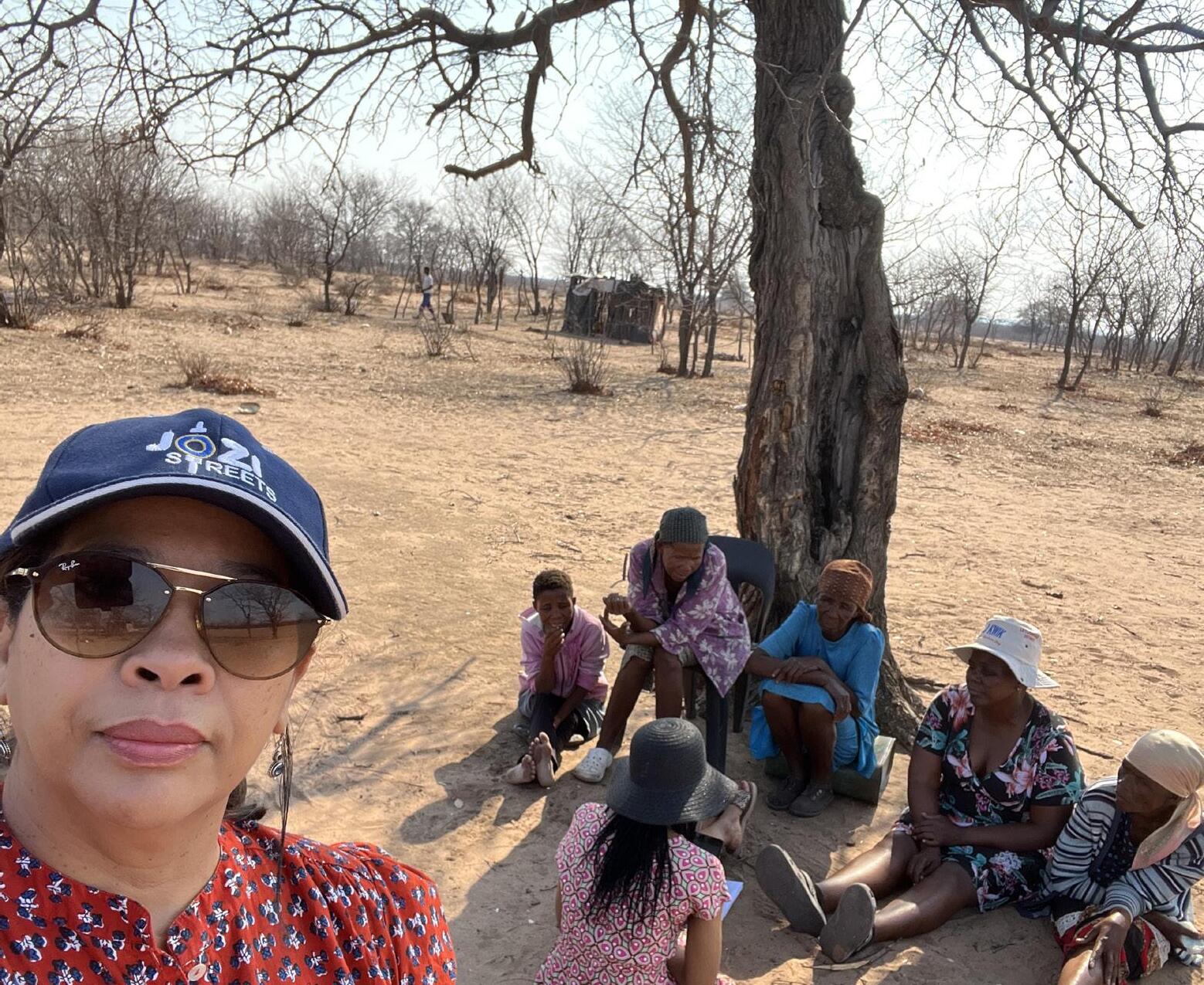

How making sand from ore could solve a looming crisis
We must and will take a proactive role in mining ventures, from equity stakes to operational partnerships.
Every year, the world consumes around 50 billion tonnes of sand, gravel and crushed stone. The astonishing scale of this demand is hard to comprehend—12.5 million Olympic-sized swimming pools per year, making it the most-used solid material by humans.
Most of us do not see the sand and gravel all around us. It is hidden in concrete footpaths and buildings, the glass in our windows and in the microchips that drive our technology.
Demand is set to increase further: even as the extraction of sand and gravel from rivers, lakes, beaches and oceans is triggering an environmental crisis.
Sand does renew naturally, but in many regions, natural sand supplies are being depleted far faster than they can be replenished. Desert sand often has grains too round for use in con-
struction, and deserts are usually far from cities; while sand alternatives made by crushing rock are energyand emissions-intensive.
But there is a major opportunity here, as we outline in our new research (tinyurl.com/ccfbdu86). Every year, the mining industry crushes and discards billions of tonnes of the same minerals as waste during the process of mining metals. By volume, mining waste is the single largest source of waste we make.
There is nothing magical about sand. It is made up of particles of weathered rock. Gravel is larger particles. Our research has found companies mining metals can get more out of their ores, by processing the ore to produce sand as well.
This would solve two problems at once: how to avoid mining waste, and how to tackle the sand crisis. We dub this ‘nose-to-tail’ mining, following the trend in gastronomy to use every part of an animal.
The metal sulphides, oxides and carbonates that can be turned into iron, copper and other metals are only a small fraction of the huge volumes of ore which have to be processed. Every
year, the world produces about 13 billion tonnes of tailings—the groundup rock left over after valuable metals are extracted—and another 72 billion tonnes of waste rock, which has been blasted but not ground up.
For decades, scientists have dreamt of using tailings as a substitute for natural sand. Tailings are often rich in silicates, the principal component of sand.
But to date, the reality has been disappointing. More than 18 000 research papers have been published on the topic in the last 25 years. But only a handful of mines have found ways to repurpose and sell tailings.
Why? First, tailings rarely meet the strict specifications required for construction materials, such as the size of the particles, the mineral composition and the durability.
Second, they come with a stigma. Tailings often contain hazardous substances liberated during mining. This makes governments and consumers understandably cautious about using mining waste in homes and our built environment.
Neither of these problems is insurmountable. In our research, we propose a new solution: manufacture sand directly from ore.
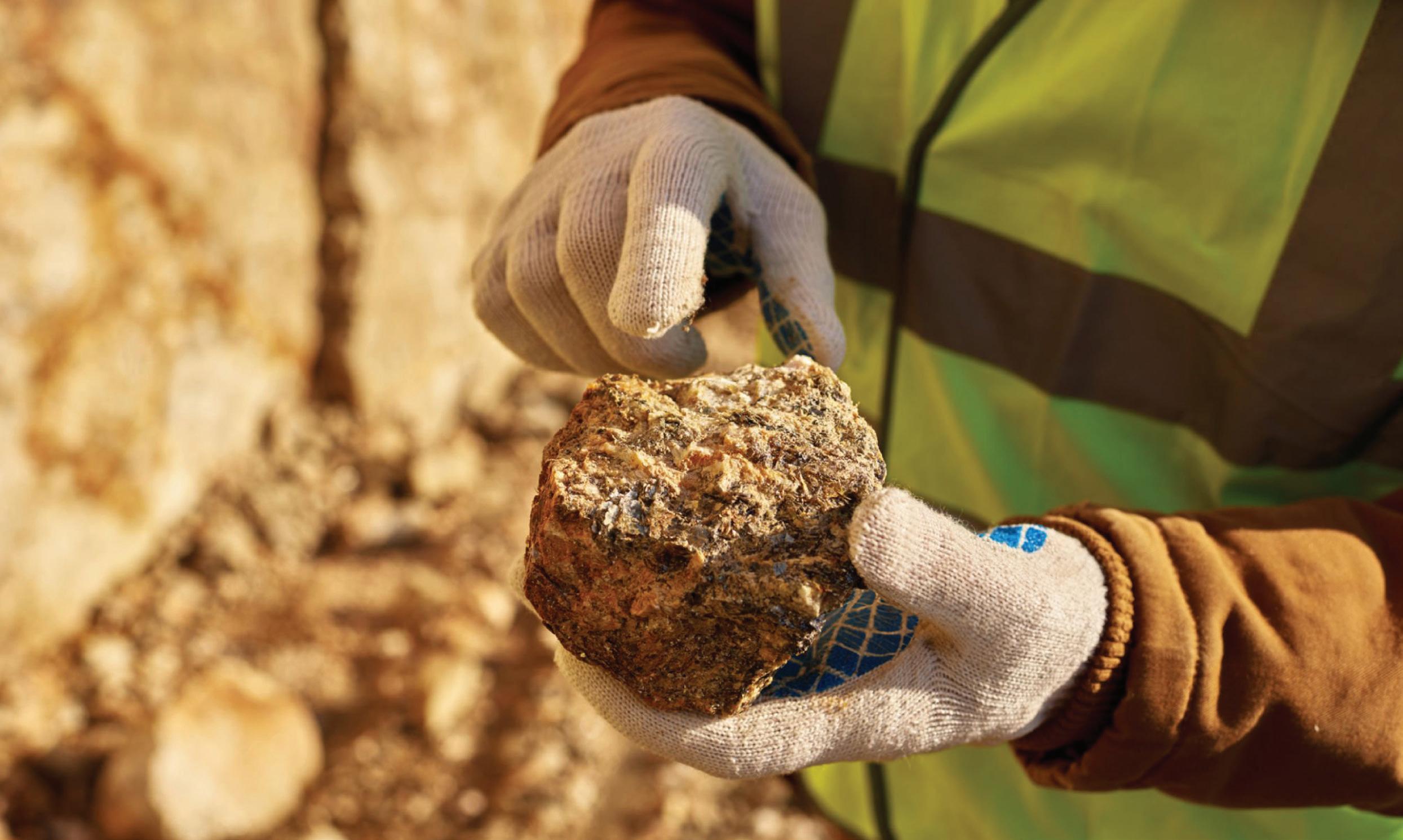
Converting rock into metal is a complex, multi-step process that differs by type of metal and by type of ore. After crushing, the minerals in the ore are typically separated using flotation, where the metal-containing sulphide minerals attach to tiny bubbles that float up through the slurry of rock and water.
At this stage, leftover ore is normally separated out to be disposed of as waste. But if we continue to process the ore, such as by spinning it in a cyclone, impurities can be removed and the right particle size and shape can be achieved to meet the specifications for sand.
We have dubbed this ‘ore-sand’, to distinguish it from tailings. It is not made from waste tailings—it is a deliberate product of the ore.
This is not just theory. At the iron ore mine Brucutu in Brazil, the mining company Vale is already producing one million tonnes of ore-sand annually. The sand is used in road construction, brickmaking and concrete.
The move came from tragedy. In 2015 (Mariana Dam disaster) and 2019 (Brumadinho Dam disaster), the dams constructed to store tailings at two of Vale’s iron ore mines collapsed, triggering deadly mudflows. Hundreds of people died—many of them company employees—and the environmental consequences are ongoing.
In response, the company funded researchers (such as our group) to find ways to reduce reliance on tailings dams in favour of better alternatives (tinyurl.com/c3hssx75).
Following our work with Vale, we investigated the possibility of making ore-sand from other types of mineral ores such as copper and gold. We have run successful trials at Newmont’s Cadia copper-gold mine in Australia. Here, using innovative methods (tinyurl.com/3zhxxds9) we have produced a coarser ore-sand that does not require as much blending with other sand.
Ore-sand processing makes the most sense for mines located close to cities. This is for two reasons: to

avoid the risk of tailings dams to people living nearby, and to reduce the transport costs of moving sand long distances.
Our earlier research showed almost half the world’s sand consumption happens within 100 kilometres of a mine that could produce ore-sand as well as metals. Since metal mining already requires intensive crushing and grinding, we found ore-sand can be produced with lower energy consumption and carbon emissions than the extraction of conventional sands.
For any new idea or industry, the hardest part is to go from early trials to widespread adoption. It will not be easy to make ore-sand a reality.
Inertia is one reason. Mining companies have well-established processes. It takes time and work to intro-
duce new methods.
Industry buy-in and collaboration, supportive government policies and market acceptance will be needed. Major sand buyers such as the construction industry need to be able to test and trust the product.
The upside is real, though. Oresand offers us a rare chance to tackle two hard environmental problems at once: by slashing the staggering volume of mining waste and reducing the need for potentially dangerous tailings dams, and offering a better alternative to destructive sand extraction.
Daniel Franks Professor and Director Global Centre for Mineral Security The University of Queensland
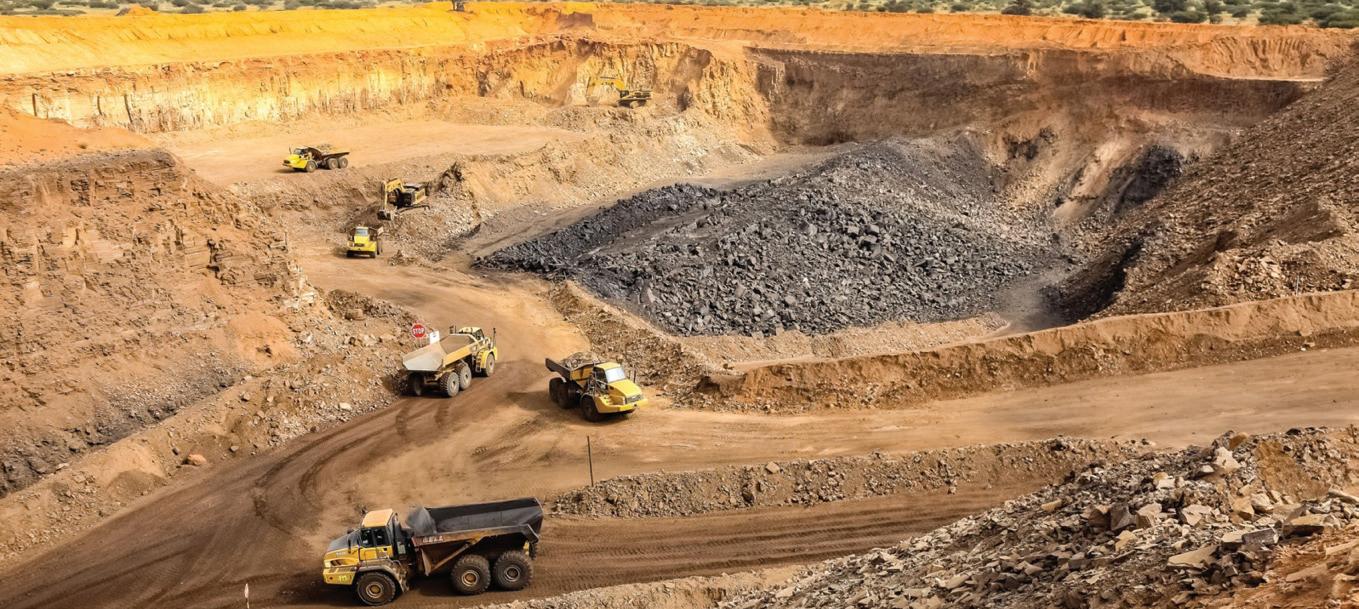
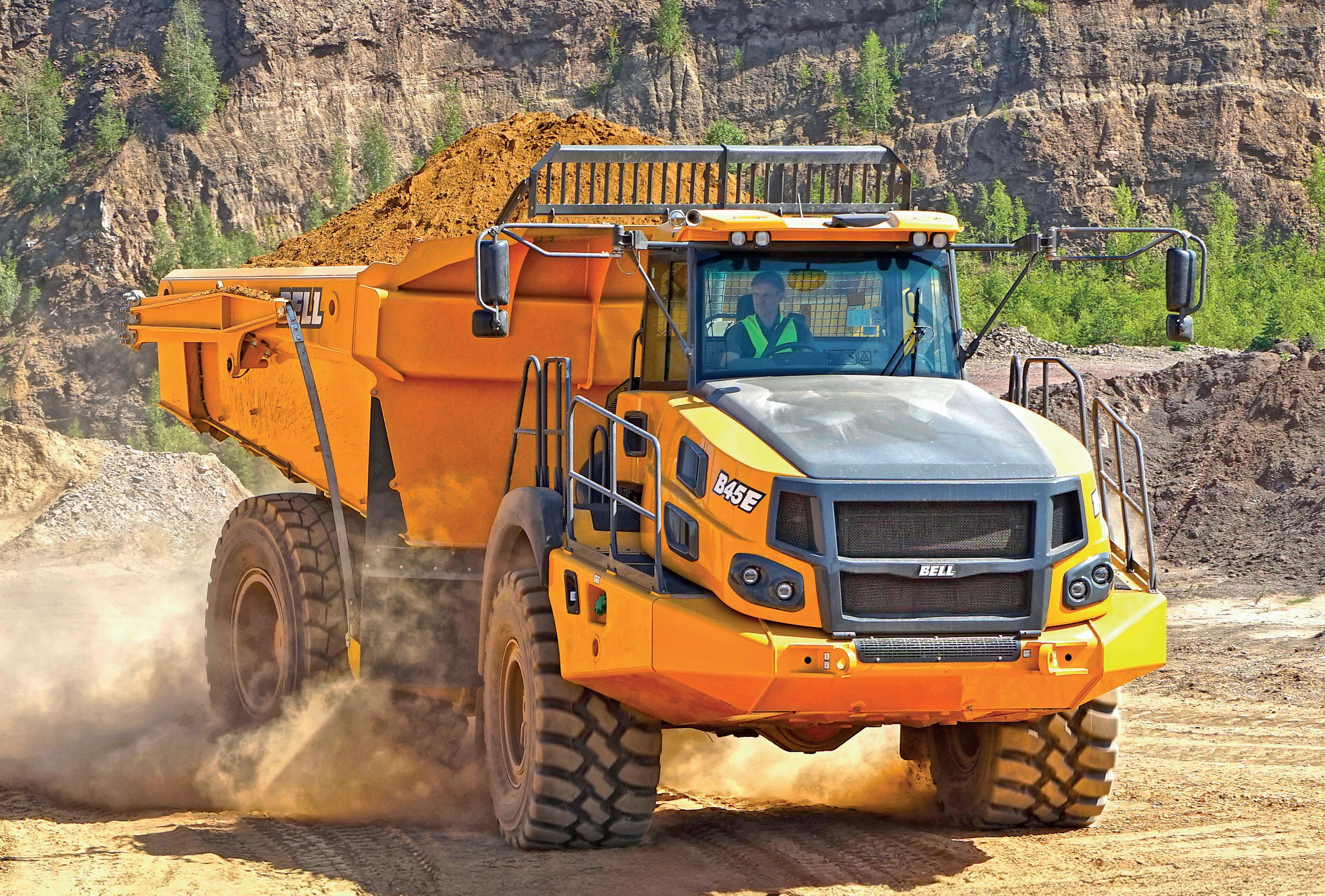







































Not every site needs a 6x6. So why run one when a Bell 4x4 ADT gets the job done smarter? By removing the middle axle, you eliminate tyre scuffing, reduce wear on tyres and road surfaces, and gain a tighter turning circle – perfect for confined spaces.
Enjoy all the performance and productivity you expect from our 6x6 - but at a lower overall cost.

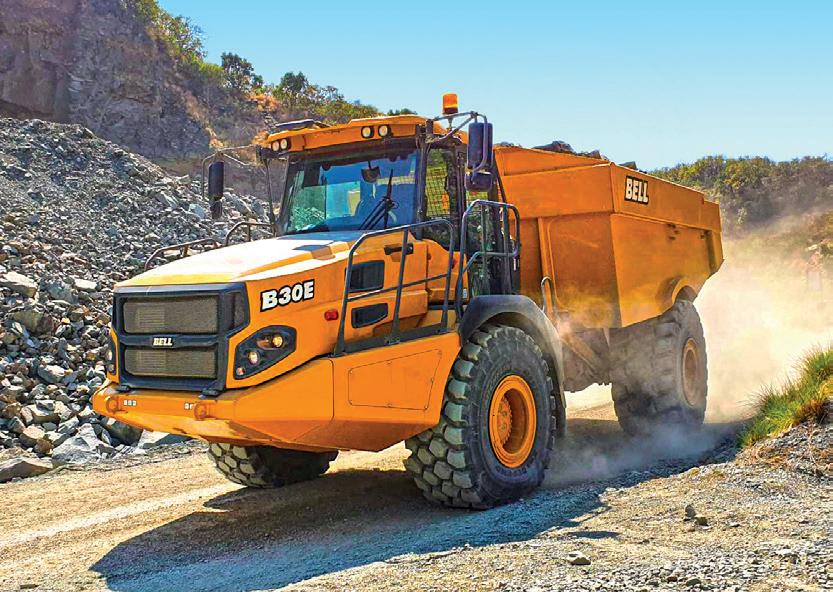






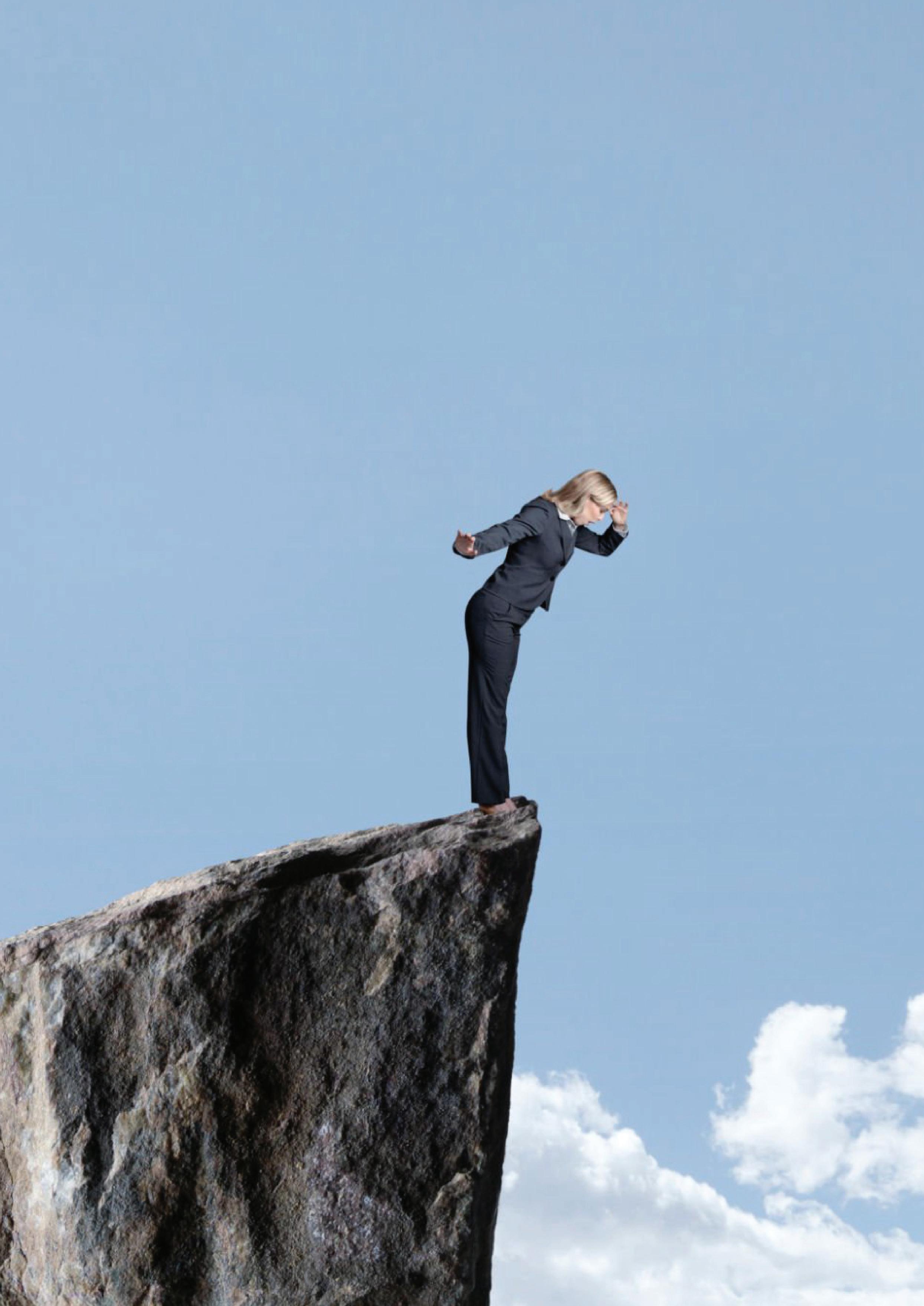
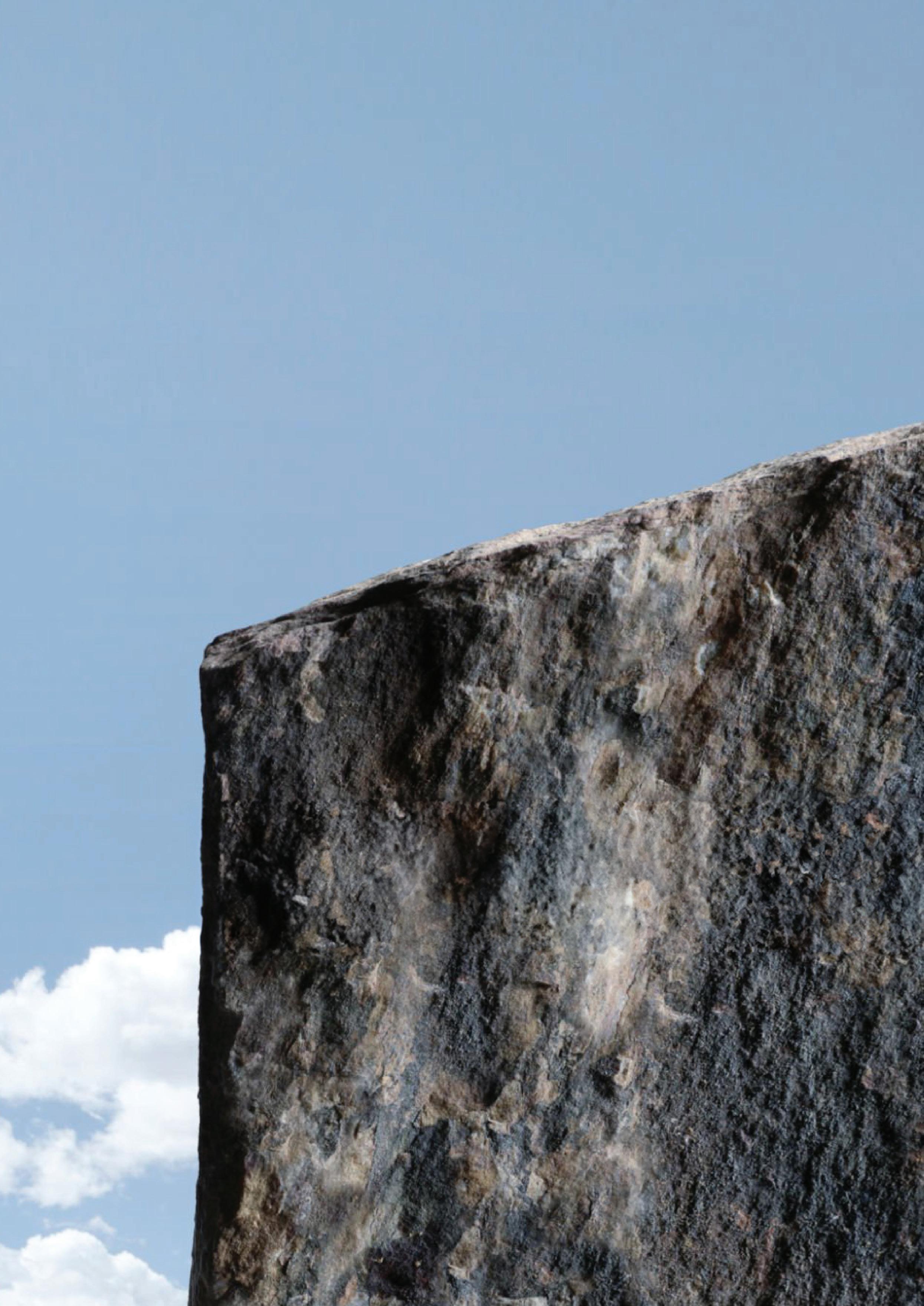
When leadership for women comes at the brink of collapse

Leadership is often portrayed as the pinnacle of success— an acknowledgment of competence, confidence and charisma. But what happens when that opportunity arrives not at the peak of a company’s fortunes but at its most precarious edge?
Welcome to the ‘glass cliff’, a term that describes a subtle yet insidious form of gender bias: women being appointed to top leadership roles during times of crisis, when the risk of failure is at its highest.
The phenomenon does not just challenge notions of progress in gender equity; it calls into question the very conditions under which women are allowed to lead.
Coined by University of Exeter researchers Michelle Ryan and Alexander Haslam in 2005, the term builds on the metaphor of the ‘glass ceiling’—the invisible barrier preventing women from reaching top leadership roles. But while the ceiling implies exclusion, the cliff suggests danger. Their research found that women were more likely to be appointed to leadership positions during times of poor company performance or turbulence—periods where failure is not only more likely, but almost inevitable.
In these moments of crisis, organisations appear willing to gamble on someone ‘different’, often turning to women or people from marginalised backgrounds in the hope that a new face may signal change. But these appointments can be poison chalices.
If things go wrong, the blame lands squarely on the leader, and the woman at the helm becomes the scapegoat for longstanding, systemic problems.
Some of the most well-known business cases illustrate this phenomenon vividly. Take Marissa Mayer, appointed CEO of Yahoo! in 2012. Mayer, a former Google executive, was brought in to revive the ailing tech giant. Despite her efforts to rebrand and restructure, Yahoo!’s decline was already well underway. She resigned in 2017 following the company’s sale to Verizon. While some blamed her leadership, others pointed out the company was already entrenched in years of strategic failure long before Mayer’s tenure.
Similarly, Mary Barra became CEO of General Motors in 2014—the first woman to lead a major global automaker—just as the company was mired in a massive vehicle recall scandal. Her appointment was historic, but her leadership was tested immediately by damage control rather than innovation.
In the world of politics, Theresa May took the reins as United Kingdom Prime Minister after the Brexit vote—a chaotic period in British politics. Her tenure was defined by infighting, failed negotiations and an eventual resignation. Her critics were loud, but few acknowledged the impossible task she had inherited.
In Africa, examples are more nuanced, but equally significant. Phuthi Mahanyele-Dabengwa, appointed CEO of Naspers South Africa in 2019, became the first black woman to lead a major listed company in the country. Naspers was already navigating complicated terrain: reputational concerns, criticism over monopolistic behaviour and a shifting media landscape. While her leadership continues and has not resulted in ‘failure’, it underscores how women in Africa, particularly black women, are often brought into leadership roles at moments that demand enormous repair

work, not just operational but symbolic.
Another example is Mamphela Ramphele, who in 2013 launched a new political party, Agang SA, to contest South Africa’s troubled post-apartheid democracy. While not a corporate case, her appointment as a leader in a fractured political landscape—only to be quickly undermined by internal conflict and party disintegration—mirrors the same dynamics.
In Nigeria, Arunma Oteh, appointed director-general of the Securities and Exchange Commission during a time of financial scandal and public mistrust, faced enormous institutional resistance. Despite her credentials and reforms, she was consistently targeted and eventually forced out. Crit-

ics say she paid the price for trying to clean up a mess she did not create.
The glass cliff is underpinned by cultural stereotypes. Women are often seen as more empathetic, nurturing or collaborative—traits perceived as helpful in a crisis. In other words, when companies need to project an image of change or healing, they often reach for a woman. But once the crisis proves harder to solve than expected, these same traits are used against them: She was too emotional, not decisive enough, lacked strategic focus...
Moreover, the scarcity of leadership opportunities for women means they may feel compelled to accept high-risk roles. As South African businesswoman Irene Charnley once said, “You don’t get to choose the perfect time. You take the opportunity when it comes, and you make it work—even if the odds are stacked against you.”
Several women have spoken out about the challenges of leading from the cliff’s edge. Ngozi Okonjo-Iweala, current director-general of the World Trade Organization and former Nigerian finance minister, is no stranger to high-stakes roles. “Leadership as a
woman in crisis is not new. What’s new is that we’re now naming it. Women aren’t crisis managers by nature—we’ve just been handed the fire and told to put it out.”
South African executive and entrepreneur Basani Maluleke, the first black woman CEO of a South African bank (African Bank), resigned after less than three years, citing personal reasons. But insiders noted her tenure was marked by difficult restructuring decisions and cultural resistance. Reflecting on her journey, Maluleke told Business Day: “Sometimes, the window for change is opened only a crack—and you’re expected to perform a miracle through it.”
And in the corporate world, Indra Nooyi, former CEO of PepsiCo, noted: “As a woman, you’re constantly under the microscope. If you succeed, it’s questioned. If you fail, it’s definitive.”
To dismantle the glass cliff, we must confront the conditions that create it. First, leadership appointments must be paired with support systems: mentorship, governance reform and realistic expectations. Appointing a woman or person of colour in crisis must not be a public relations exercise but a sincere investment in transformation.


Secondly, boards and political organisations must be held accountable for creating inclusive pipelines—not just parachuting women into impossible positions. It is not leadership if the parachute opens just inches from the ground.
And finally, society must stop viewing failure through a gendered lens. Male CEOs often fail upward—leaving one post and landing in another without reputational damage. Women rarely get the same courtesy.
The glass cliff does not reflect a woman’s failure; it reflects systemic failure. Failure to support, failure to nurture diverse leadership earlier, and failure to recognise that placing someone at the helm of a ship already sinking is not empowerment—it’s abandonment.
Leadership should not come only in crisis. Until women are appointed in times of growth as often as they are in times of chaos, true equality will remain elusive.
As Michelle Ryan, co-originator of the term, puts it: “It’s not that women can’t lead in crisis—it’s that they should not only be called upon when all else has failed.”
It is time we stop celebrating the appointment of women to glass cliffs, and start demanding better ledges from which they can soar.
When Tshidi Dlungwane founded Stenda Trading in 2016, she was stepping into one of the toughest industries in South Africa while challenging entrenched perceptions about who belongs in mining.
Today, that pioneering business has grown into the Stenda Group, a diversified enterprise active in mining, technical services, finance and project development. It is a story of resilience, entrepreneurship and a belief in mining’s power to drive economic and social progress.
“The Stenda Group is a family of companies built to drive value across mining, finance and related services,” explains Tshidi, who serves as managing director. “Our portfolio includes Stenda Trading, Stenda Mining, Stenda Finance and Stenda Resources.”
The seed was planted with Stenda Trading, which Tshidi launched after leaving employment at the mines. She had identified a gap in the market: a lack of female-owned, technically focused service providers in the mining sector. “I believe in the power of women and the importance of representation,” she reflects.
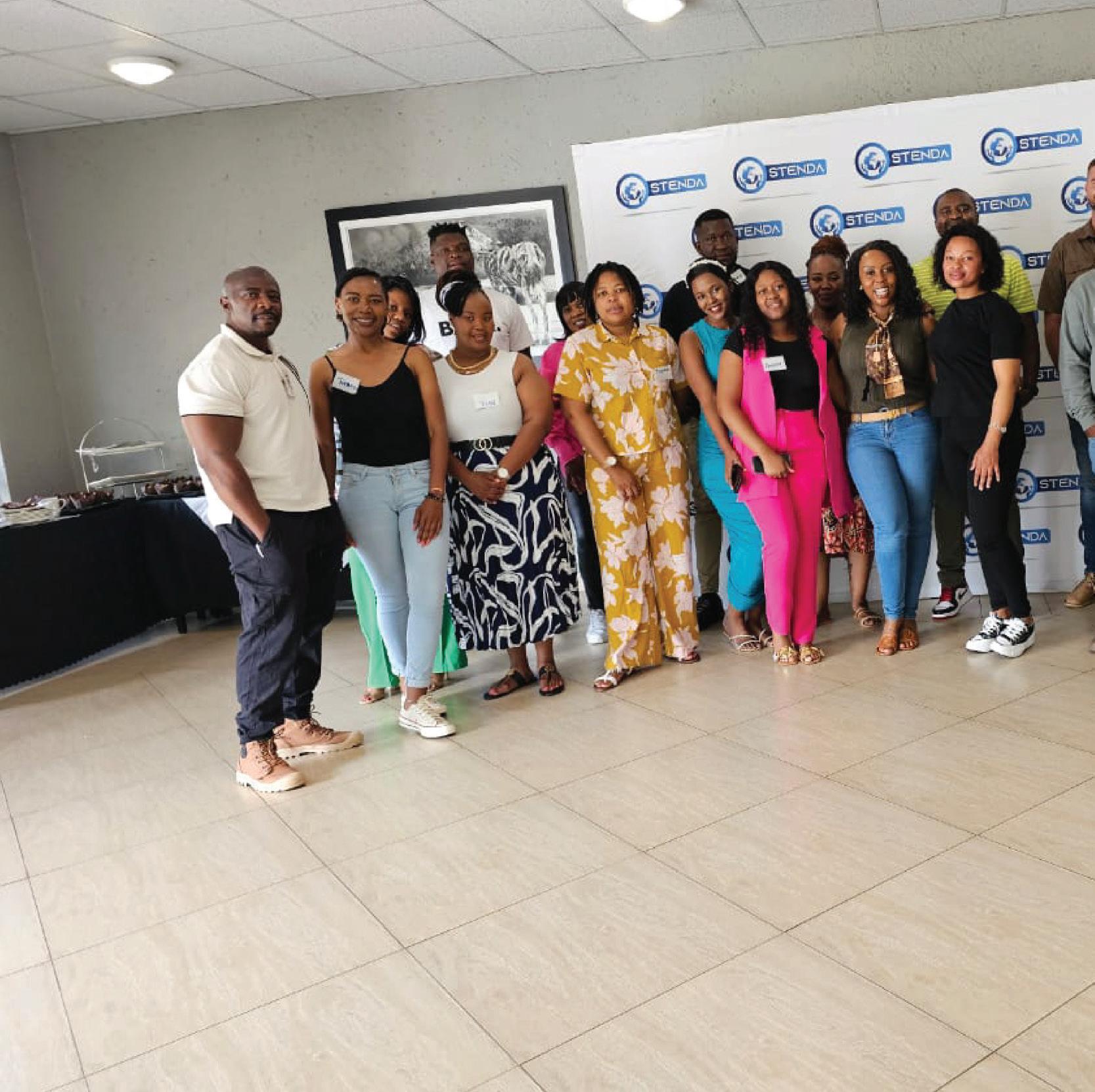
Stenda Trading established itself as a reliable partner to South Africa’s leading operators, offering services ranging from ventilation and conveyor maintenance to contract mining. Its reputation for efficiency and safety opened the door for wider ambitions.
Through Stenda Mining, the group now holds equity in a vanadium and iron ore project approaching commissioning: a flagship initiative expected to bring large-scale employment and business development opportunities in its host communities. “We see it as a milestone that will allow us to contribute more directly to South Africa’s growth,” says Tshidi.
Stenda Resources focuses on longterm growth, moving brownfield to greenfield projects and integrating
How Stenda Group is building value and empowering communities in the South African mining industry
the group more deeply into the mining value chain. “We are looking at vertical integration to ensure we not only provide services but also take part in exploration, development and optimisation of mineral reserves,” she adds.
An unusual but impactful initiative is Stenda Finance, a micro-lending entity created to support the group’s workforce of more than 300 employees. “Stenda Finance was designed with our people in mind,” says Tshidi. “By giving them access to responsible financial assistance, we strengthen both our business and their personal resilience.”
Tshidi’s personal journey is as compelling as the group’s. With a degree in Metallurgical and Materials Engineering from the University of Pretoria and an MBA from GIBS, she entered the mining industry on a bursary from Anglo Coal (now Thunge-
“I believe in the power of women and the importance of representation.”


la) and began at the coal mines of Emalahleni. “I spent several years honing my technical skills and gaining a deep understanding of the mining value chain,” she recalls.
Ultimately, she decided to leverage her skills and leadership to build something of her own. “Entrepreneurship is vital to addressing many of our country’s greatest challenges. For an economy to grow and for innovation to thrive, fostering an entrepreneurial culture is essential.”
As a black woman entrepreneur in mining, she has faced many challenges. “Gender stereotyping often means my credibility is questioned,” she acknowledges. Access to market has also been a hurdle, with entrenched supplier relationships limiting opportunities for new entrants. “There is still considerable gatekeeping. And the shortage of mentors who can guide and advocate for
emerging women leaders makes the journey even harder.”
Despite these obstacles, Stenda Group has steadily expanded its footprint, underpinned by a strong embrace of environmental, social & governance (ESG) values. “At Stenda, we prioritise hiring from host communities, upskilling local youth, and sourcing goods and services from local businesses. We also work with our clients to reduce environmental impacts and promote sustainable mining practices,” Tshidi explains.
What does she say to those who call mining a ‘sunset industry’? Her response is pragmatic: “The global energy transition is real and necessary, but it’s not an overnight switch. Coal and other fossil fuels still play a critical role in ensuring energy security and supporting industrial development, especially in emerging economies like South Africa.”
At the same time, she stresses that mining is indispensable for the re-
newable energy future itself. “Mining underpins the very technologies needed for the transition: from copper and lithium for batteries to rare earths for wind turbines. The future of mining is about responsible extraction and innovation, not closing the door on essential resources.”
From its roots as a small, woman-led service company to its present role as an integrated mining group, Stenda has carved out a distinctive place in the South African mining landscape. With new projects coming online, a workforce-focused philosophy and a commitment to ESG values, the group is well-positioned to shape the sector’s next chapter.
“Ultimately, our vision is about building a resilient, integrated ecosystem that adapts to market dynamics and delivers measurable impact,” concludes Tshidi. “Mining is evolving, and so are we.”
For more information, visit stendagroup.com.
“Entrepreneurship is vital to addressing many of our country’s greatest challenges.”

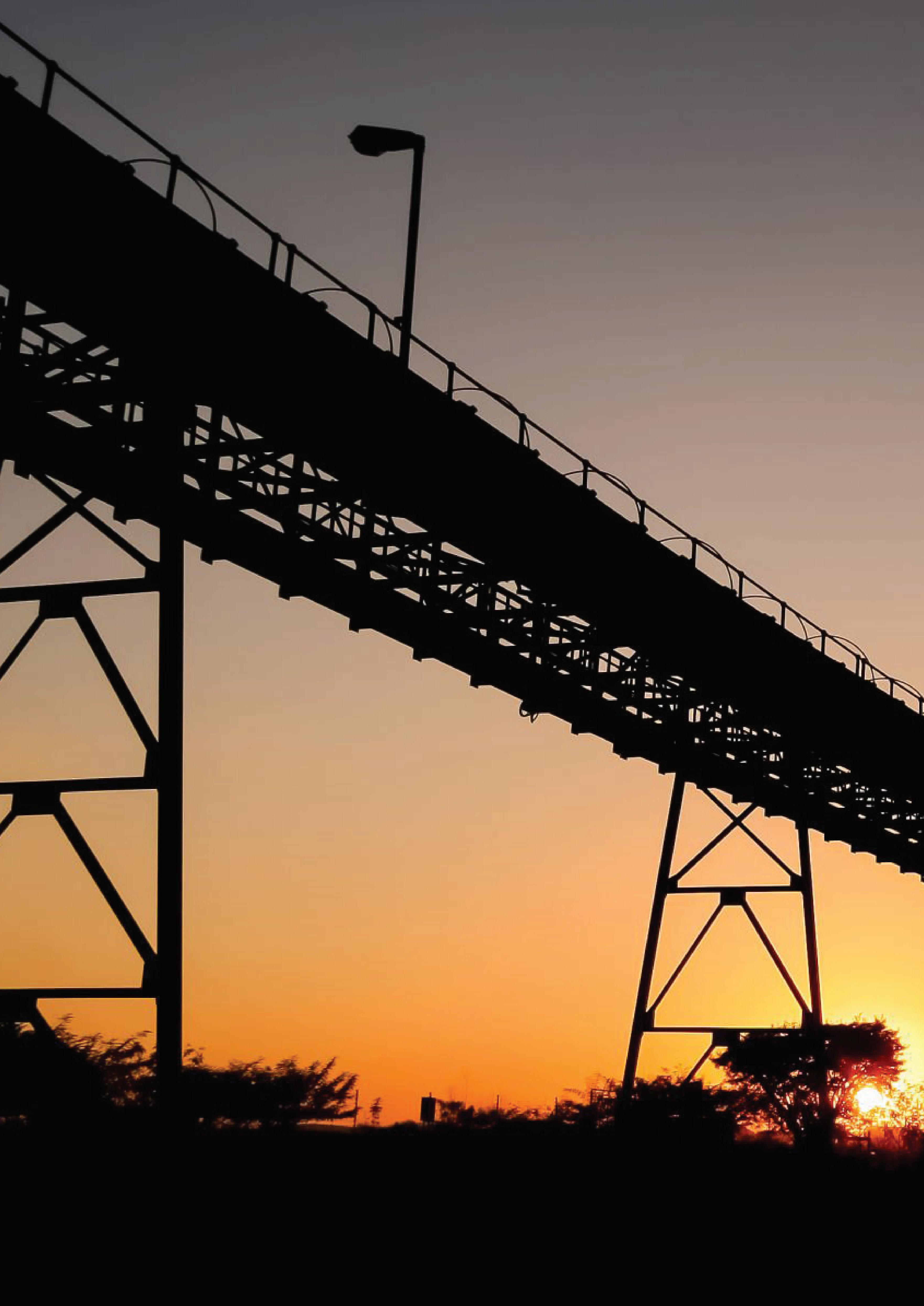

DMPR Budget Vote: Bold regulatory overhaul and targeted investments aim to transform mining and fuel a green-energy pivot
In Minister of Mineral and Petroleum Resources Gwede Mantashe’s Budget Vote speech delivered in July 2025 set the tone for an era of structural reform in South Africa’s mineral and petroleum industries. Against the backdrop of global economic pressure, budgetary constraints and sluggish commodity prices, he presented a proactive strategy rooted in regulation, growth, inclusivity and sustainability.
Following a reconfiguration that separated mineral/petroleum responsibilities from energy, the department’s renewed mandate aims for sharply defined focus and efficiency.
Minister Mantashe opened with recognition of South Africa’s enduring structural economic challenges: persistent poverty, the high cost of living, and the need for inclusive growth. He emphasised the government’s intent to position mining and petroleum as engines of socio-economic transformation, aligned to the National Development Plan Vision 2030 and the Medium-Term Development Plan.
The strategic framework of the DMPR centres on five core pillars:
1. Investment promotion through legislative harmonisation and streamlined approval pathways.
2. Sector transformation, boosting participation by historically disadvantaged persons.
3. Environmental sustainability, including enforcement and rehabilitation of derelict/ownerless mines.
4. Regional integration, leveraging Africa-wide trade and co-operation platforms.
5. Institutional capacity, aimed at tech-driven agility and good governance.
Mantashe described this structure as not just aspirational but operational, backed by legislative reform and regulatory realignment designed to turn policy intentions into tangible outcomes.
FISCAL ALLOCATION: R2.86 BILLION FOCUSED FOR IMPACT
A key highlight for the mining community is the R2.86 billion allocation for 2025/26. This funding is calibrated to: underwrite policy and regulatory reviews, including the drafting of bills and gazetting of regulations; supervise environmental compliance and mine rehabilitation; enhance regional co-operation initiatives; and strengthen institutional structures, including audits and digital capacity.
Although fiscal constraints persist, Mantashe reassured members of Parliament that scarce public funds would be targeted to regulatory priorities, investment facilitation and sector transformation.
GLOBAL GEOPOLITICAL LANDSCAPE: RISKS AND OPPORTUNITIES
The minister described a challenging global backdrop: economic fragility, trade tensions and geopolitical volatility. He highlighted specific threats like the recent 30% reciprocal tariffs by the United States, affecting South African diamonds and iron ore exports—minor in dollar terms relative to coal or platinum group metals, but potentially disruptive.
Despite these risks, South Africa’s mining sector showed resilience: After a contraction in 2023, mining gross domestic product rebounded by 0.3% in 2024, contributing R451 billion and sustaining its 6% share of national GDP. However, commodities like platinum, man-
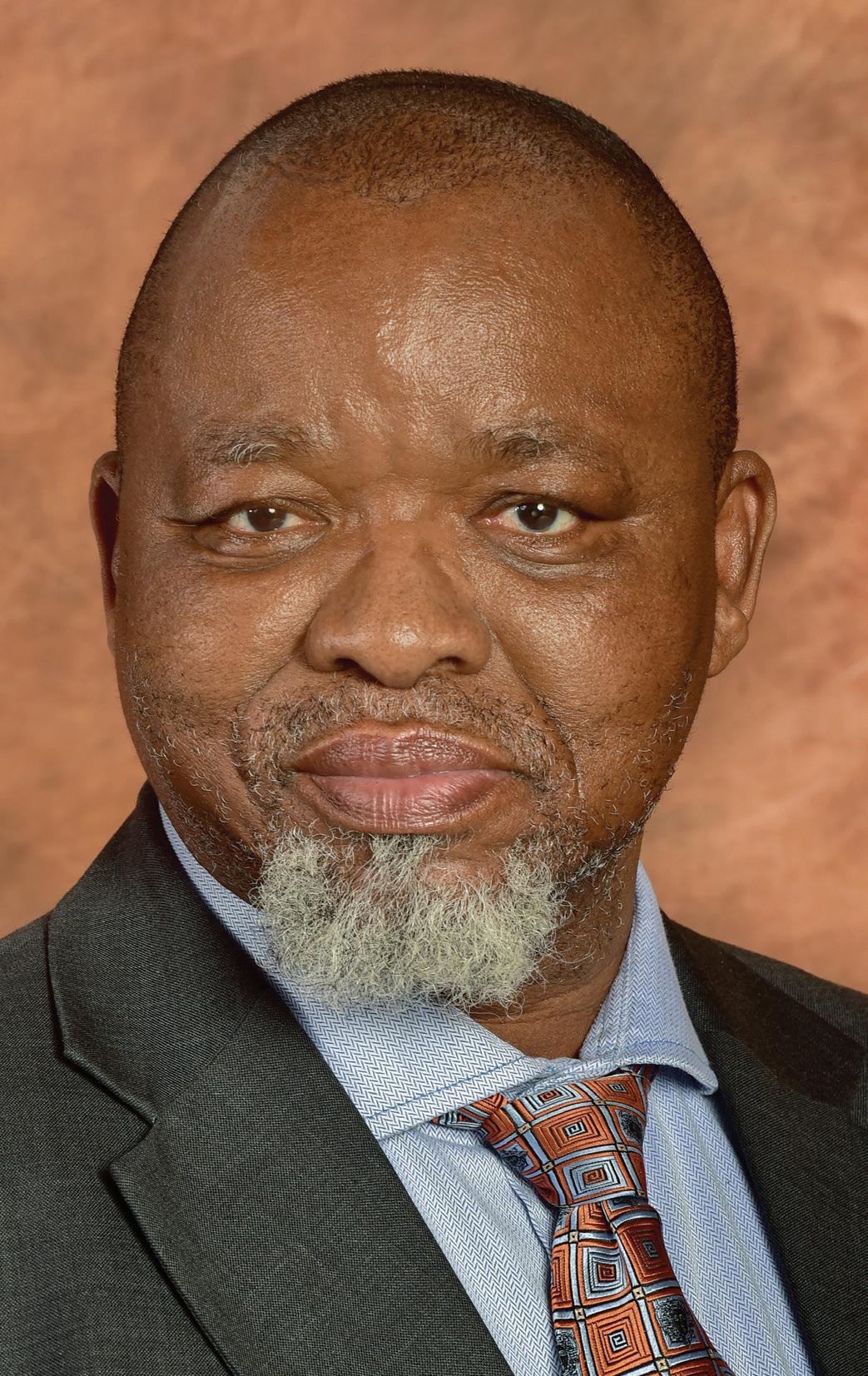
ganese, chrome and coal continue to face depressed prices, underscoring the importance of diversification and value-added processing downstream.
Mantashe reinforced the department’s commitment to:
• revising policies and reducing bureaucratic delays, to promote domestic beneficiation close to production sites.
• reviewing ownership, licensing and empowerment frameworks to secure meaningful economic participation by previously underrepresented groups.
• strengthening environmental enforcement and accelerating the rehabilitation of abandoned mines.
Deputy Minister Phumzile Mgcina disclosed that in 2024/25, R180 million supported Mintek in addressing four asbestos operations and closing 280 unsafe openings in Limpopo and the Northern Cape.
These measures align with President Cyril Ramaphosa’s call for a “capable, ethical and developmental state”: a theme echoed in Mgcina’s report of clean audits at all DMPR enti-
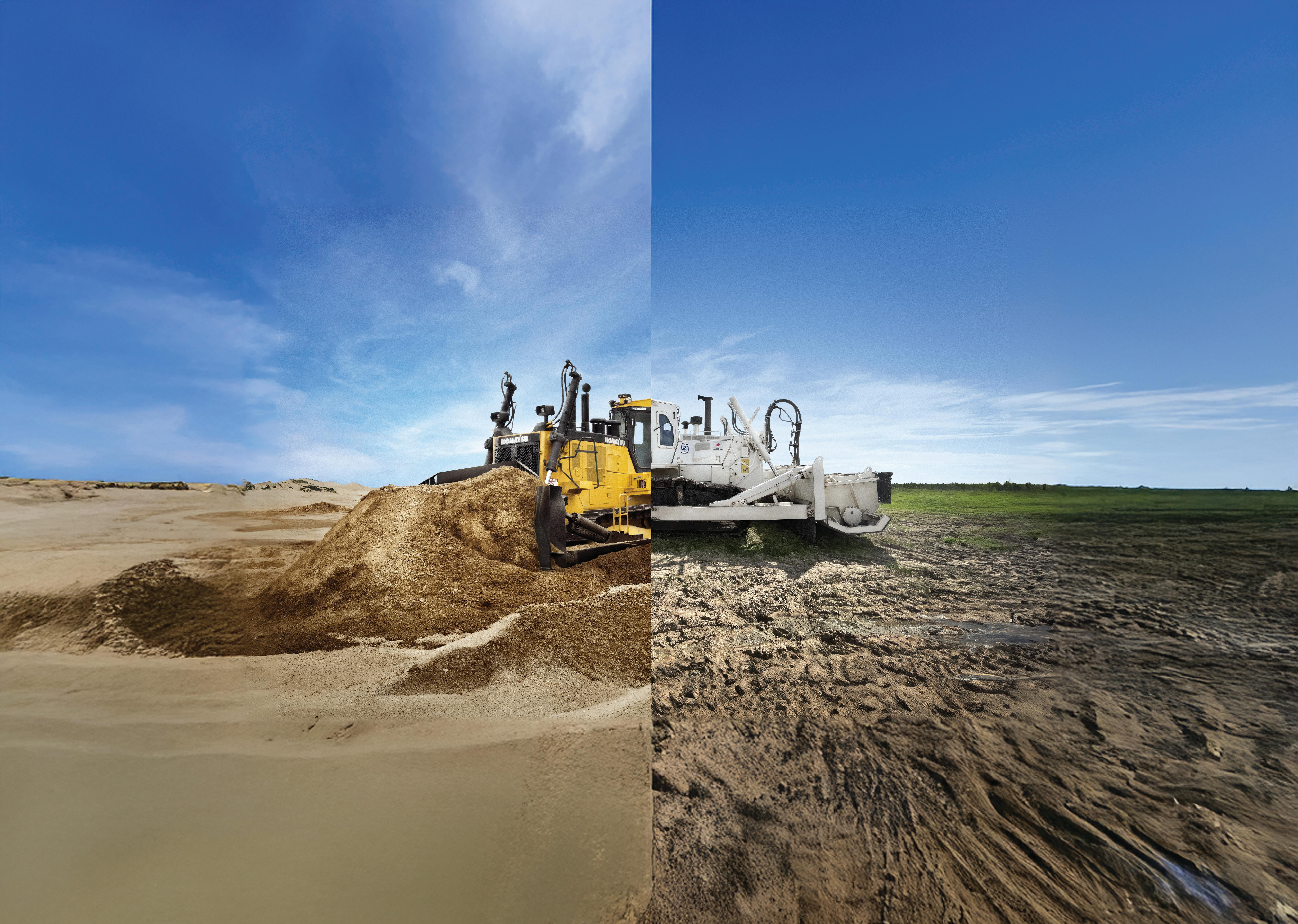
We build machines to answer the needs of societ y.
Machine engineering and technology that help extract materials essential to daily life are also helping preserve lives and reclaim land.
At customer sites around the world, Komatsu dozers merge decades of engineering expertise with cutting-edge technology to carry out their work with power, precision and efficiency. The results shape much of our modern life, providing core minerals that power our cellphones and new generations of electric vehicles.
Tel: +27 11 923 1000
ww w.komatsu.co. z a
www.komatsu.co.za
ties, including Alexkor, which recently transferred from Public Enterprises.
Environmental accountability is a central theme. Minister Mantashe pledged that every mine closure would include rehabilitation, regulatory compliance would be strictly enforced, and derelict mine sites would be remediated.
The past year’s results—tempered by slower global demand—were nevertheless marked by improved environmental performance driven in part by healthier departmental oversight and dedicated budget commitments.
These efforts reflect the government’s recognition of environmental oversight not only as a regulatory requirement but as a strategic necessity: mitigating public health risks, restoring ecological viability and attracting greenfield and brownfield investments in a world increasingly sensitive to environmental, social & governance (ESG) credentials.
The speech reinforced the importance of institutional modernisation within the DMPR. The 2025/26 budget supports: upgrading IT platforms for faster licensing and compliance processing; building human capital within inspectorates and regulatory divisions; and ensuring state-owned entities under its purview maintain clean financial audits—an important marker of credibility in the domestic and global capital markets.
For mining companies operating in South Africa and neighbouring states, these developments promise clearer rules, more predictable timelines and fewer compliance bottlenecks
Mantashe highlighted the department’s intent to engage more deeply with regional integration frameworks across the Southern African Development Community (SADC) and the African Union. He forecast increased use of bilateral mining agreements to
facilitate trade and joint exploration ventures, underlining South Africa’s strategic position as a gateway for capital and expertise in mineral-rich Africa.
Beyond the Budget Vote itself, Mantashe noted the recent Cabinet approval of a Critical Minerals and Metals Strategy (see article elsewhere in this edition), supported by the publication of a Mineral Resources Development Bill. This policy framework positions South Africa to capitalise on high-value commodities like platinum, manganese, iron ore, coal and chrome—selected through robust analysis of strategic importance, industrial applicability, employment and export potential.
A transformative pivot toward critical mineral beneficiation and global supply chain integration is underway.
1. Licensing and regulatory certainty
Ongoing policy reviews and co-ordination of legislation suggest streamlined processes—with shorter timelines for exploration permits, mining rights applications and environmental authorisations.
2. Investment in beneficiation
By zoning resources toward value-added processing near production sites, the government signals its intention to deepen the domestic metals ecosystem: from raw output to semi-finished and finished goods, potentially magnifying both export value and local employment.
Policymakers are increasingly attuned to ESG performance. With reinforced audits, environmental oversight and transparent governance, globally minded investors can anticipate improved risk profiles among compliant operators.
4. Transformation imperatives
Heightened focus on historically disadvantaged individuals—supported by budget, policy and monitoring—imposes a new standard of transformation. While larger companies may have existing initiatives, junior and
mid-tier miners must prepare to meet escalated benchmarks.
5. Regional strategy
Expect more strategic outreach through platforms such as the SADC and the African Continental Free Trade Area. Opportunities for regional exploration, cross-border licensing and fund attraction are rising, demanding preparedness from provincial and pan-African players.
Minister Mantashe projected 2025/26 as a year of strategic consolidation. With a departmental structure honed by separation from energy, a robust R2.86-billion budget and policy scaffolding aimed at transformation and ESG compliance, the DMPR appears poised to catalyse a mineral policy renaissance.
For mining businesses—not just in South Africa but across southern Africa—this moment heralds a shift: from commodity extraction to structured value chains, from accommodative fiscal regimes to vetted transformation and environmental stewardship, and from national regulation to continental competitiveness.
As the minister closed his address, he underlined unity across the government, the department’s leadership and stakeholders—making clear that mining, aligned with national priorities, can and must support inclusive growth, employment creation and sustainable development.
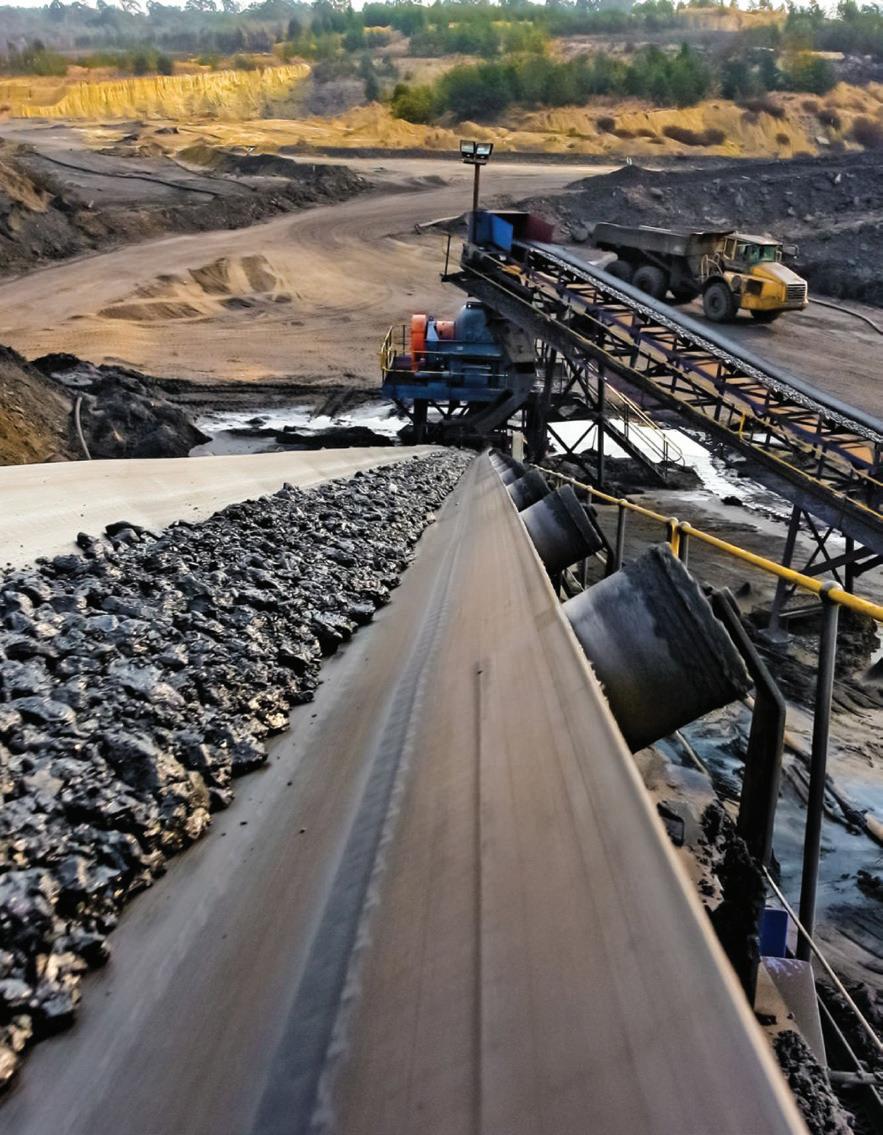



Can zero tariffs drive real change? Inside China’s new trade policy and Africa’s energy-led future
China’s expanded zero-tariff policy offers new export opportunities for Africa, but without parallel investment in energy and industrial infrastructure, the continent risks missing its chance to drive real economic transformation.
After World War 2, the United States and its Western allies created a set of international agreements and institutions to govern attitudes to mutual defence, economics and human rights. For decades, this created stable alliances and predictable economic plans.
But, unlike his predecessors, incumbent US president Donald Trump believes international organisations
While the world needs a stable environment to promote economic growth, Beijing needs this stability for reasons that go beyond economics.
Unlike liberal democracies that derive their legitimacy through elections, a large part of Beijing’s legitimacy comes from its ability to deliver sustained economic prosperity to the Chinese people. But with a battered economy that was first triggered by a real estate crisis in 2021, this task of maintaining legitimacy has become more difficult.
Exporting its way of out the economic slump may have been on Beijing’s books, as this was one of China’s traditional methods for promoting economic growth. But Trump’s trade war has made this an increasingly difficult prospect, especially to the US, which imports 14.8% of total Chinese exports.
As a result, fixing China’s economy has become a priority for the Chinese government.
China’s zero-tariff policy for African goods has expanded rapidly in recent years, with 53 of the continent’s countries now eligible to export their taxable goods to the Chinese market duty-free. Promoted as a vehicle
undermine US interests and sovereignty. He has withdrawn the US from the World Health Organization, and there is speculation he could reduce US commitment to the United Nations. US investment in NATO’s mutual +defence pact remains under discussion.
But while Washington is busy sounding the retreat from the very world order it had a hand in building, Beijing is looking to increase its international role. Chinese leadership in international agencies affiliated with the UN has increased over the years, and so has its financial commitment to international institutions.
That’s not all. China is also a prominent member of trade coalitions such as the 15-member Regional Comprehensive Economic Partnership, and
the 10-member BRICS group (led by Brazil, Russia, India, China and South Africa). These groups not only promote greater economic integration among its members but may reduce members’ reliance on the US economy and the US dollar. Amid an increasingly volatile US, China’s presence as the second largest economy in the world in these trade groups would be useful.
Now with the whole world negotiating new US trade deals, most nations see their relationship with the US as unstable. China sees this as a golden opportunity to position itself as a global counterbalance to the US. One of its policies is to “deliver greater security, prosperity and respect for developing countries”, and this is particularly relevant in African nations, where US aid is being reduced rapidly.
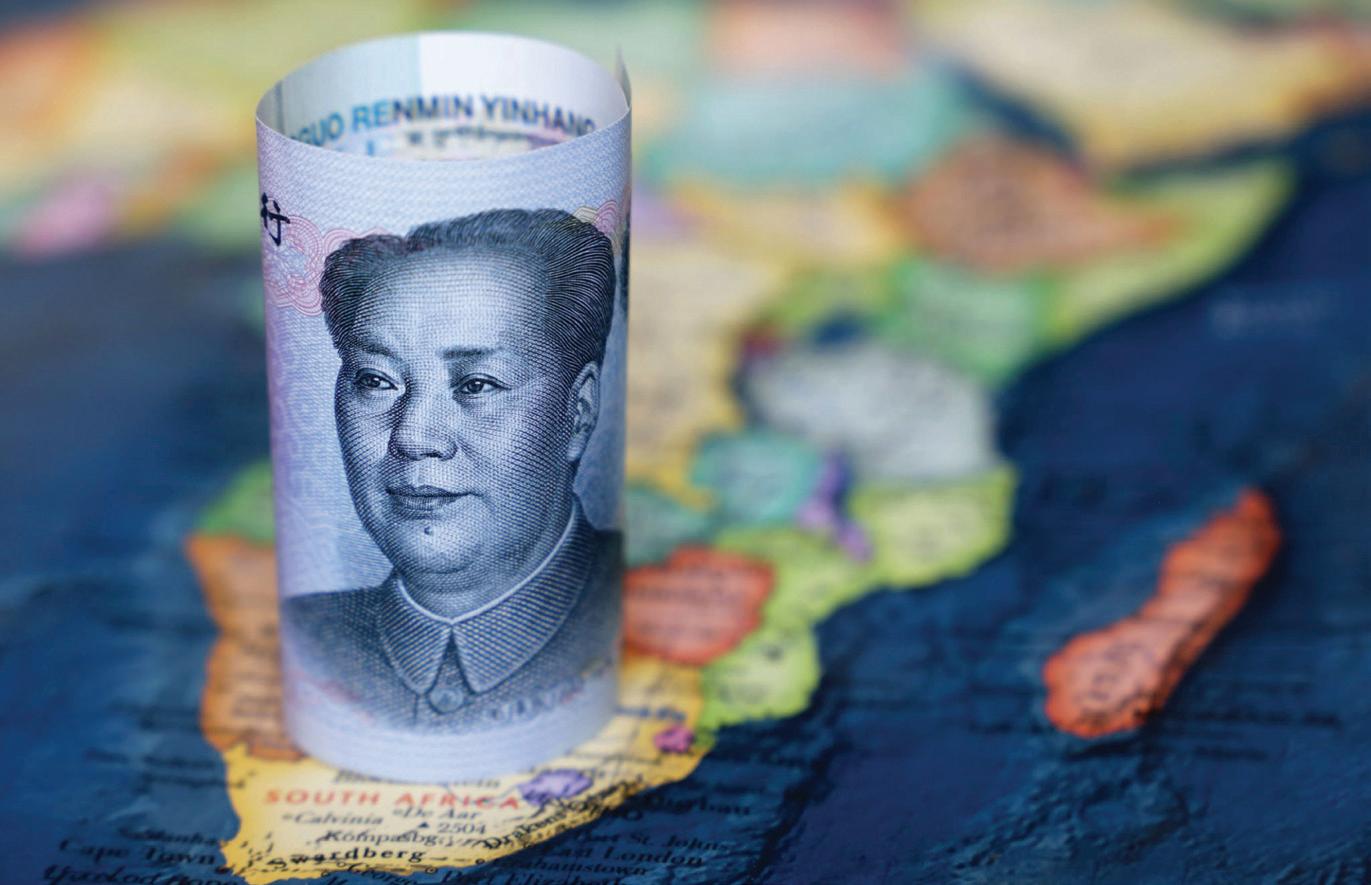
for deeper Sino-African co-operation and shared prosperity, the policy has gained attention for its potential to open access to one of the world’s largest consumer markets.
But as the continent looks to secure long-term development and industrial transformation, a central question arises: Will trade preferences like this serve as a catalyst for Africa’s economic evolution, or simply reinforce its role as a low-value commodity supplier?
Eswatini—one of the few African countries that maintains diplomatic ties with Taiwan—was excluded from the tariff breaks, underscoring that
access to China’s market remains conditional. The expanded duty-free and tax incentives also appear as a counter to the Trump-era tariffs, placing Africa in the throes of the China–US trade war.
The broader question for the continent is whether these expanding trade policies can deliver tangible, scalable benefits. Africa’s ability to meet its development and energy access goals will depend not only on increased trade but on how effectively such policies translate into investment in infrastructure, energy and industrial growth.
Tariff-free access does little to change that if non-tariff barriers, unreliable power supply or inadequate transport logistics continue to undermine competitiveness.

On paper, zero-tariff access is a welcome opportunity. For African countries seeking to diversify export destinations and boost agricultural, mineral and energy-based trade, the initiative offers a cost advantage that could help expand trade volumes. For oil and gas producers, there may be openings to increase exports of refined products, petrochemicals or fertilisers, if the necessary processing capacity exists.
But therein lies the challenge. Most African countries lack the industrial and energy infrastructure to capitalise on such preferences. Many exports continue to be raw or semi-processed materials with limited value retention on the continent. Tariff-free access does little to change that if non-tariff barriers, unreliable power supply or inadequate transport logistics continue to undermine competitiveness.
Energy sits at the core of that equation. Africa’s path to economic sovereignty depends on its ability to convert natural resources into industrial products: a process that begins with investment in upstream development and extends through midstream lo-
gistics and downstream transformation. Whether it is building pipelines and liquefied natural gas (LNG) infrastructure, electrifying industrial corridors or developing fertiliser and plastics manufacturing hubs, Africa’s energy systems must evolve to support trade ambitions.
Several countries are already moving in that direction. Nigeria is pushing forward with its gas commercialisation strategy; Mozambique is scaling up LNG; Senegal and Mauritania are emerging as cross-border gas hubs. These projects not only generate export revenue but create the foundation for broader economic diversification: from petrochemical industries to power generation for local factories.
Meanwhile, the African Continental Free Trade Area provides the framework to harmonise standards, reduce internal tariffs and build common infrastructure such as pipelines, ports and refineries, thereby enabling economies of scale and intra-African trade. If combined with external access like China’s zero-tariff policy, this dual ap-
proach could allow African nations to integrate vertically and horizontally, moving from fragmented markets to unified production ecosystems.
Still, risks remain. Trade with China remains heavily skewed toward raw materials, with manufactured imports often undercutting local industries. Without targeted support for African manufacturing, technology transfer and local content, tariff preferences risk entrenching the continent’s supplier status rather than overturning it. African governments must therefore ensure policies (both trade- and energy-related) are designed to channel benefits inward, not just extract them outward.
“[Africa can] seize agency in its global partnerships. Energy security, industrialisation and trade access must be viewed not in silos but as interconnected levers for longterm prosperity,” notes NJ Ayuk, executive chairperson of the African Energy Chamber.
Sources: Africa Energy Week, Chee Meng Tan/TheConversation.com
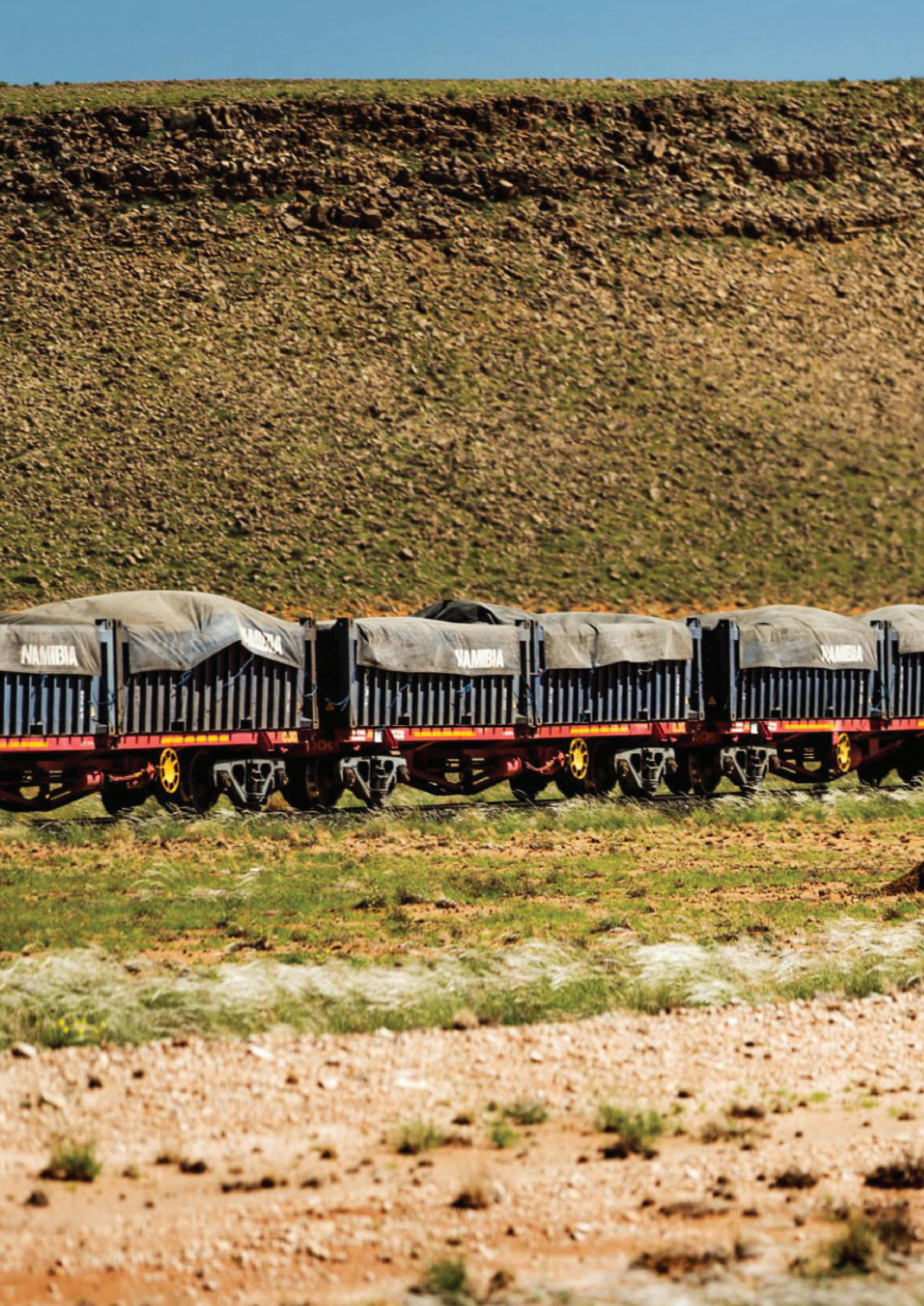
Developments in Namibia’s mining law are underway, evolving in pursuit of a careful balance
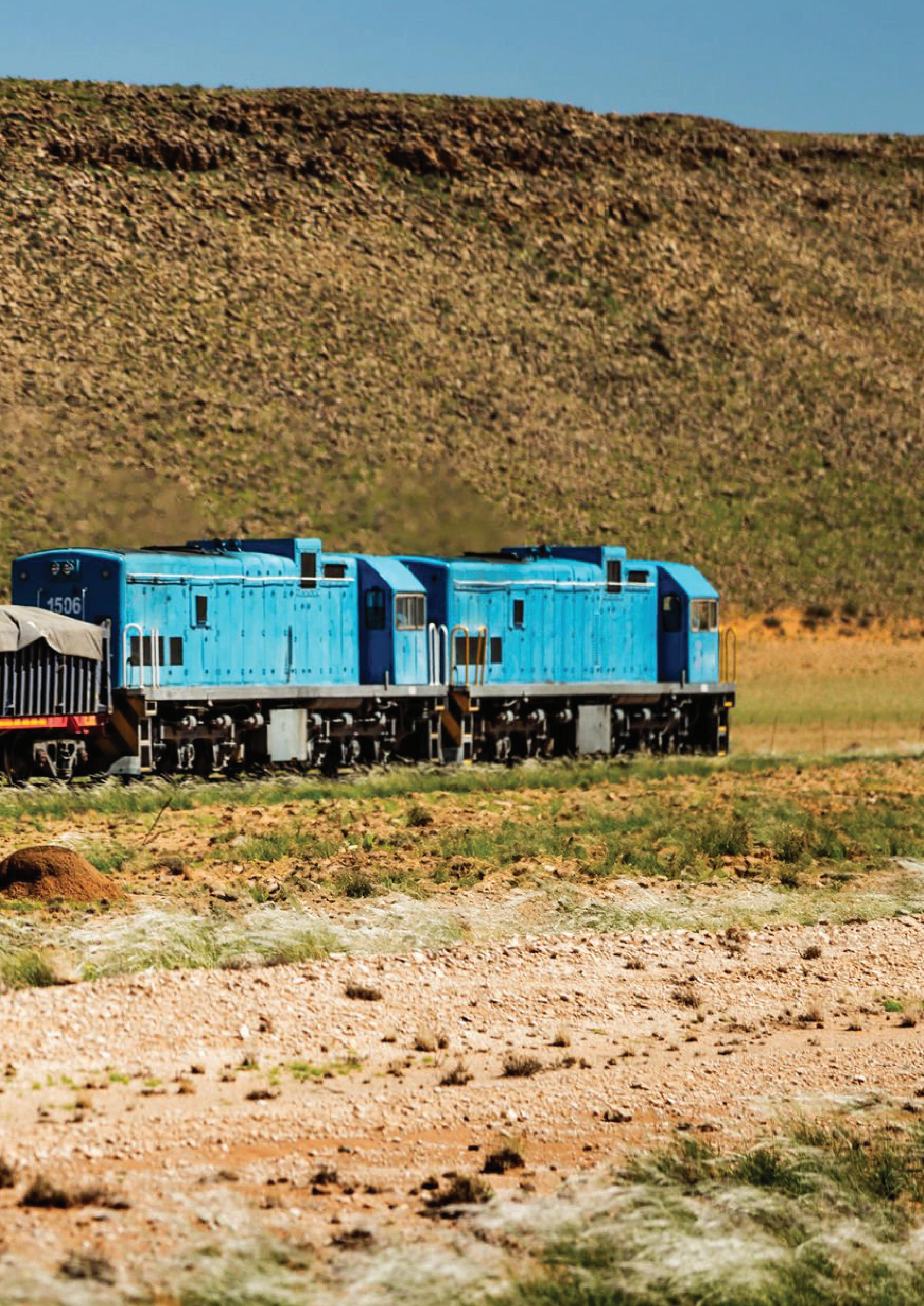
The government is eager to modernise laws and ensure the country’s mineral wealth benefits its people
In Namibia, the mining sector is critical to the economy and mineral assets form a major source of national wealth. The country’s mining industry developed relatively early, based mostly on diamonds discovered in around 1986. The initial reserves were high quality gem diamonds. Other metals (mainly copper, zinc and lead) were exploited in the country.
Namibia’s mining sector is currently undergoing a quiet transformation, supported by a government eager to modernise laws and ensure the country’s mineral wealth benefits its people. Namibia has long held a reputation as a stable and attractive jurisdiction for global investors.
Now, a suite of legislative reforms and regulatory changes are reshaping the landscape, with significant consequences for both industry insiders and local stakeholders.
The latest push for reform centres on the Minerals (Prospecting and Mining) Act of 1992 (“the Act”), which has been the backbone of mining law since independence. Recognising that global standards and national ambitions have evolved, authorities are reviewing the Act to strengthen state oversight, align with international environmental and governance best practices, and promote transparency in licensing.
A draft amendment bill, currently under public consultation, seeks to introduce stricter requirements for work programmes, local content and corporate social responsibility, aiming to redress past inequities and position Namibia for sustainable growth.
Policy shifts are equally evident in efforts to increase local participation and value addition. The Ministry of Industrialisation, Mines and Ener-
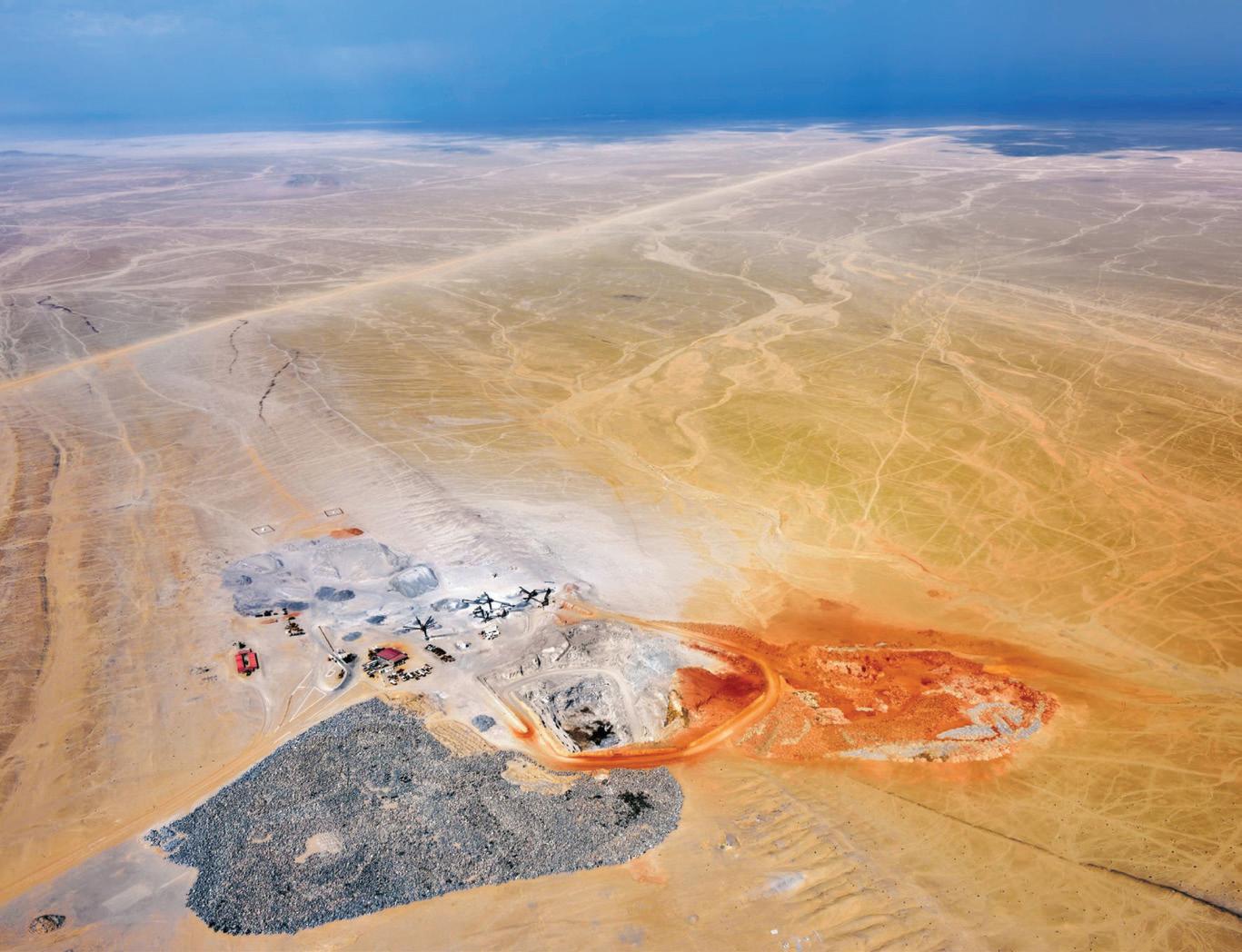
gy has signalled that future mining ventures will need greater Namibian ownership, and that beneficiation— especially for diamonds and uranium—must increasingly happen within the country’s borders.
Joint ventures with local or stateowned entities may become standard: a move intended to maximise national benefit even as it raises concerns among international firms about regulatory burdens.
Reforms are not limited to ownership and licensing. Namibia’s fiscal regime for mining is also under review, with changes proposed to royalty rates for strategic minerals and the introduction of profit-based taxes to capture windfall gains. Tax incentives targeting exploration and regional development round out the economic package, as the government seeks a balance between attracting investment and securing a fair share of revenues.
Environmental stewardship is moving to the fore of legislative priorities. Stricter requirements for environmental impact assessments, robust baseline data and mandatory management plans are being introduced, along with greater emphasis on post-mining rehabilitation and financial assurances to cover environmental liabilities. These steps reflect Namibia’s obligations under interna-
tional conventions and its determination to balance economic development with ecological protection.
A separate review of the Mine, Health and Safety Regulations is also underway, with the intention of replacing the outdated 1968 ordinance.
The concept of a ‘social licence to operate’ is being enshrined in law, requiring companies to engage meaningfully with local communities and formalise community development agreements. This is meant to prevent social conflict and foster partnerships that extend benefits beyond the mine gate.
Institutional reform initiatives are also being considered. A national mining company is proposed to hold equity in strategic projects, serving as a joint venture partner, facilitating technology transfer and supporting downstream development. Its success will hinge on transparent governance and operational independence—a model inspired by similar state-owned enterprises elsewhere.
The process for obtaining mining rights is being streamlined with digital licensing systems and timebound application reviews, designed to boost investor confidence and minimise opportunities for corruption. Clear criteria for awarding, renewing and cancelling licences are set to reduce opacity and foster trust.

Namibia’s mineral endowment includes socalled ‘strategic minerals’—lithium, rare earths and uranium—which are crucial to the global energy transition. The government is prioritising these resources, with tighter controls on exports of unprocessed materials and incentives for local processing. These policies align with the country’s ambition to become a regional hub for clean energy, especially given recent discoveries in green hydrogen.
International investors can take some reassurance from Namibia’s continued commitment to treaty obligations. Recent legislative drafts maintain protections such as recourse to arbitration and safeguards against uncompensated expropriation, though existing treaties are under review for better alignment with national goals.
In summary, Namibia’s mining law is evolving in pursuit of a careful balance: maximising national benefit, ensuring environmental and social responsibility and fostering a transparent, investor-friendly climate. While the reforms introduce stricter standards for local content, governance and beneficiation, they also promise streamlined procedures and greater certainty for all stakeholders.
Current and prospective investors in Namibia’s mining industry should be keeping a keen eye on these developments.

Corporate & Commercial Law
Cliffe Dekker Hofmeyr
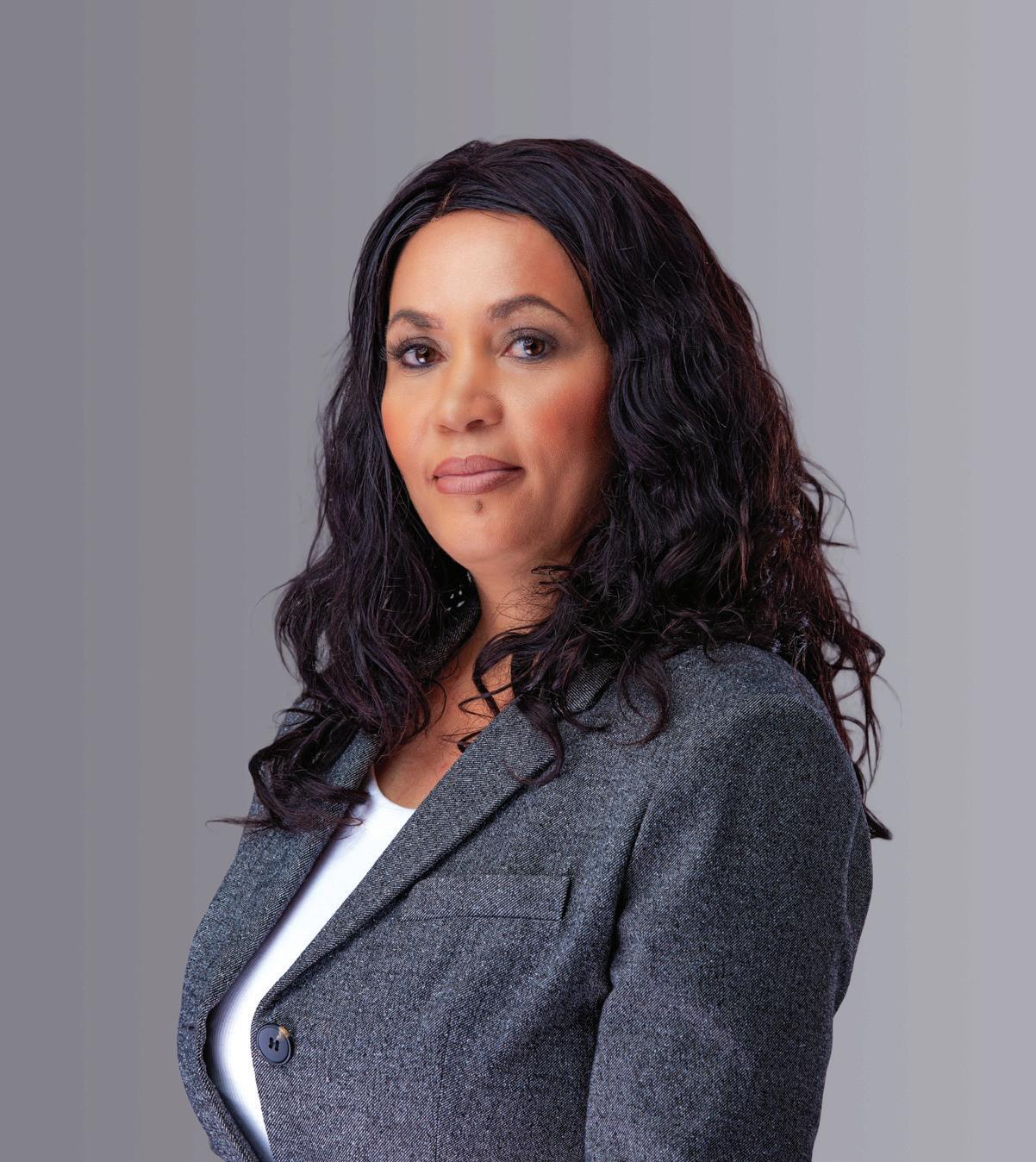



Can the Africa Energy Bank transform the continent’s refining and downstream future?

Launched in June 2025 with an initial $5 billion in capital, the Africa Energy Bank (AEB) is positioned to catalyse a shift in Africa’s energy sector. It will operate as an independent, supranational financial institution, not regulated by any central bank—making it a truly pan-African financial institution.
Established by the African Petroleum Producers’ Organization (APPO) in partnership with multilateral financial institution Afreximbank (African Export-Import Bank), the AEB aims to mobilise capital for upstream, midstream and downstream energy projects, addressing a continent-wide investment shortfall estimated at up to $50 billion annually.
It further aims to support African nations in balancing the need for continued hydrocarbon development while making a smooth transition to cleaner, sustainable energy sources. With a vision to be Africa’s leading financial institution for the energy sector, the AEB will play a key role in ensuring energy security, fostering economic development and supporting Africa’s transition toward renewable energy solutions.
By providing accessible, Africa-focused financing, the AEB (headquartered in Abuja, Nigeria) is expected to reduce dependency on foreign capital and imports, especially in the downstream sector where over 80% of refined petroleum products are currently imported.
The bank’s objectives align with the strategic energy goals of APPO member countries and other stakeholders. These include:
• Financing oil and gas projects—providing financial resources for exploration, production and refining of oil and gas, as well as midstream and downstream activities.
• Facilitating the energy transition—supporting member states in transitioning from fossil fuels to cleaner energy sources while ensuring energy security.
• Intra-African energy trade—promoting and financing the trade of crude oil, natural gas and refined products within and outside member states, contributing to the growth of intra-African trade.
• Support for non-member states—extending financial support for energy projects in non-member African countries, fostering regional co-operation.
• Research and innovation—conducting market research, offering technical assistance and supporting studies on fossil fuels, renewable energy and other energy forms to keep pace with global energy trends.
Despite holding over 125 billion barrels of oil and 620 trillion cubic feet of natural gas, Africa continues to struggle with insufficient refining capacity, forcing nations to export crude oil and re-import refined products at a premium. Institutions such as the African Refiners and Distributors Association have long-advocated for investment in modernising and expanding Africa’s refining infrastructure.
Current projections indicate that African petroleum demand will increase from 4.1 million barrels per day (bpd) to 5.3 million bpd by 2040—a trend that underscores the urgency of building self-sufficient refining systems.
As such, the AEB is uniquely po-

sitioned to support strategic investment across Africa’s downstream and refining sectors. With an ambition to grow its asset base to $120 billion, the bank is positioned to unlock domestic value chains and catalyse large-scale projects that meet the continent’s rising demand for petroleum.
The AEB will play a key role in ensuring energy security, fostering economic development and supporting Africa’s transition toward renewable energy solutions

By reducing the time, cost and risk associated with project development, the bank could accelerate the pace of infrastructure buildout across the continent.
Recent developments across the continent reflect growing momentum to scale refining capacity. Angola expects phase one of the Cabinda Refinery to begin operations in 2025, bringing 60 000 bpd to the market. The country has a goal to increase capacity to 445 000 bpd and is on track to reduce imports of derivatives by 14% by 2026.
Nigeria’s 650 000 bpd Dangote Refinery began producing diesel and aviation fuel in 2024, marking a significant milestone for domestic processing. Similarly, upgrades to the Port Harcourt Refinery and ongoing expansion to Ghana’s Sentuo Oil Refinery highlight national efforts to meet growing demand.
Equatorial Guinea’s recent agreement with Shanghai SupeZet to build a new refinery and expand the Bata facility further illustrates the strategic push toward local processing.
These efforts not only reduce import dependency but also create jobs, enhance energy security and promote regional trade in refined products.
Africa’s refining and energy infrastructure ambitions are closely tied to broader goals of economic integration. The African Continental Free Trade Agreement, ratified by more than 48 countries, creates a platform for cross-border energy projects by removing trade barriers and harmonising investment policies. It also supports the development of regional supply chains, enhancing the commercial viability of shared infrastructure.
The AEB will play a central role in supporting these regional ambitions by working with over 700 African financial institutions and APPO member states to channel funding into integrated, cross-border energy systems. These APPO member countries (Algeria, Angola, Benin, Cameroon, Chad, Congo, Democratic Republic of the

Congo, Côte d’Ivoire, Egypt, Ghana, Equatorial Guinea, Gabon, Libya, Namibia, Niger, Nigeria, Senegal and South Africa) will contribute funds through their national oil companies, sovereign wealth funds and other relevant entities. This model ensures African governments and private investors work collaboratively to drive the continent’s energy future.
By reducing the time, cost and risk associated with project development, the bank could accelerate the pace of infrastructure buildout across the continent.
In APPO’s July 2024 magazine, Secretary-General Dr Omar Farouk Ibrahim said the AEB “will breathe new life into the industry, as it will provide the right financial resources for the development of innovative programmes and projects in the oil & gas sectors on the African continent.
“There is clearly a need to strike the right balance between the imperatives of climate change mitigation and the need to avoid social upheaval that could result from difficult economic and financial conditions in Africa. By making this choice, Africa is deciding, not to go as a propitiatory victim to the altar of the energy transition but to take its destiny into its own hands—prioritising the destiny of the nearly one billion or so Africans who have no access to any form of modern energy.
“And to put it bluntly, solving the problem of energy financing in Africa, far from being a game, remains a matter of life and death.
“In Africa, industrialisation is our top priority, and this cannot be a reality in a context of quick abandonment of hydrocarbons. APPO member countries understand this. They understand that the time for action has finally come. The creation of the bank will open a new page in the annals of Africa’s energy adventure,” he added.
Sources: African Energy Chamber, APPO














Why skills development is vital to drive sustainability in mining
To implement sustainable practices and attract the next generation of mining professionals, the industry needs to prioritise training and skills development, especially as the industry is changing significantly with new technology and a global push for sustainability. This transformation is not just about adopting new technology or changing processes; it hinges on the development of a highly skilled workforce that is well-equipped to navigate this landscape as it shifts.
The Fourth Industrial Revolution has brought a total paradigm shift for mining, with autonomous and remote operations, artificial intelligence (AI) and big data analytics becoming an indispensable part of daily operations.
However, these technologies are not self-sufficient. They are only as efficient as the individuals who op-
erate, maintain and optimise them, which means there is now a demand for workers skilled in these advancements—highlighting a critical need to invest in comprehensive training programmes to shape and equip this workforce.
Historically, the mining industry has grappled with severe environmental challenges including dust pollution, water contamination and ground degradation. To effectively solve these problems, we will need a workforce that is not only competent in traditional mining practices but also adept at implementing and monitoring emerging sustainable technologies.
For example, the operation of advanced water treatment and recycling systems demands specialised skills in chemical engineering, environmental science and data analysis. Workers do not automatically have these skills, so they will need to be developed through targeted, rigorous training.
Furthermore, the ability to interpret data generated by AI and big data analytics and to take action to optimise resource utilisation and minimise environmental impact will demand a new breed of mining professional—one who is both tech-savvy and environmentally conscious.
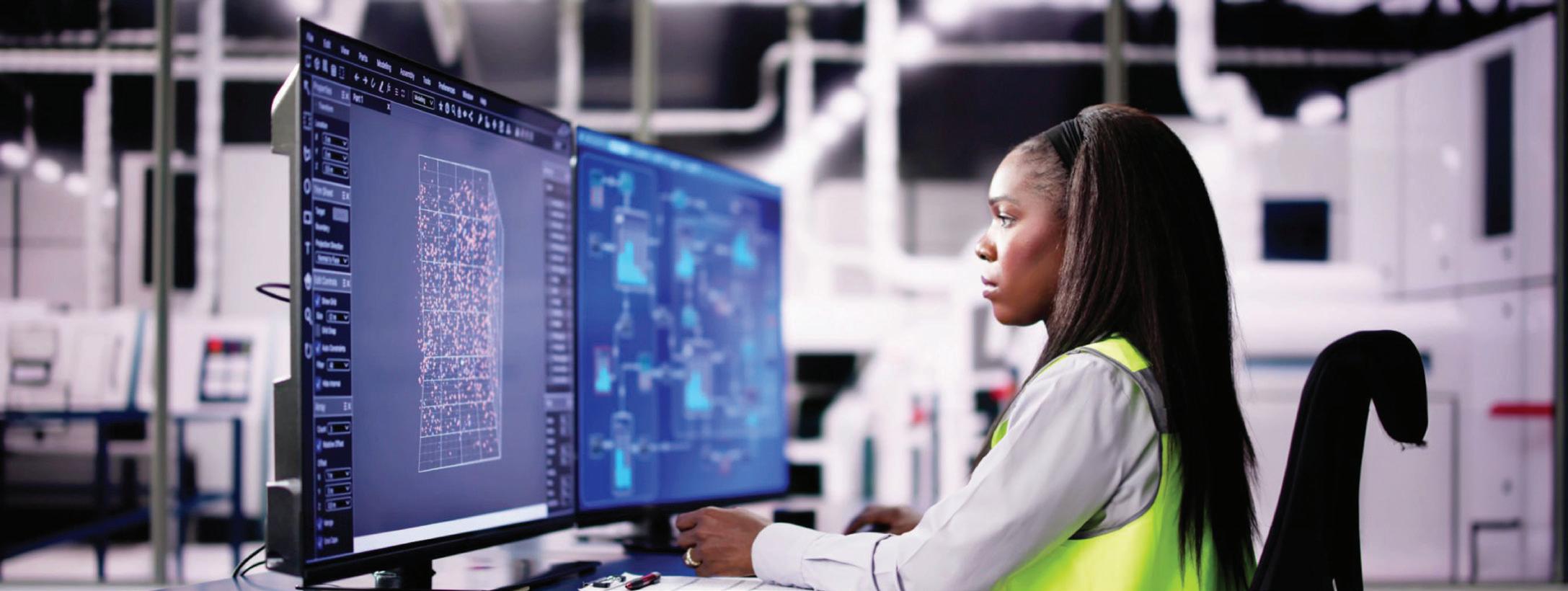
The integration of renewable energy sources, such as solar and wind power, is a major stride toward greener mining operations, but the installation of these technologies alone cannot guarantee their long-term success.
We require a workforce that is not only capable of maintaining these systems but can also optimise their performance according to the unique demands of the mining environment.
While government policies encouraging the adoption of renewables have spurred substantial investment, without skilled technicians and engineers the long-term viability of these projects is compromised.
Training providers have a critical role to play here in facilitating specialised learnerships in the installation, maintenance and optimisation of solar and wind energy systems for mining operations. These

We will need a workforce that is not only competent in traditional mining practices but also adept at implementing and monitoring emerging sustainable technologies
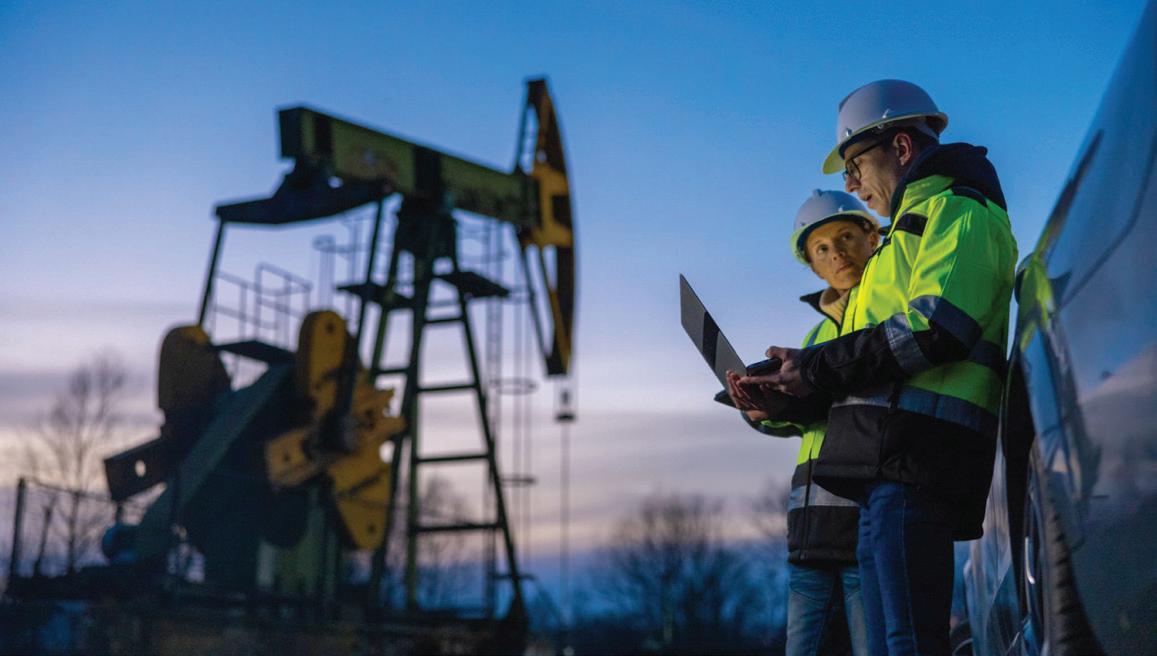
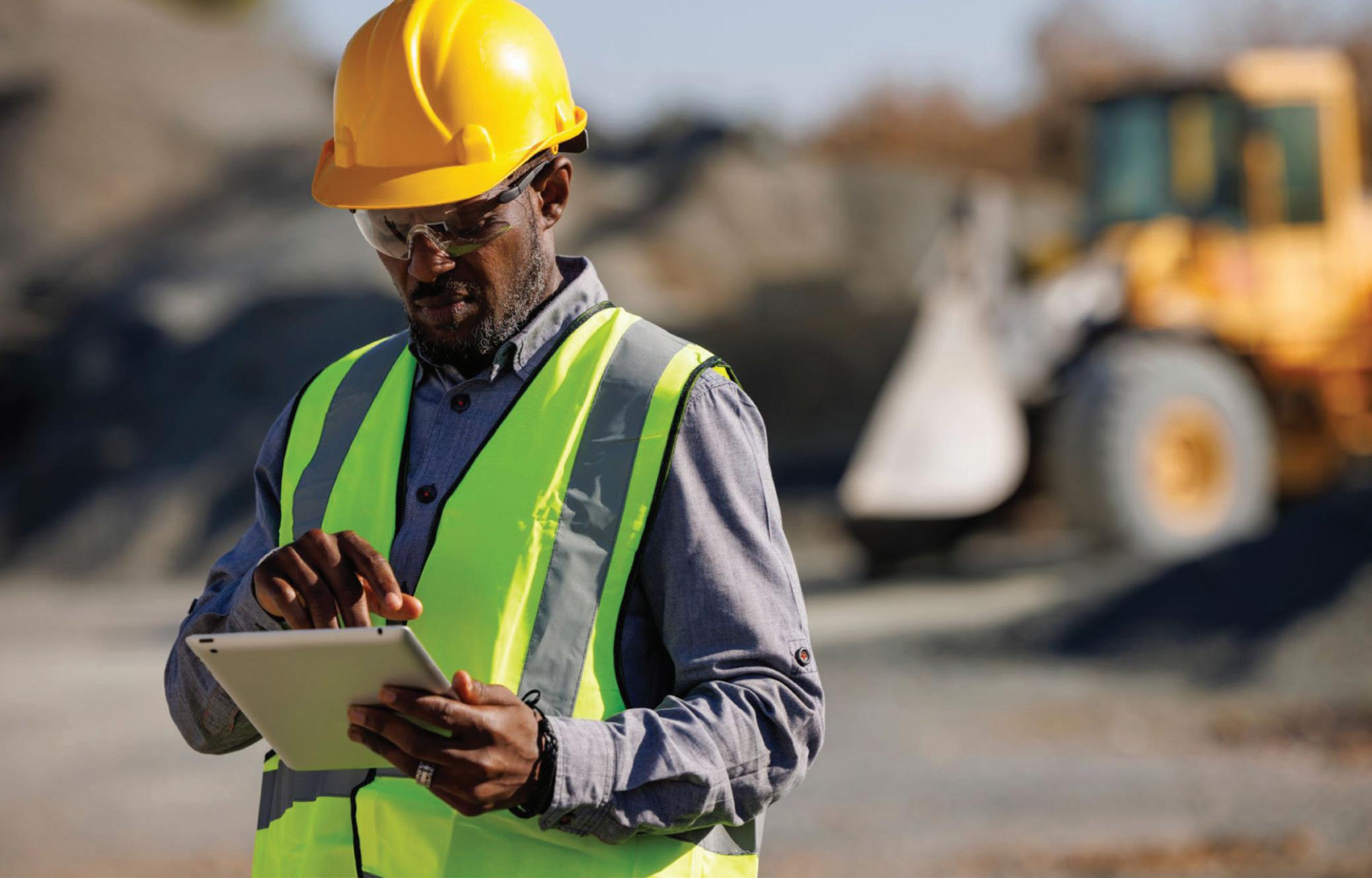
programmes must extend beyond technical skills and must impart an understanding of the environmental implications, as well as the integration of these technologies into existing mining operations.
Additionally, ongoing training is required across the sector to ensure the workforce can keep up with the rapid advancements in renewable energy technologies: from the development of more efficient solar panels to the integration of smart grid systems.
A career in mining is fast becoming more attractive, thanks to the potential for technological innovation to solve real-world problems and achieve sustainability goals. However, to fully capitalise on this growing interest, we must emphasise the skills and expertise that will be required to succeed in the modern mining industry.
It is not enough to showcase the innovative nature of the sector; we must also articulate clear pathways for career development through robust training programmes.
The mining sector’s ability to balance economic growth with environmental responsibility will depend heavily on the development of a skilled and adaptable workforce.
As such, mining companies will need to recognise that investing in training is not an expenditure but a strategic necessity that will lay the foundation for the industry’s long-term sustainability.
As mines become increasingly autonomous and technology-driven, the roles of workers will evolve significantly. Ensuring they possess the necessary skills to operate, maintain and optimise these advanced systems is vital for both operational efficiency and environmental safety. This requires a shift from traditional training models to more dynamic and adaptive approaches that incorporate continuous learning, on-thejob training and mentorship programmes.
Ongoing training is required across the sector to ensure the workforce can keep up with the rapid advancements in renewable energy technologies
By offering training in cutting-edge technologies like robotics, gamification and virtual reality, we will be able to attract and retain top talent.
Taking it deeper, collaborations with universities and the introduction of mining courses at secondary school levels will be essential for cultivating a pipeline of skilled workers who are not only technically proficient but also deeply committed to sustainable practices.
This proactive approach will help dispel outdated perceptions of the industry and position mining as a leader in technological innovation and environmental stewardship.
The future of mining is inextricably linked to the skills of its workforce. By prioritising training and development, we can ensure the industry not only achieves its sustainability goals but also cultivates a legacy of responsible resource management and technological innovation.
Investing in skills is investing in a cleaner, greener and more prosperous future for mining—and for the planet.
Jacques Farmer Managing Director Prisma Training Solutions
This article first appeared on BizCommunity.com.

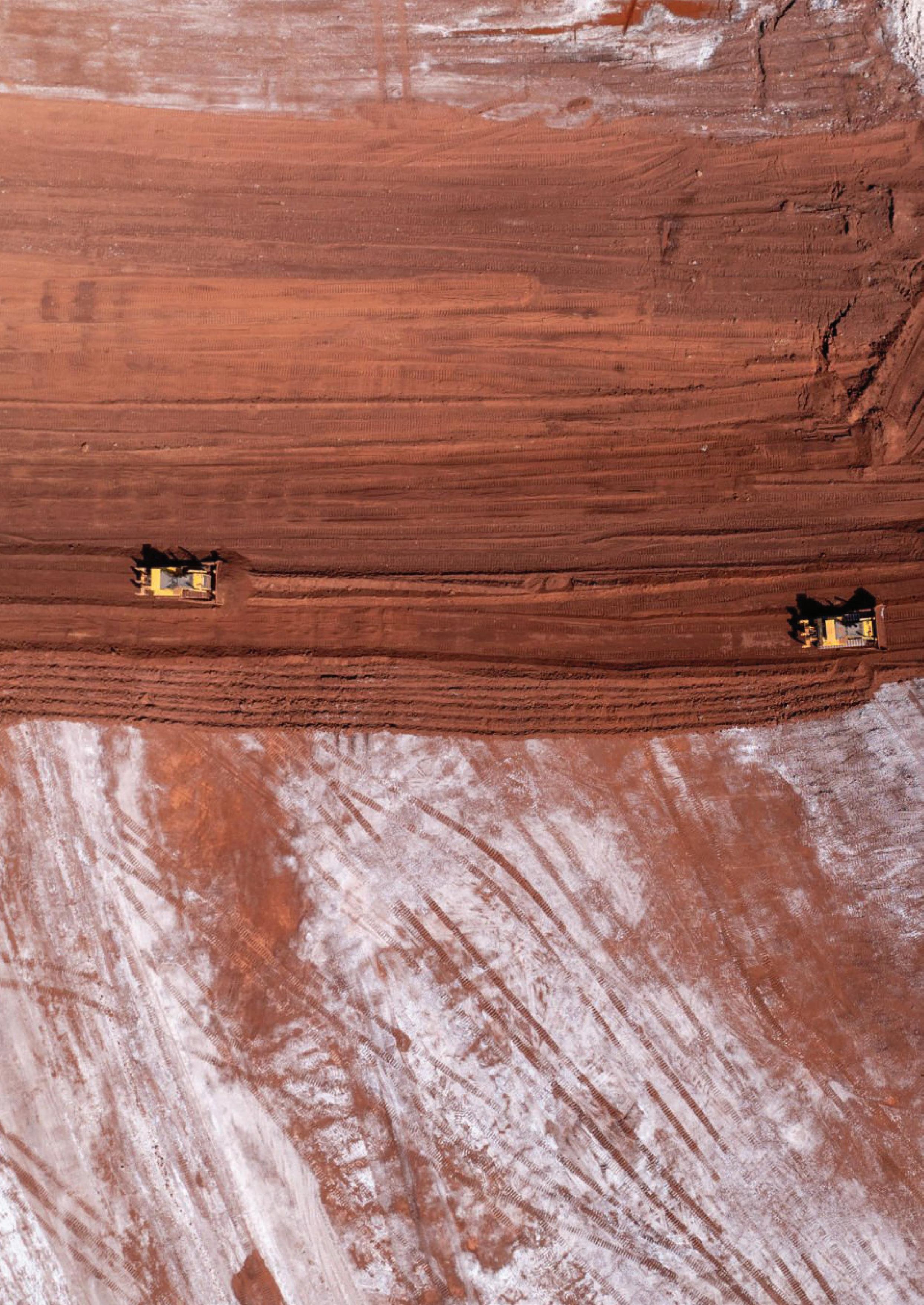
Why the energy transition won’t be green until mine waste disasters are prevented

The ability to safely store and manage tailings is a key factor in the development of metals projects.
On 18 February this year, contamination in the Kafue River, Zambia led to a mass death of fish. Its water turned a deathly grey and adjacent farmland was poisoned. The drinking water it supplied to half a million residents of the town of Kitwe was suddenly cut off.
Reports suggest this catastrophe was caused by the failure of the Chambishi tailings storage facility. Tailings are mixed liquid-solid mine wastes that remain after the valuable materials are removed from the crushed ores. They are often stored in impoundments, held in place by dams made of rock (and other mine waste), which ideally are managed and kept safe. This storage is necessary because tailings often contain high concentrations of potentially toxic, radioactive and corrosive elements.
But tailings storage facilities can—and do—fail.
The Chambishi failure was caused by a break in a wall between two tailings ponds containing acidic water. Fifty million litres of this water, equivalent to 20 000 Olympic swimming pools, spilled into a tributary of the Kafue River, and then into the river itself.
The Kafue is a lifeline, flowing through 1 600 kilometres of Zambia, providing water for around 5 million people and supporting fishing and agriculture. That lifeline is still threatened by the ongoing damage of this failure.
Chambishi is not alone. It is one of six major tailings incidents documented in the first three months of 2025, with others documented in Bolivia, Ghana, Philippines and Indonesia.
Tailings are a produce of society’s voracious appetite for metals and materials. With growing demand for technologies for the energy transition,
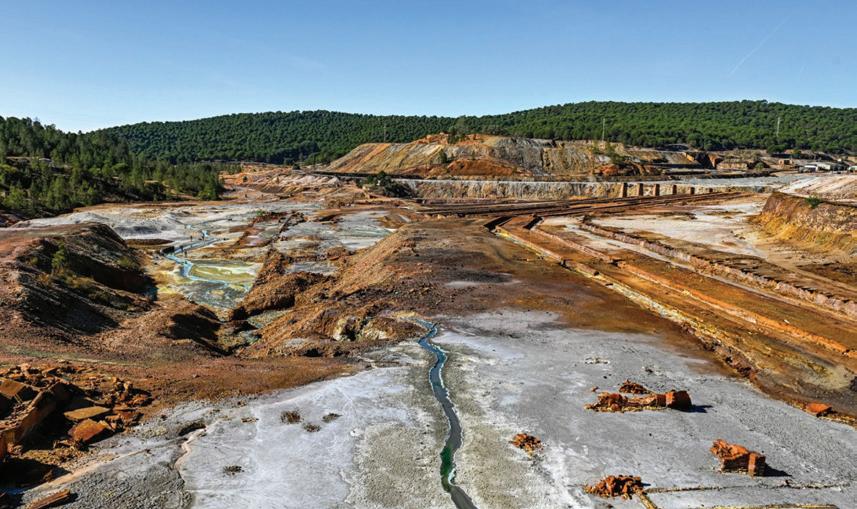

digitalisation and development, production of metals and materials and the volumes of tailings are set to vastly increase. Identifying suitable sites for safe storage is likely to become more challenging. Space will become more of a premium as more tailings are produced, and risks will evolve with changing climate and growing global population. For instance, storage facility plans developed before mining begins may no longer be suitable for their intended use over the life of the operation.
The ability to safely store and manage tailings is a key factor in the development of metals projects. By extension, that is fundamental to enabling an equitable and responsible energy transition.
Initiatives to improve the management and monitoring of tailings have been developed by independent organisations and industry bodies such as the Global Industry Standard for Tailings Management and the International Council on Mining and Mineral’s Tailings Management Good Practice Guide. Although these initiatives are comprehensive, they do not minimise risks from past tailings storage practices or address the full costs involved.
A broad range of technical, social and environmental uncertainties have been linked to the management of tailings storage facilities. These uncertainties, combined with financial practices such as discounting future costs, can result in future costs (such as long-term tailings management and rehabilitation) being underestimated in mining project cash flows, and sizeable costs for future generations.
Without a full understanding of the true long-term costs, making the economic case for improved tailings management becomes that much harder.


Improved mechanisms for quantifying the cost of tailings in the short, medium and long term—whether tailings storage facilities fail or not— are essential for adequately financing these long-term legacies of mining. Mechanisms to reduce volumes of waste produced not only have the potential to improve project economics over the lifetime of a mine but can also enhance social and environmental outcomes both during and beyond the life of a mine.
Tailings can be used as sources of aggregate materials for construction and critical metals for the green transition, and for carbon capture and storage. These opportunities will be context specific, however, and there will not be a one-size-fits-all approach to tailings reduction and responsible management.
New mining paradigms, such as selective mining through precision drilling or in-situ electrokinetic ‘keyhole’ techniques and extraction of metals from geothermal waters, may give us the ability to extract some metals without producing tailings.
Innovations in tailings storage, like using tailings to fill worked-out underground mining tunnels, can remove tailings from the surface environment, eliminating risk from landslides, dust, seepages and other hazards. Even with these efforts, tailings storage facilities will continue to be used and will need to be managed.
Reducing, reclaiming and regenerating the environments that have been negatively affected by tailings will require collaborative approaches.
Financing is a clear barrier to responsible tailings management. Without knowing the true social, environmental and economic costs of tailings legacies, the ability to overcome this barrier to responsible management is hampered.
Improved mechanisms for quantifying the cost of tailings in the short, medium and long term—whether tailings storage facilities fail or not— are essential for adequately financing these long-term legacies of mining. Mechanisms to reduce volumes of waste produced not only have the potential to improve project economics over the lifetime of a mine but can also enhance social and environmental outcomes both during and beyond the life of a mine.
Tailings can be used as sources of aggregate materials for construction and critical metals for the green transition, and for carbon capture and storage. These opportunities will be context specific, however, and there will not be a one-size-fits-all approach to tailings reduction and responsible management.
New mining paradigms, such as selective mining through precision drilling or in-situ electrokinetic ‘keyhole’ techniques and extraction of metals from geothermal waters, may give us the ability to extract some metals without producing tailings.
Innovations in tailings storage, like using tailings to fill worked-out underground mining tunnels, can remove tailings from the surface environment, eliminating risk from
A broad range of technical, social and environmental uncertainties have been linked to the management of tailings storage facilities.

landslides, dust, seepages and other hazards. Even with these efforts, tailings storage facilities will continue to be used and will need to be managed.
Reducing, reclaiming and regenerating the environments that have been negatively affected by tailings will require collaborative approaches.
Financing is a clear barrier to responsible tailings management. Without knowing the true social, environmental and economic costs of tailings legacies, the ability to overcome this barrier to responsible management is hampered.
Eva Marquis Research Fellow: Critical Minerals and Circular Economy
Karen Hudson-Edwards Professor: Sustainable Mining
University of Exeter
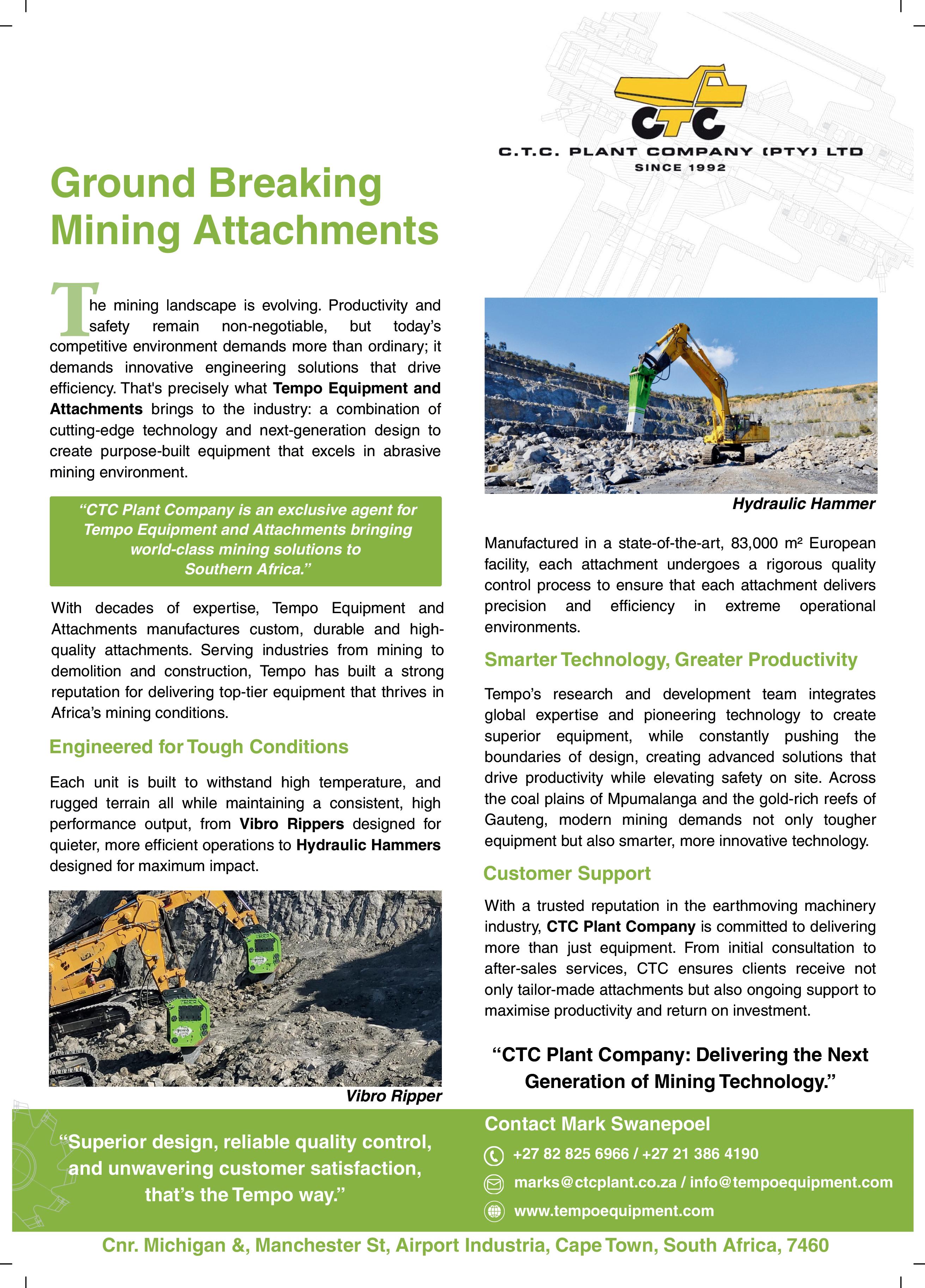

Why Africa’s leapfrogging from oil and gas is not the quick energy fix the world seems to think it will be

How do places like Africa get what they want without erasing progress toward net zero?
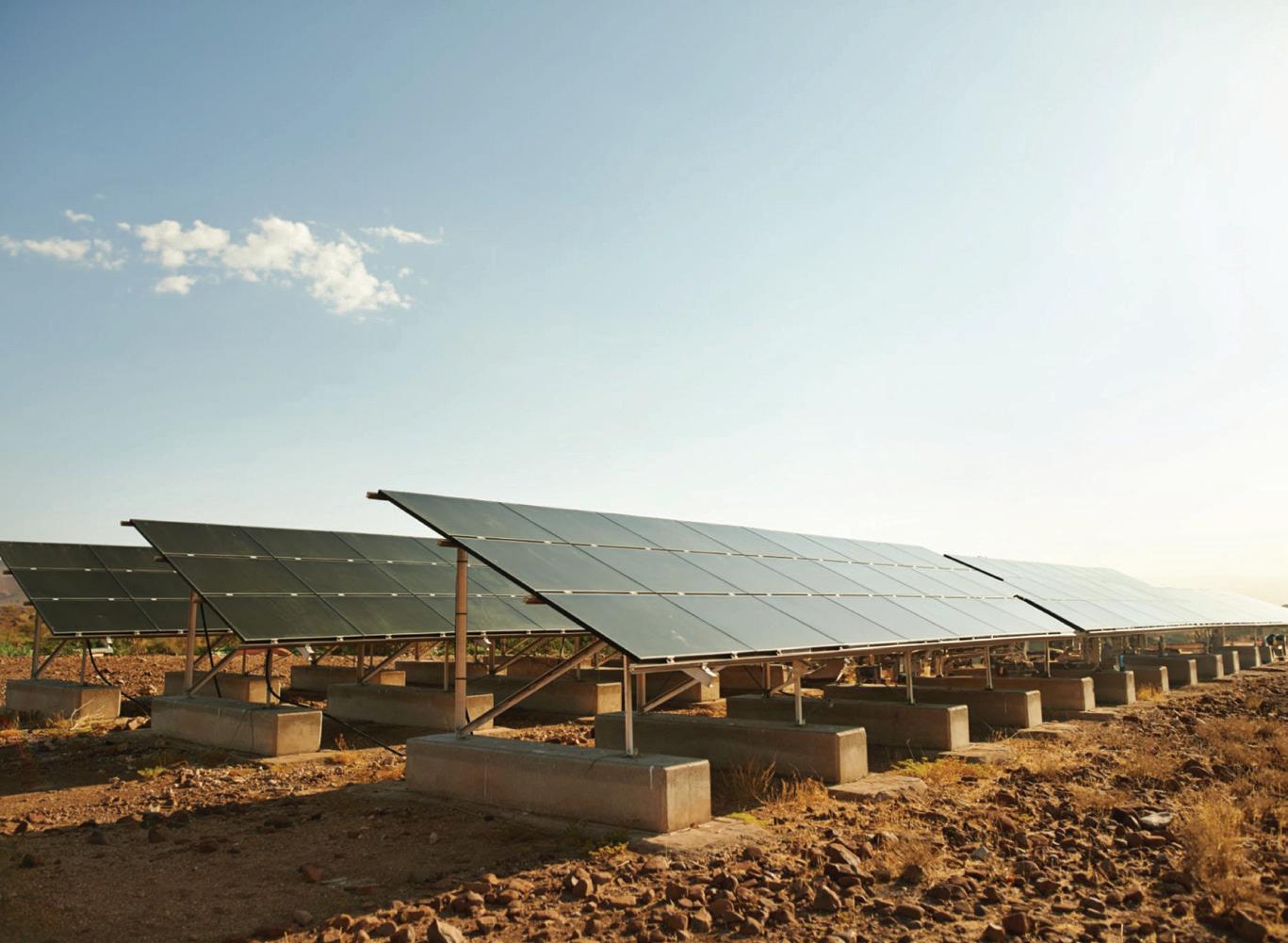
As the hottest 12-month period ever recorded draws to a close, climate change is passing from theory to reality and gaining ever-increasing urgency in statehouses around the world. The goal of achieving net-zero CO2 emissions worldwide by 2050 is widely agreed upon by climate experts as necessary to avoid irreversible changes in the Earth’s weather patterns which could cause centuries of harm for everyone.
The big question, of course, is how do we get there? Who bears what burdens, and how?
For the developed world, the answer is strikingly simple: cut, cut and cut some more. The countries that generate and consume the most energy have brought us to this point, and it is their responsibility to become more efficient and find new and cleaner ways to maintain their current, comfortable lifestyle.
While the cutting part has left much to be desired so far, the new and cleaner part looks promising. The cost of renewable energy sources such as wind and solar have been drastically reduced over the last decade to become some of the cheapest options available.
This is where the question gets thorny: What about the developing world, which has barely even begun to emit carbon, yet desperately wants
(and deserves) to catch up to the developed world’s standard of living? How do places like Africa get what they want without erasing progress toward net zero? For many, the answer is leapfrogging.
In short, leapfrogging is the idea that developing nations can bypass the last century and a half of carbon-heavy energy technology and jump straight to 100% renewable energy with no middle stage.
It’s easy to see why this idea is tempting, and why so much talk of it is focused on Africa. Cheap technology is appealing to poor countries, and our equatorial continent between two oceans has some of the greatest potential for solar and wind power to be found anywhere on the planet. Currently, more than 600 million people in sub-Saharan Africa have no access to electricity, and the total population is expected to double in the next three decades, so the demand is already enormous and accelerating by the day. By 2050, one in four people on Earth will be African.
Western attendees at climate conferences such as the United Nations Conference of Parties have opined that the world “cannot afford” for developing countries to follow the same trajectory as Europe, the United States and China to reach abundant,
reliable energy supply.
Mohamed Adow, director of the energy and climate think-tank Power Shift Africa, states that “Africa stands on the cusp of sweeping economic development. Whether this development is powered by clean renewables or dirty fossil fuels will go a long way to determining if the world meets the Paris Agreement goal”.
Greenpeace urges African leaders “to avoid falling into the fossil fuel trap and lead the continent toward a clean, renewable, affordable and sustainable energy future.”
Boiled down, the implication is that Africa should avoid ANY investment in fossil fuels—complete prohibition. Suggesting otherwise in some circles verges on taboo.
But is it realistic to expect Africa to go all-in on the latest technology and forego other resources it has in great abundance, like natural gas? Do the numbers back up their assertions? And is it even fair to ask so much from people with so far to go?
Even as solar panels and windmills drop in price, obtaining them is only one part of a much larger equation. Solar arrays, for instance, can be installed on a single home or in a microgrid connected to a small group of residences to power them directly. Multiply this by hundreds or thousands and the arrangement is known as distributed solar energy.
Leapfrogging using distributed solar has been described as similar to how the developing world leapt right past landlines and straight to cellphones with seeming ease just in the last couple of decades. If we can do it with communications, then why not energy?
Cost, for starters. A basic 8W solar array can cost 10 times more than a cellphone in a single year in Kenya. An 8W system is just enough to power a couple of LED lights and a cellphone charger. If you want to power a TV, a refrigerator, a washing machine or other energy-intensive appliances, you’ll need a bigger and more costly array.
If your village’s microgrid is small,
what happens when too many people get refrigerators and air conditioning? Time to increase the size of the grid. And then inevitably, what happens when the sun doesn’t shine? Add storage batteries, or a local power storage facility. Expand from powering homes to industrial and agricultural use? Now your costs are growing exponentially. Realistically, who would stay satisfied for long with just two lights and a phone charger?
The difference between distributed cellular and distributed solar is networks. Distributed cellular works because everyone’s cellphone connects to a huge, centralised network of cell towers that are connected to reliable power and do all the work of connecting calls on the back end. Imagine if every home had to have its own cell tower and all the necessary hardware and software to connect to all the other phones in the world, and you can see how quickly that would get very expensive.
That is distributed solar’s disadvantage: Every separate grid has to do it all—and if one fails, the others cannot pick up the slack. The end result is a patchy, uneven and unreliable supply of energy that is easily sabotaged by spikes in demand or ebbs in supply.
Like cellular, energy works best with economies of scale. Large central networks allow energy demand to be distributed based on supply and demand, with one region’s excess balancing out another’s shortage such that only the largest events can impact the entire grid at once.
Can solar and wind grids be built this way? Yes, but to support industrial and agricultural use, it requires a huge investment in land as well as money for a payoff that is currently underwhelming at best.
The Benban Solar Farm in Egypt covers more than 37 square kilometres (large enough to be visible from space), but can still only power 420 000 Egyptian homes—a small fraction of the country’s 102 million people. Expanding further may be fine in a country that is mostly empty desert, but how much land can be set aside in more humid, arable climates where every scrap of farmland is needed to
While renewable energy does look like a great way to get people up and running who are starting with nothing, it clearly is not ready to solve all the problems of nations seeking higher levels of prosperity without all the guilt.
African countries need to tap the power of the grid and every resource available to them in order to achieve what the West takes for granted every day. That includes fossil fuels, which Africa possesses in abundance, like it or not. But would industrialising Africa with fossil fuels not lead to climate catastrophe?
The answer to that question is often greatly exaggerated. Adding 250 million homes to the grid with 35kWh/month usage (enough for a TV, refrigerator and fan), even entirely from coal, would only increase current global greenhouse gas emissions by 0.25%. Of course, no one is suggesting firing up hundreds of coal plants across the continent, but natural gas is widely acknowledged as the cleanest form of fossil fuel, its use for generating electricity is well established, and Africa already has massive amounts of it.
Instead of starting at the bottom of the carbon ladder, burning the dirtiest stuff first in its own industrial revolution, Africa is poised to start at the top. The no-carbon approach may not be fully feasible, but a low-carbon approach most certainly is.
According to a special report from the Intergovernmental Panel on Climate Change, staying within a 1.5°C maximum average global temperature rise will require a 45% decline in global CO2 emissions from 2010 levels by 2030. In reality, it needs to decline more than twice that fast, since global emissions actually grew 10% between 2010 and 2019.
In 2021, Africa accounted for just 3.9% of all CO2 emissions worldwide. All of sub-Saharan Africa could triple its electricity use overnight using only natural gas and still account for only a 1% increase in global emissions, so low is its starting point. By combining natural gas with renewable energy to make the best use of both, the increase would certainly be less than that. It is hardly fair for the rest of the world to tell Africa to hold itself back for the ‘common good’ while they continue to belch out 96% of the problem.
The solution to climate change is not for the developing world to risk ‘leapfrogging’ vital steps to industrialisation, but for the developed world to do far more to reduce its own output that created the mess in the first place.
Africa deserves the chance to improve the quality of life for its people, and it has the resources to solve its own problems if given the chance.
NJ Ayuk Executive Chairperson African Energy Chamber
The no-carbon approach may not be fully feasible, but a low-carbon approach most certainly is.



South Africa’s new Critical Minerals and Metals Strategy 2025 marks a new frontier for sustainable growth

South Africa is entering a transformative era in mineral resource governance with the adoption of its Critical Minerals and Metals Strategy 2025, a forward-looking framework designed to reposition the country as a global leader in the production, processing and beneficiation of strategic resources essential for the green economy and high-tech manufacturing.
As global economies shift toward renewable energy, electric mobility and digital transformation, the demand for critical minerals—such as lithium, cobalt, rare earth elements, platinum group metals (PGMs) and manganese—is accelerating rapidly.
South Africa, with its vast geological endowment and mining legacy, is uniquely poised to capitalise on this surge.
But doing so requires more than extraction—it demands strategy.
According to the new strategy, critical minerals are defined as “minerals that are essential for the overall economic development, job creation, industrial advancement and contribution to national security.” These minerals are vital inputs for batteries, fuel cells, wind turbines, aerospace components, advanced manufacturing and digital technologies.
South Africa ranks among the top producers of several key critical minerals. The country holds 88% of global reserves of PGMs, 80% of manganese
and 72% of chromite. It is also a significant producer of vanadium, titanium and rare earth elements (REEs).
Yet, despite this mineral wealth, much of South Africa’s production remains concentrated in upstream activities—mining and export of raw ore—while beneficiation and ad-
vanced processing are minimal. This underutilisation of local resources prompted the Department of Mineral Resources & Energy to craft a comprehensive national strategy to enhance value addition, attract investment and build a globally competitive critical minerals value chain.
The Critical Minerals Strategy 2025 was developed through a multi-phase process involving material flow analysis, value chain mapping and extensive stakeholder consultation.
Key milestones included:
• Developing a model to define criticality, based on supply risk, economic significance and industrial application.
• Performing commodity-specific analyses on 21 minerals including PGMs, lithium, cobalt, copper, vanadium and REEs.
• Drafting a national position paper on strategic resource diplomacy.
• Formulating an implementation plan, complete with performance indicators and investment pathways.
This approach ensures the strategy is not only rooted in geological data and market intelligence but also aligned with South Africa’s industrial policy, energy goals and regional integration ambitions.
The strategy is structured around six strategic pillars, each designed to overcome bottlenecks and create enabling conditions for long-term success:.
1. Geoscience and Exploration: prioritising exploration of high-demand minerals like lithium, graphite and copper, supported by the newly launched Junior Exploration Fund.
2. Value Addition and Localisation: reviving beneficiation capacity, especially in ferroalloys, vanadium redox batteries, green hydrogen and lithium-ion technologies.
3. Research and Development: establishing innovation hubs focused on battery materials, hydrogen fuel cells, titanium applications and AI-driven mining methods.
4. Infrastructure and Energy Security: upgrading rail, port and energy infrastructure critical to mineral processing.
5. Financial Instruments: introducing incentives such as research & development tax credits, reduced royalties for beneficiation, and export incentives for value-added products.
6. Regulatory Harmonisation: streamlining licensing and creating a ‘one-stop shop’ for mining investment approvals.



Mineral Resources & Energy Minister Gwede Mantashe, in his foreword to the strategy, highlighted its importance in driving both domestic transformation and international relevance: “This strategy is not just a policy framework. It recognises that the future of our country is inextricably linked to how we develop and manage our mineral wealth. By strengthening our industrial base and increasing our capacity for value addition, we can unlock significant employment opportunities, stimulate innovation and advance our economic growth priorities.”
The government envisions the creation of a self-sustaining industrial base that supports downstream industries, enhances South Africa’s trade resilience and establishes the country as a regional hub for green technologies such as battery manufacturing, hydrogen infrastructure and sustainable steel production.
Deputy Minister Phumzile Mgcina, speaking at the London Indaba 2025, echoed this ambition: “South Africa cannot afford to remain a mere supplier of raw materials. Our vision is to become a leader in high-value, low-carbon minerals and metals manufacturing. This strategy is our blueprint for shared prosperity, inclusive growth and climate-smart development.”
A key tension the strategy addresses is between the need to export minerals for immediate revenue and the imperative to retain enough supply for local value addition. The strategy proposes a Balanced Export Framework, where certain minerals may be reserved for domestic use in processing facilities, while others are exported under strategic terms.
To operationalise this, the government aims to:
• incentivise local processing of PGMs, manganese and lithium.
• promote investment in smelters and refineries, particularly for ferrochrome and vanadium.
• establish special economic zones and beneficiation hubs with dedicated infrastructure and financial support.
With 30% of the world’s critical mineral reserves located in sub-Saharan Africa, regional co-operation is essential. South Africa’s new strategy envisions the country as a continental leader in mineral processing, leveraging relationships across the Southern African Development Community (SADC).
Proposed initiatives include:
• Cross-border beneficiation hubs.
• Harmonisation of regulatory frameworks within SADC.
• Participation in the African Continental Free Trade Area for critical minerals trade.
• Co-investment in infrastructure and skills development with countries like Zimbabwe, Namibia, Mozambique and the Democratic Republic of the Congo.
Despite its promise, the strategy must overcome long-standing obstacles including:
• Infrastructure bottlenecks—particularly in electricity, logistics and water.
• Low exploration investment—South Africa attracts less than 1% of global exploration budgets.
• Skills shortages in mineral processing and battery manufacturing.
• Regulatory delays that hamper investor confidence.
By addressing these challenges head-on, the strategy aims to unlock up to 2.3 million jobs across the continent through beneficiation and local manufacturing.
The Critical Minerals and Metals Strategy 2025 marks a pivotal shift in how South Africa sees its mineral wealth: not as a resource to be extracted and exported, but as the foundation for industrial renewal, technological leadership and inclusive prosperity.
As Minister Mantashe aptly put it: “Let us now move decisively from policy to implementation—for the growth and prosperity of our country and the global village within which we exist.”
With the world entering an age of green and digital transformation, South Africa’s strategy is more than a mining plan—it is a vision for a new economy.
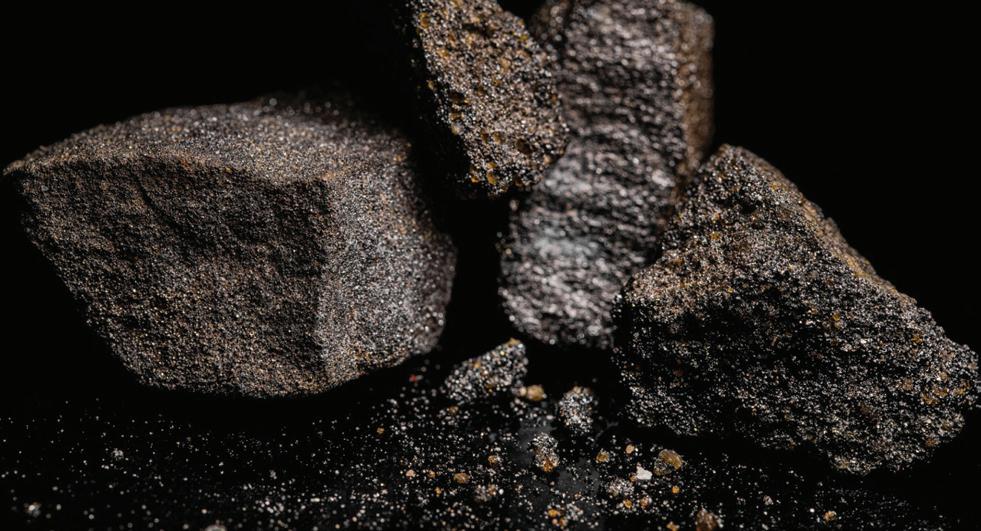
High-criticality: Platinum, manganese, iron ore, coalchrome
Moderate to high: Gold, vanadium, palladium, rhodium, rare earth elements
Moderate: Copper, cobalt, lithium, graphite, nickel, titanium, fluorspar, uranium, aluminium, zirconium
Strategy Source: DMPR, 2025 | Policy Document




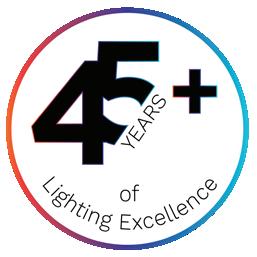
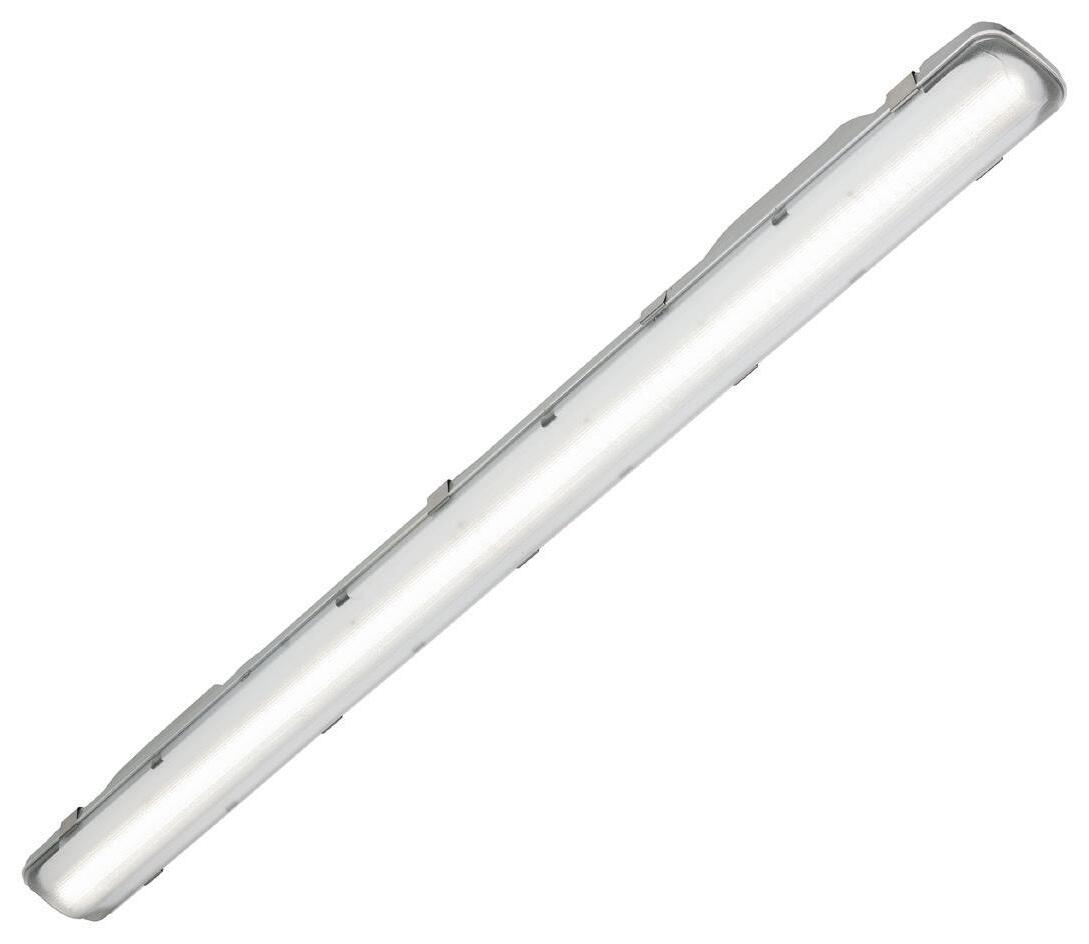





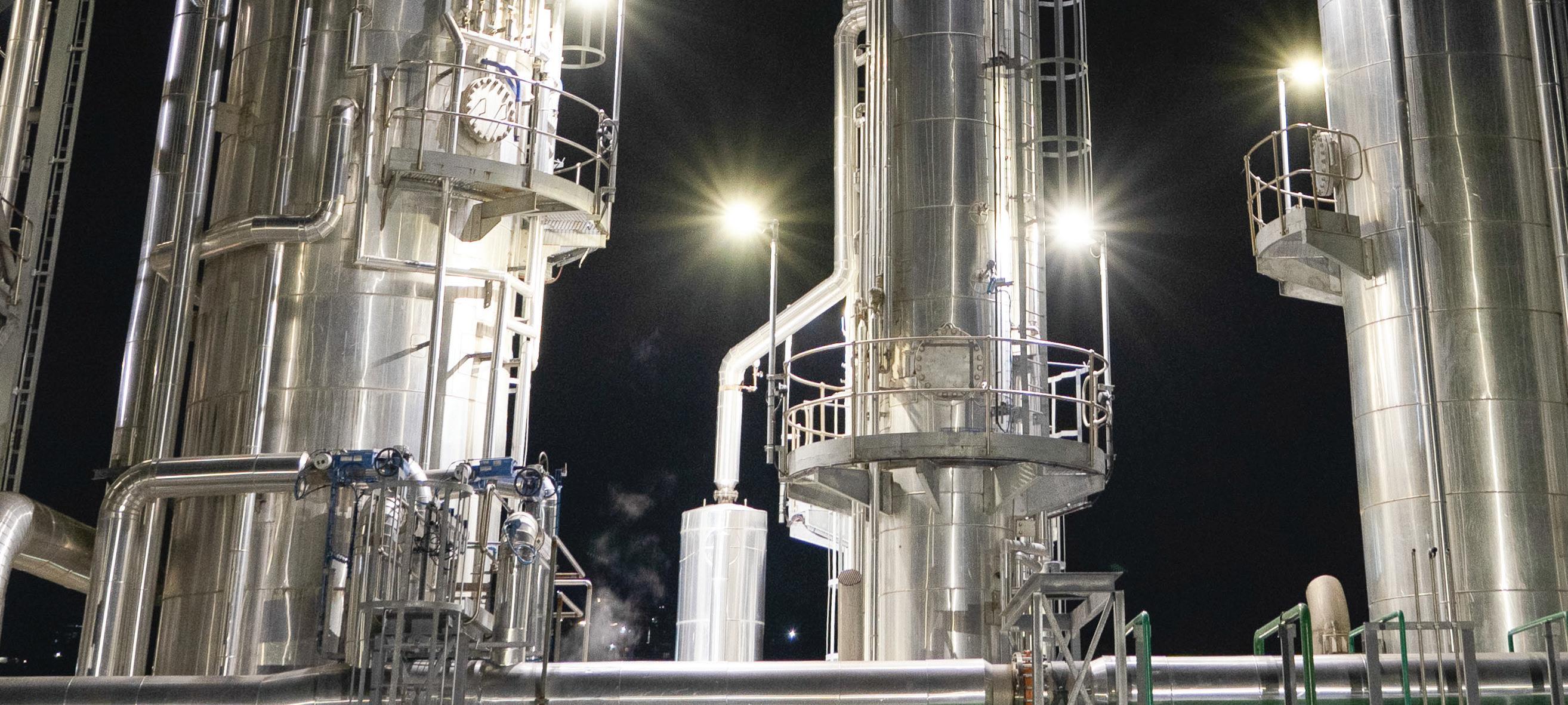
We offer a range of high-quality, South-African designed and manufactured LED luminaires, suitable for the Oil & Gas industry. BEKA Schréder caters for all industry subsegments, namely upstream, midstream and downstream. For a holistic lighting solution suitable for Zoned Environments, contact us today!

AKS Linings Systems is ensuring geomembrane liners offer reliable containment and environmental protection barriers long after mining activities have been completed
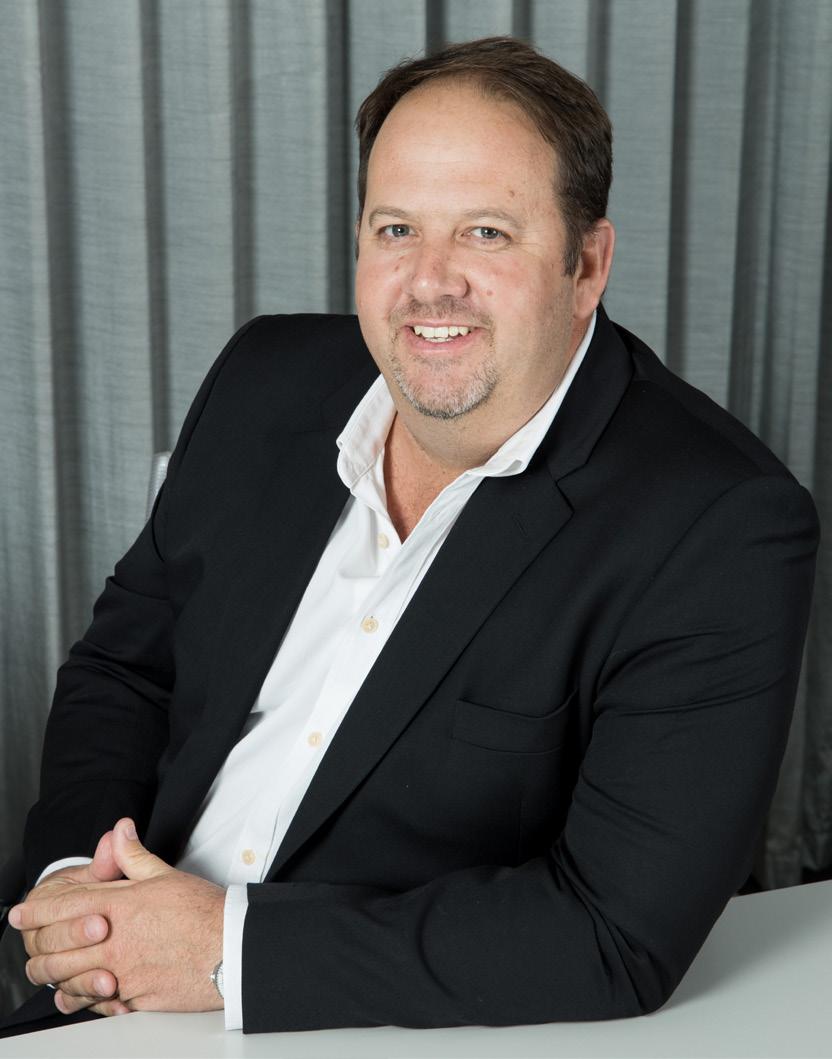
TThe use of geomembrane liners in mining applications has been well documented, tried and tested, for over 50 years now. Mining companies are constantly improving the extraction processes for recovery of minerals; so, too, the demands placed on a barrier and containment system need to track these advances.
As global awareness picks up, with a stronger focus being placed on our environment, barrier systems and the life expectancy thereof need to track these higher and longer design life requirements.
AKS Lining Systems is a modern manufacturing facility specialising in the production
of geomembrane liners specifically for the mining industry. The company has been manufacturing quality thermoplastic products since 2002 and operates within a very specialist yet expanding market in geomembrane liners. In addition to supplying the local South African market as well as the Southern African Development Community region, it exports to more than 23 countries worldwide.
AKS Lining Systems is an extremely competitive global producer of thermoplastic products. Technical manager Peter Hardie has been involved in the lining industry for over 25 years and has worked on projects all over sub-Saharan Africa and globally.
Giving a short overview of the company’s Cape Town–based operation, and developments he has seen in the industry, Hardie comments: “One of the key aspects to producing a good quality geomembrane liner is starting with a good quality, proven geomembrane grade resin. Our manufacturing plant is situated close to the international harbour port. This allows us easy import of the high-grade hexene-based resins, which we need for production of good quality geomembrane liners—be these high-density polyethylene (HDPE) or linear low-density polyethylene (LLDPE). This is tried-and-tested technology, and HDPE liners are specified in nearly all mining containment applications. The broad-based, high chemical resistance of HDPE still makes it the liner of choice.”
When questioned on some of the challenges he sees in the geomembrane industry, Hardie comments: “One of the biggest challenges that we as manufacturers, contractors, engineers, mine owners and the general public face is the threat of low-quality, sub-standard products entering the market. Contractors and mine owners will often just look at the bottom line, and the lowest price wins the job.

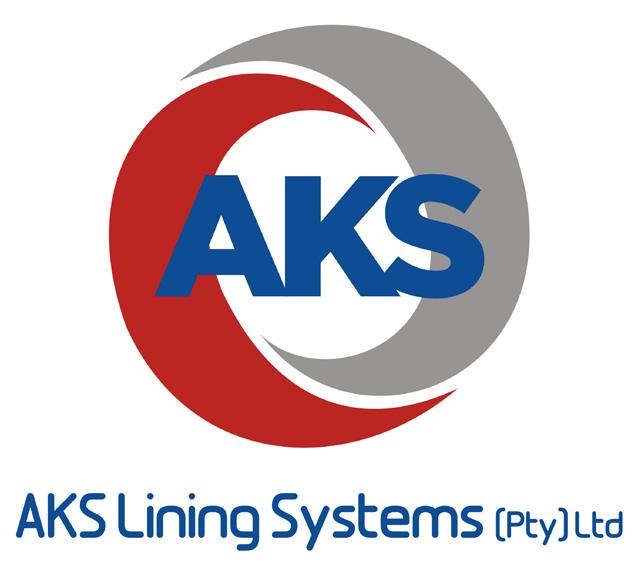
“At face value, it is really not easy to distinguish a good quality liner from a poor quality liner. Unfortunately, generally the first place to look is price. If the price is considerably lower than that of other reputable manufacturers, the chances are good that the product will ultimately have some shortcoming. Approximately 85% of the finished product is made up of the virgin resin, which generally has a global pricing pattern— meaning all good geomembrane grade resins tend to cost about the same—there is not that much room to manipulate a large price difference between good quality products.”
How, then, do these ‘low price’ products enter the market?
“There are a number of ways that unscrupulous manufacturers can lower the end price of their product, and these include practices such as using ‘fillers’. These are products like calcium carbonate, which costs a fraction of the resin price, but is added in large percentages into the finished product—effectively giving a substantial saving. It is very challenging to check if these fillers are included in the product, without laboratory testing,” Hardie explains.
“We also see manufacturers generating product data sheets in an effort to simply confuse the engineers and clients. This can be in the form of listing testing methods that show high results, but are not comparable
to the actual test methods called for in project specifications.
“We have seen products supplied with no inner cores for unrolling or handling on site, and numerous other shortcuts. The lack of raw material traceability and manufacturing quality control processes is another shortcut that gets taken.”
He adds, “ Thankfully, in a South African context, we have extremely robust specifications in the form of SANS 1526 and GRI-GM13. We also have a very well-informed and firm government authority in the form of the Department of Water & Sanitation and the Department of Forestry, Fisheries & the Environment, which insist on strict project specifications, conformance testing and additional third-party verification to ensure geomembrane liners are up to standard.”
AKS Lining Systems offers an ‘open-door’ policy, where clients and consultants can come through and inspect the company’s product during the production process. This allows for the product to be sampled and tested prior to it arriving on site. In addition, once the product arrives on site further sampling and testing can be done at overseas laboratories or within South Africa, to further ensure the product supplied to site meets the project specifications.
Hardie comments: “Our goal and mission for the foreseeable future will be that of education and training. We are seeing far too many cheap alternatives entering our market, from various parts of the world. The long-term effects of these could be catastrophic, should the barrier systems fail to protect our groundwater and environment. We will be reaching out to mining consultants, specifiers and engineers in an effort to highlight good quality product
and good quality specifications. This is not in an effort to promote only the use of AKS’s products but to promote the use of all good quality products.
He continues: “It is easier to make a good geomembrane using good quality resin and good quality master batch than it is to make a poor quality geomembrane, having to batch in various additives and fillers, and then create clever data sheets to still make the product appear great.”
AKS has a comprehensive inhouse laboratory to test and monitor the quality of all its incoming raw materials and finished products. The company’s philosophy is to analyse customer needs and to offer them technical, hands-on advice—resulting in long-lasting solutions.
“In mining applications specifically, geomembrane liners offer reliable containment and environmental protection barriers, not only during mining activities but they must last long after mining activities have finished,” Hardie concludes.
For further information, telephone +27 (0) 21 983 2700 or email aksmarketing@aks.co.za.
“
One of the biggest challenges is the threat of lowquality, substandard products entering the market.”

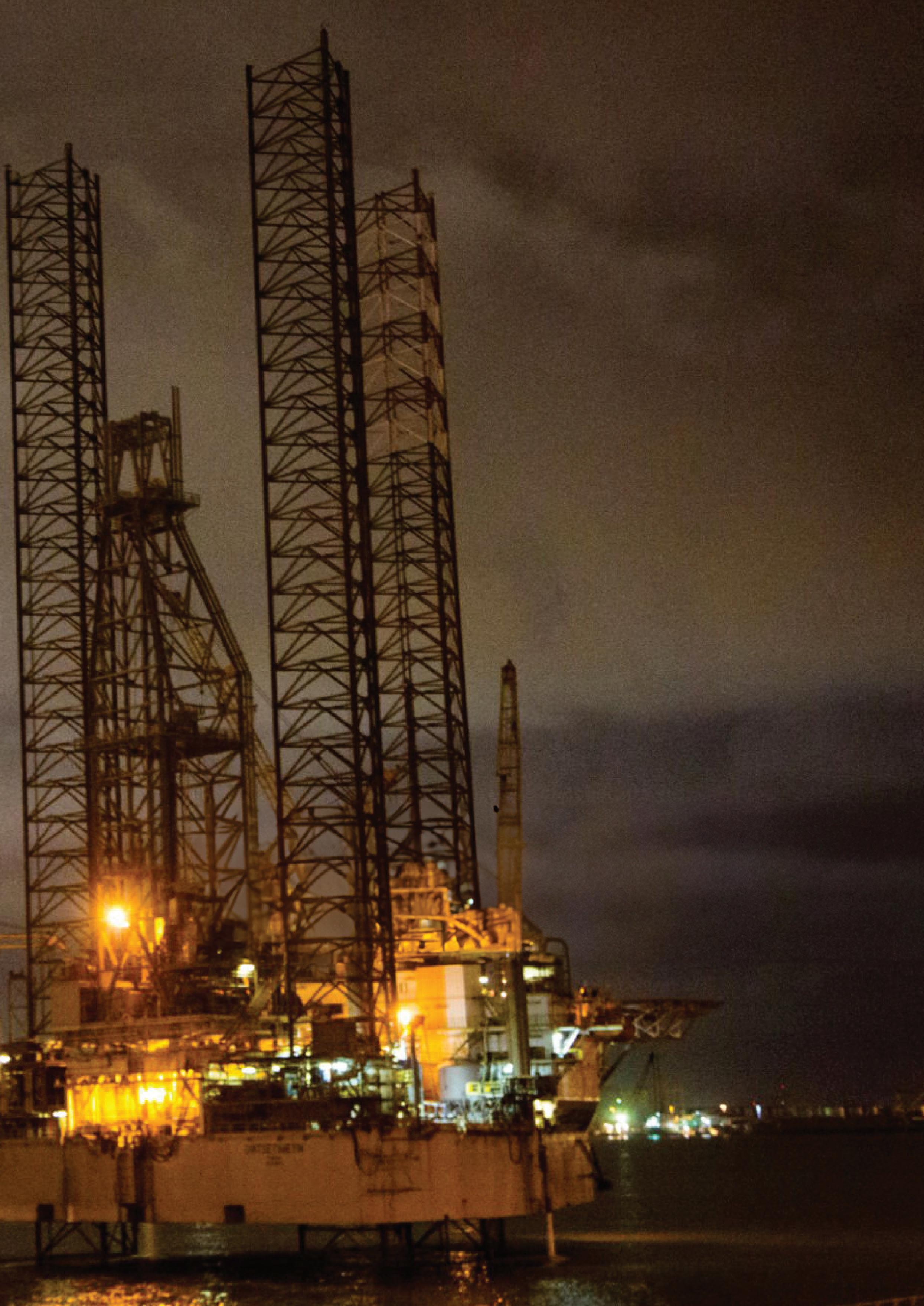
The long-awaited initial public offerings of Nigeria’s NNPC and Angola’s Sonangol signal a seismic shift in Africa’s oil industry
The listing would allow NNPC to compete globally for investment on equal footing with international oil majors
If Africa’s oil sector is poised at the brink of a historic transformation. Two of the continent’s most powerful state-owned oil companies—the Nigerian National Petroleum Company (NNPC) and Angola’s Sonangol—are making concrete progress toward initial public offerings (IPOs) after years of anticipation.
These landmark moves mark more than just financial events; they represent a reshaping of how national oil companies operate, how they are perceived by the world and what future they may hold in a rapidly evolving global energy landscape.
The transition of NNPC and Sonangol from opaque state entities to publicly listed corporations would not only unlock capital but also usher in a new era of governance, accountability and strategic alignment with investor expectations. For resource-rich nations like Nigeria and Angola, the
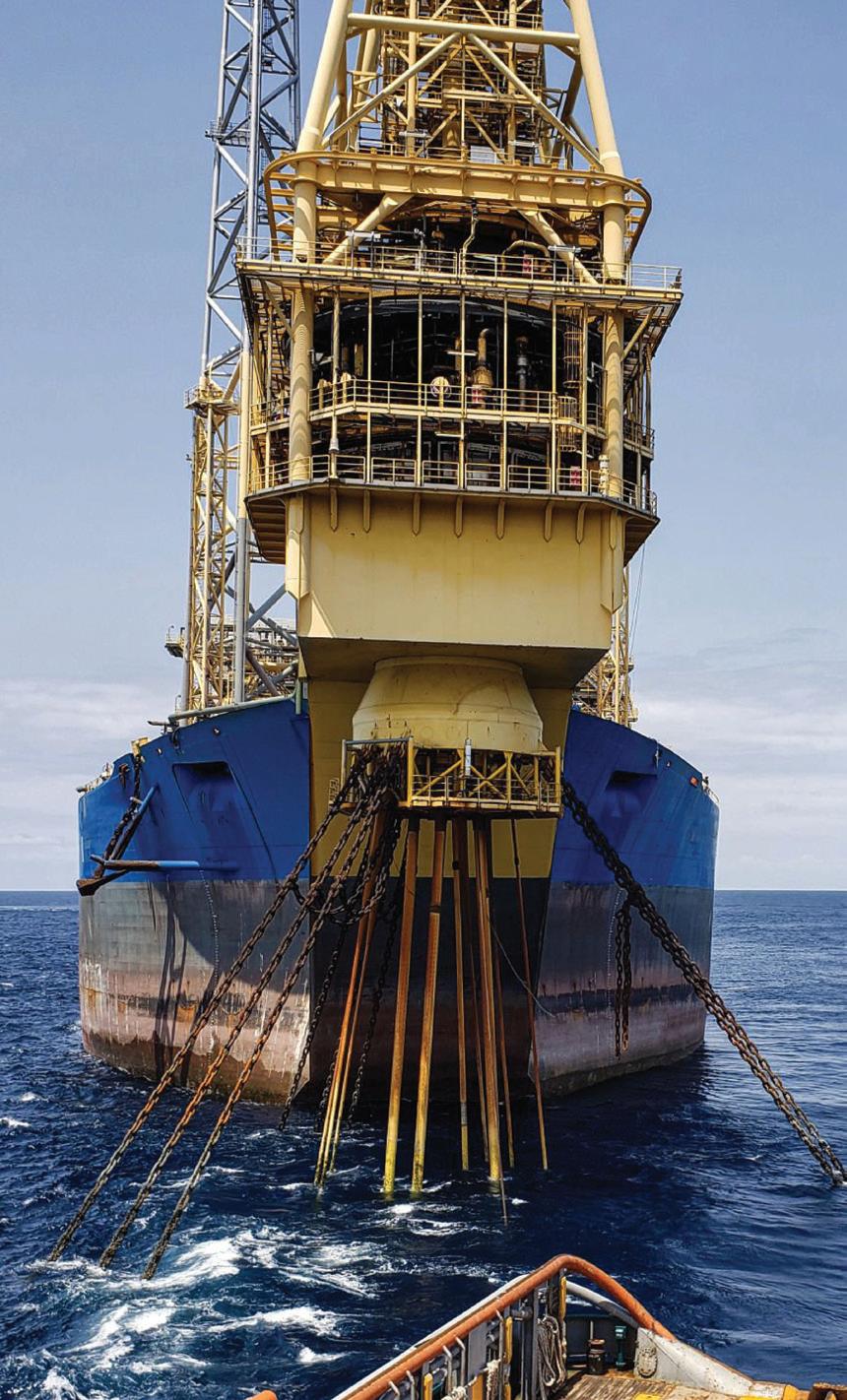
IPOs carry the promise of revitalised energy sectors, more efficient operations and improved public confidence in industries long criticised for lack of transparency.
Speaking at the 9th OPEC International Seminar in Vienna in July this year, Bashir Bayo Ojulari, group CEO at NNPC Limited and former Shell Nigeria managing director, described the IPO process as “a major inflection point—not only for Nigeria but for the African energy industry at large.”
He added, “This is the first time we are seeing a conscious shift from being just a state revenue generator to becoming a truly commercial entity, accountable to investors, shareholders and, most importantly, the Nigerian people.”
Nigeria’s journey toward privatisation of its national oil company formally began in 2021, with the signing of the Petroleum Industry Act, which restructured NNPC into a limited liability company: NNPC Limited. The new entity was officially incorporated under the Companies and Allied Matters Act in 2021, effectively setting the stage for eventual public listing. By becoming a commercial entity,
NNPC aims to separate itself from the political interference that often plagued the former corporation. Its current leadership has been vocal about the company’s plans to be IPOready by 2026. In March 2024, NNPC secured its first ever external credit rating from Moody’s and Fitch, both of which are essential steps toward listing.
Adedapo Segun, chief financial officer at NNPC Limited, stated recently: “We’re aligning our systems and governance structures with international best practices. This IPO is not just about capital raising; it is a strategic pivot toward operational efficiency and market-driven discipline.”
He added that the listing would allow NNPC to compete globally for investment on equal footing with international oil majors.
NNPC’s transformation is also being closely watched by African peers. The company’s recent deals with European energy giants and upstream asset acquisitions suggest a more assertive commercial strategy, with an eye toward becoming a dominant player in the continent’s energy landscape— not just by production volumes but by profitability and agility.

Angola’s state oil company Sonangol is on a parallel path. Since 2019, the company has been undergoing a restructuring process aimed at divesting non-core assets, improving corporate governance and streamlining its operations. This reform agenda, driven by the Angolan government’s broader economic diversification efforts, has laid the groundwork for Sonangol’s anticipated IPO, now scheduled for 2026.
Sebastião Gaspar Martins, CEO of Sonangol, confirmed earlier this year that the company had completed the spin-off of its regulatory and concessionaire roles, clearing one of the major hurdles for listing. “We are no longer the regulator, the operator and the shareholder at the same time,” he said. “Our IPO is intended to bring transparency, attract foreign investment and establish Sonangol as a modern, competitive oil and gas company.”
Sonangol has made significant strides toward this goal. In recent years, the company has divested stakes in dozens of subsidiaries, including banking, real estate and aviation ventures that were once emblematic of the company’s overreach and inefficiency. It has also released audited financial statements for the first time in its history, signalling a break from decades of opacity.
What distinguishes Sonangol’s IPO journey is the clear linkage between governance reform and investor interest. International investors, including energy-focused private equity firms and sovereign wealth funds, have been monitoring Sonangol’s progress closely.
Angola’s efforts to stabilise its macro-economic environment and attract capital into its upstream and midstream sectors have also enhanced Sonangol’s profile.
The significance of NNPC and Sonangol going public cannot be overstated. For decades, African national oil companies have operated with little oversight, often becoming vehicles for

political patronage and rent-seeking. This has hampered not only their operational efficiency but also the public’s trust in the energy sector.
The proposed IPOs signal a shift in mindset: from state-controlled bureaucracies to competitive, accountable corporations. By listing on public stock exchanges, these companies will be subject to rigorous financial disclosures, board scrutiny and performance benchmarks. This is expected to catalyse greater efficiency in resource management and open up opportunities for citizens to become shareholders in their national oil wealth.
Transparency and corporate governance reforms are also likely to ripple through the wider sector. Smaller national oil companies across Africa—including the Ghana National Petroleum Corporation, Tanzania Petroleum Development Corporation, and Equatorial Guinea’s GEPetrol—may be inspired or pressured to undertake similar restructuring efforts. The increased visibility into financials, decision-making and risk management will enable better partnerships with international investors, which are essential for developing Africa’s underexplored reserves.
Additionally, these IPOs could offer a new funding model at a time when global financiers are becoming more cautious about lending to hydrocarbon projects due to environmental, social & governance considerations. Instead of relying solely on loans or state budgets, African oil companies could tap equity markets to fund exploration, infrastructure and technology upgrades.
However, challenges remain. Both NNPC and Sonangol must still contend with political interference, legacy debt and uncertainty around glob-
al energy transition policies. Market reception will depend on how well they can communicate a compelling investment case that balances profitability with sustainability. Listing on exchanges with strong regulatory oversight, like London or New York, could enhance credibility, but would also expose the companies to higher scrutiny and compliance costs.
There are also social considerations. Public offerings must be structured to ensure broad access to shares, possibly through national savings schemes or diaspora bond platforms, to avoid reinforcing elite control of valuable national assets. Civil society organisations have already begun calling for inclusive processes that allow ordinary Nigerians and Angolans to participate in the wealth generated by these listings.
Despite these concerns, industry watchers remain optimistic. As Ojulari noted at the OPEC Seminar, “These IPOs are not silver bullets, but they are powerful instruments. They tell the world that African oil companies are ready to stand on their own, earn trust and drive the next phase of energy development on the continent.”
The IPOs of NNPC and Sonangol represent a watershed moment for Africa’s oil & gas industry. They signal a deep-rooted transformation—one driven by necessity, but also by opportunity. As these companies open their books and step onto the global stage, they may finally achieve what decades of reform promised, but never fully delivered: accountability, commercial discipline and a future built on shared prosperity.
If successful, their stories could redefine the role of national oil companies across Africa, turning once-shadowy behemoths into pillars of transparency and engines of growth in a new energy era.
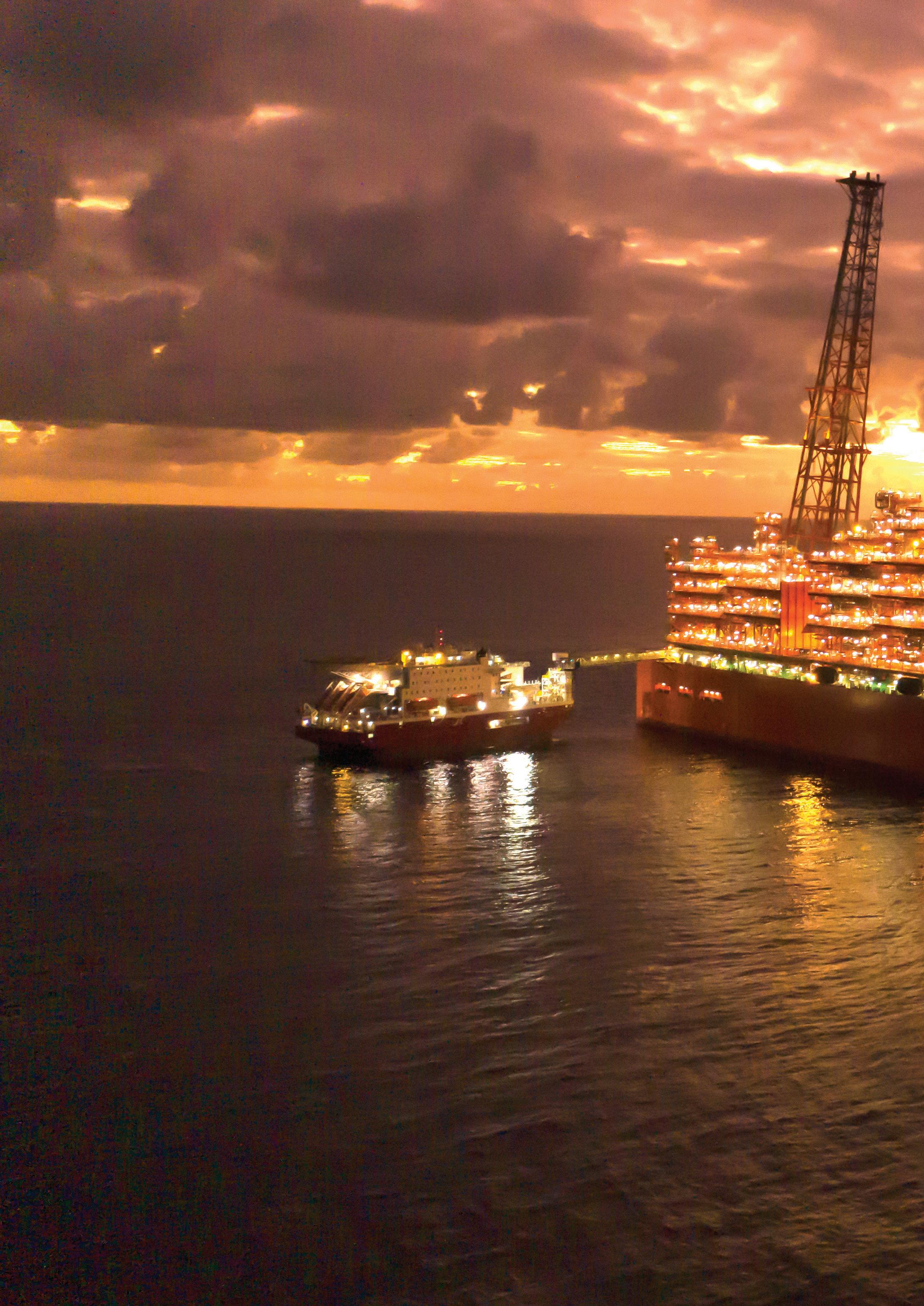
Natural gas and Africa’s energy future: balancing growth and sustainability

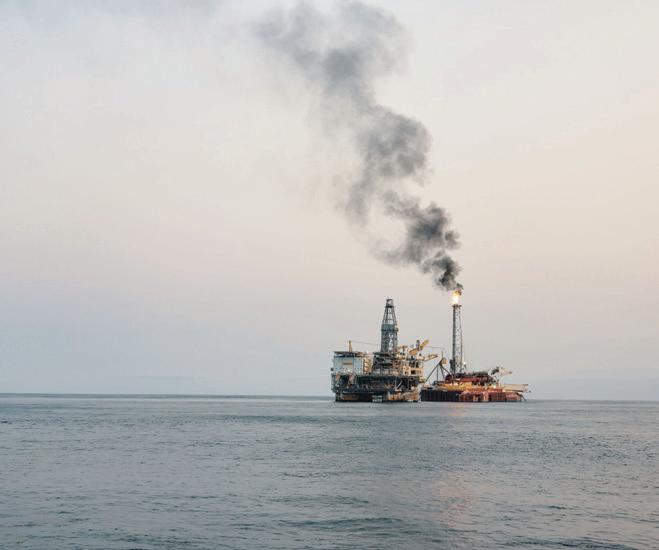
Africa is at a turning point in its energy journey. As cities expand and industries grow, the demand for electricity is rising fast. By 2040, Africa will need nearly 1 200 gigawatts of power, yet 600 million (tinyurl.com/4stvdsnt) people still lack electricity—holding back development, healthcare and education.
This creates a major challenge: How can Africa expand energy access without locking itself into high-emission fuels? The solution must balance affordability, sustainability and reliability.
While solar and wind power are critical, most countries lack the infrastructure to rely on them alone. Grids must remain stable, industries need steady energy, and cross-border trade requires a consistent supply. Natural gas plays a vital role in this—acting as a bridge to cleaner energy while meeting urgent electricity needs.
Africa houses about 7% (tinyurl. com/23thpfba) of the world’s proven natural gas reserves, and production has increased by over 70% since 2000, with forecasts predicting 520 billion cubic metres by 2050.
Several African countries are already benefiting from utilising natural gas reserves:
Nigeria, Africa’s largest gas producer, has over 200 trillion cubic feet (tcf) of reserves, supporting millions of jobs across extraction, processing and transportation.
The Greater Tortue Ahmeyim (tinyurl.com/54rytaup) project in Senegal and Mauritania is attracting billions in investment, strengthening energy security. It is one of the deepest offshore developments in Africa, with gas resources in water depths of
up to 2 850m. Once fully commissioned, GTA Phase 1 is expected to produce around 2.3 million tonnes of liquefied natural gas (LNG) per year.
South Africa, facing a ‘gas cliff’ due to declining imports, is exploring its local reserves to protect industrial growth.
Mozambique’s Coral Sul (tinyurl.com/vun2snst) floating LNG platform has already started production, with revenue projections reaching around $70 million annually between 2025 and 2027. The Coral Sul FLNG is the first floating natural gas liquefaction unit built for the African continent, the third of its kind in the world.
Meanwhile, the Mozambique LNG (www.mozambiquelng.co.mz) and Rovuma LNG (tinyurl.com/2v75afzf) projects hold immense potential, though they remain in early development stages. Plans for the Mozambique LNG project are approximately 65 tcf of recoverable natural gas, including the construction of two liquefaction units with a capacity of 13 million tonnes per annum, with expansion capacity of up to 43 MTPA. The first phase of the Rovuma project concerns large fields in the Mamba complex and will be complemented by the construction of modular onshore liquefaction trains, up to an overall production capacity of 18 million tonnes of LNG per year.
Many African countries produce only a small fraction of global emissions, yet they withstand the worst of climate change, facing extreme droughts, floods and food insecurity. Expecting them to abandon fossil fuels without practical alternatives could slow economic development and widen inequalities.
A fair energy transition must acknowledge that countries have different economic conditions and needs than major polluters. The shift to cleaner energy must be structured in a way that allows Africa to grow sustainably without compromising its ability to provide reliable power, create jobs and strengthen its industries.
Currently, many African countries do not have the infrastructure to rely on renewables alone. Power grids are weak, underfunded and often unreliable. The main challenge with solar and wind energy is that they depend on the weather. If the sun is not shining or the wind is not blowing, power generation
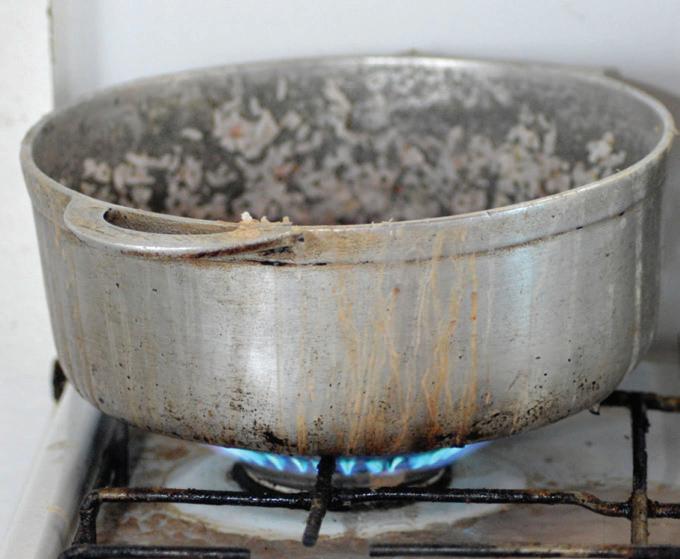
Natural gas and renewables complement each other to form a balanced and resilient energy mix.

The infrastructure built for natural gas today, such as pipelines and generation facilities, can even be repurposed to carry cleaner fuels like green hydrogen
drops, causing disruptions. Batteries can store excess energy for later use, but large-scale storage technology is still too expensive and not widely available.
This is where natural gas plays a crucial role. Natural gas and renewables complement each other to form a balanced and resilient energy mix. Gas provides the flexibility to fill in the gaps when renewable output is low, ensuring a constant and stable electricity supply. Additionally, gasfired plants can ramp up quickly to meet demand and are more responsive than coal, making them ideal partners for intermittent energy sources.
It is noteworthy that the infrastructure built for natural gas today, such as pipelines and generation facilities, can even be repurposed to carry cleaner fuels like green hydrogen. This synergy allows African countries to
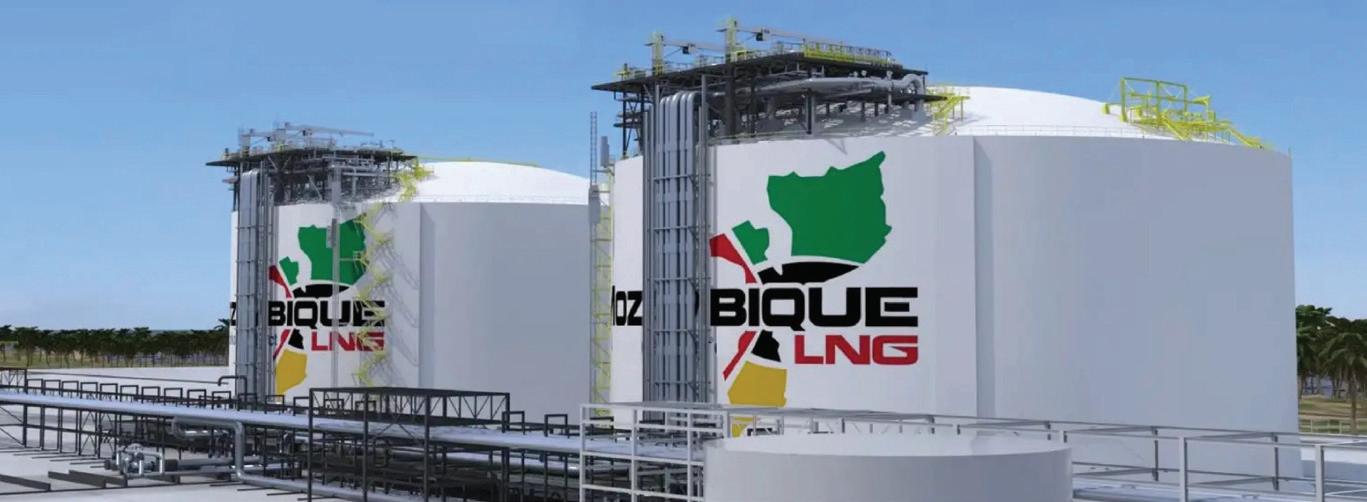
continue scaling up renewables with confidence, knowing that natural gas is there to provide reliability, bridge energy gaps and support the transition toward a low-carbon future.
Natural gas has been a key transitional energy source worldwide. In Africa, its role is even more critical. The continent has vast gas reserves, yet much of its potential remains untapped due to limited infrastructure investment and regulatory uncertainty. If developed strategically, natural gas can drive industrial growth, strengthen energy security and create the capacity needed for long-term investment in renewable energy. However, unlocking this potential requires co-ordinated action.
Expanding gas infrastructure requires long-term investment in pipelines, processing plants and export terminals, which take years to build. Investors need policy clarity and
predictable returns, so governments must offer stable tax structures, licensing agreements and local value retention policies to keep revenues in African economies.
Africa’s energy future must grow in a way that works for its people. Electricity must remain accessible for homes, businesses and industries while innovative technologies develop. This is not a choice between gas and renewables; it is about using the right tools at the right time. Natural gas is a cornerstone of an orderly and just transition.
With careful planning, natural gas can support Africa’s economy today while building the foundation for a cleaner, more resilient future.
Adrian Strydom Chief Executive Officer South African Oil and Gas Alliance



How AI–powered enhanced oil recovery is breathing new life into southern Africa’s ageing oilfields
In a rapidly evolving energy landscape where efficiency, sustainability and innovation are increasingly indispensable, the intersection of artificial intelligence (AI) and enhanced oil recovery (EOR) technologies is proving a game-changer—particularly for ageing oilfields across southern Africa.
As the continent faces the dual imperatives of energy security and economic growth, AI–powered EOR is emerging as a strategic lever to maximise production from mature assets, reduce costs and extend the life of valuable hydrocarbon reserves.
The African Union Commission has underscored this shift. In its recent continental digital strategy framework, it declared artificial intelligence a “strategic priority” for transforming Africa’s development trajectory across sectors—including energy. For the oil & gas industry, this affirmation is more than symbolic. It signals a new era in which digital technologies are no longer add-ons but integral tools in optimising legacy production.
EOR refers to techniques that extract more oil from reservoirs beyond what primary and secondary recovery methods achieve. Traditional EOR methods—such as gas injection, chemical flooding or thermal recovery—have been used for decades. But
their effectiveness has often been limited by a lack of precise data and reservoir understanding. This is where AI is redefining the paradigm.
By deploying machine learning algorithms, neural networks and predictive models, operators can now simulate complex reservoir behaviour, identify optimal injection strategies and dynamically adapt to subsurface changes. AI helps engineers make faster, data-driven decisions—eliminating the guesswork that has long plagued EOR efforts.
Take predictive modelling, for instance. It enables geoscientists to analyse seismic data, well logs, production rates and pressure readings to predict how oil will move through a reservoir. This approach has led to significant improvements in water-alternating-gas processes and smart chemical injection schedules—ensuring more of the remaining oil is recovered efficiently and cost-effectively.
A major breakthrough with AI–enhanced EOR lies in real-time reservoir management. Traditionally, operators have relied on periodic well tests and lab analysis, often resulting in reactive—not proactive—management. Today, AI systems can continuously monitor reservoir conditions and predict pressure or flow disruptions before they happen.

This level of automation helps mitigate issues like early water breakthrough or gas coning—phenomena that previously led to declining productivity in old fields. By integrating sensors, cloud-based computing and edge analytics, oilfields are evolving into intelligent, self-optimising systems.
In southern Africa, this is particularly valuable. Many of the region’s oilfields, especially in Angola, Namib-
EOR refers to techniques that extract more oil from reservoirs beyond what primary and secondary recovery methods achieve.
ia and South Africa, have passed peak production phases. For these mature assets, AI–enabled EOR offers a lifeline: enhancing ultimate recovery factors by up to 10%–20%, according to recent industry benchmarks.
Several African governments are taking note. As part of broader strategies to modernise hydrocarbons management, countries like Angola and Namibia have begun aligning regulatory


frameworks to incentivise investment in advanced recovery methods.
Angola’s National Agency for Oil, Gas and Biofuels (ANPG), for instance, recently included incentives in licensing rounds for operators investing in digital EOR solutions. These include extended field development timelines, reduced royalties on incremental production, and tax reliefs for AI–driven optimisation projects.
Namibia, following recent offshore discoveries, is drafting policies aimed at future-proofing its upstream regulations. These include provisions for digital integration in field development plans and mandatory data-sharing protocols between operators and regulators, ensuring the country can capitalise on AI insights even at an early stage of field life.
Meanwhile, South Africa’s Upstream Petroleum Resources Development Bill outlines mechanisms for encouraging investment in secondary and tertiary recovery technologies—ensuring South Africa’s untapped and ageing reserves alike are optimally exploited.
Leading international and regional operators are already embracing the AI–EOR convergence.
In Angola, Azule Energy—a joint venture between BP and Eni—has implemented machine learning models for pattern recognition in its mature offshore fields. These tools help forecast water cut and optimise injection schemes, with reported production uplifts of up to 12% in pilot zones.
TotalEnergies has also incorporated AI into its Block 17 redevelopment efforts. Using cloud-based AI platforms, the operator analyses real-time production data to finetune its surfactant flooding techniques, maximising recovery while lowering operational emissions.
In Namibia, early-stage operators like ReconAfrica and Galp Energia are actively building digital reservoirs from the outset. By adopting AI-based reservoir characterisation, they aim to reduce development risks and plan for long-term EOR viability from day one—something rarely seen in African frontier basins.
In South Africa, the potential application of AI in EOR is drawing attention within the gas-to-power and onshore Karoo basins. The Petroleum Agency SA has expressed
interest in forming public-private digital partnerships, aiming to accelerate learning curves and attract expertise in data-centric field management.
While the promise is clear, implementation across southern Africa is not without its challenges. AI–based EOR demands robust digital infrastructure, skilled professionals and access to high-quality data—areas where gaps still exist in many African oil-producing nations.
However, initiatives to bridge this divide are underway.
The African Energy Chamber has launched training partnerships with global technology firms to upskill engineers in data analytics and machine learning. Meanwhile, universities in Angola and South Africa have begun developing AI modules within petroleum engineering degrees, nurturing the next generation of talent.
Cloud computing and satellite connectivity are also helping bypass terrestrial infrastructure constraints. By partnering with global cloud providers, African operators can now process and analyse subsurface data without needing in-house supercomputers—democratising access to advanced EOR tools.
As the energy transition gathers momentum, Africa’s oil industry must extract maximum value from every barrel. For southern Africa in particular, where new discoveries are scarce and many fields are ageing, the convergence of AI and enhanced oil recovery presents a timely and powerful solution.
It is not just about boosting output but doing so intelligently, sustainably and competitively. With growing policy support, regional innovation and the African Union’s firm endorsement of AI as a developmental catalyst, the digital oilfield of the future is no longer theoretical—it’s operational.
If the current trajectory continues, southern Africa could well become a global case study in how smart technology can extend the productive life of hydrocarbons, while laying the groundwork for an energy-secure, innovationdriven future.



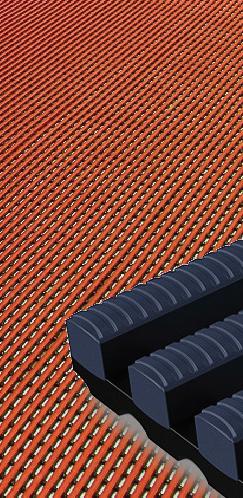
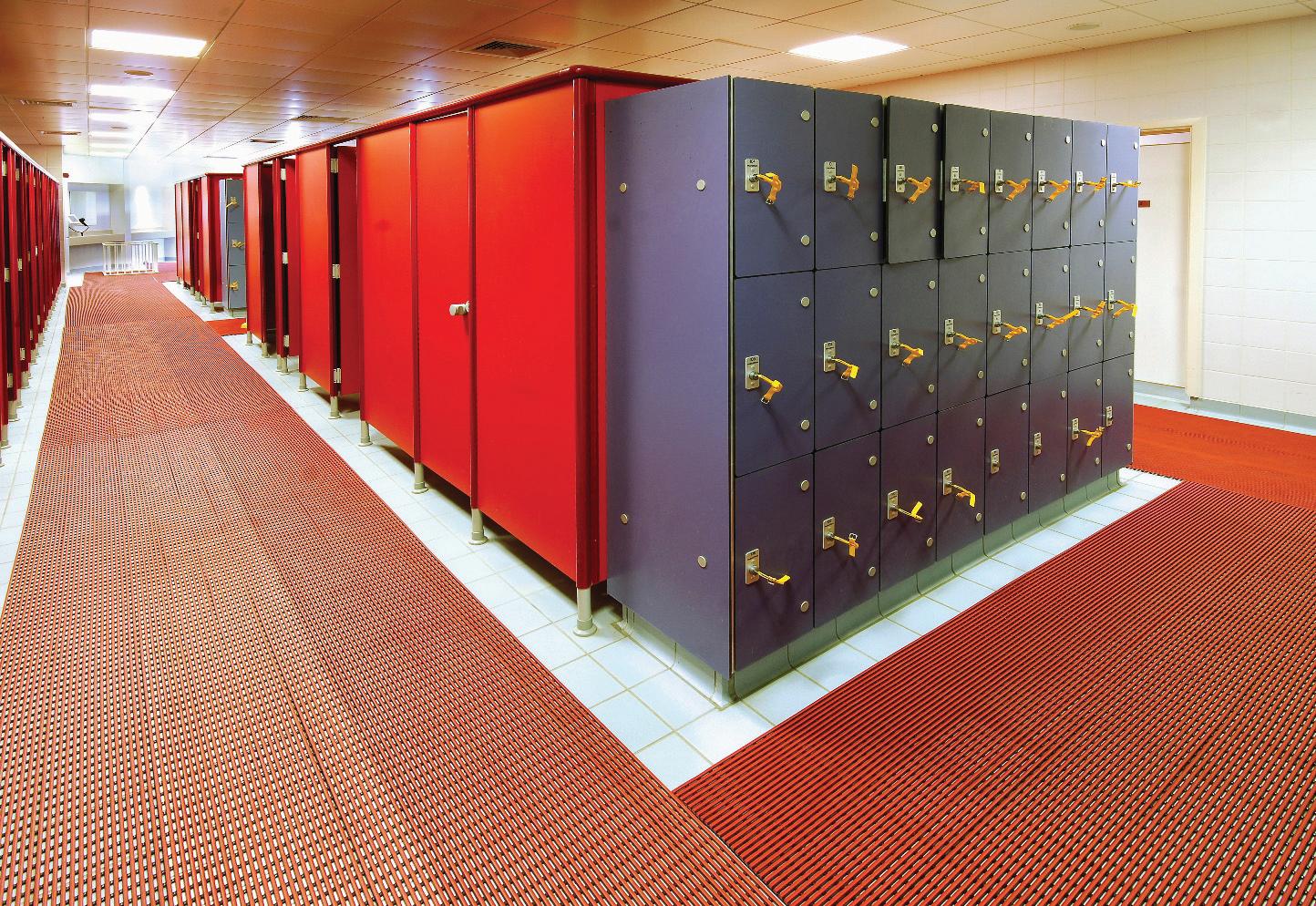
• Easy to installcut to shape/size
• Hygienic and easy to clean
• Four-way drainage
• Warm and comfortable for barefoot traffic
• ‘Sanitized’ Anti-bacterial and anti-fungal properties


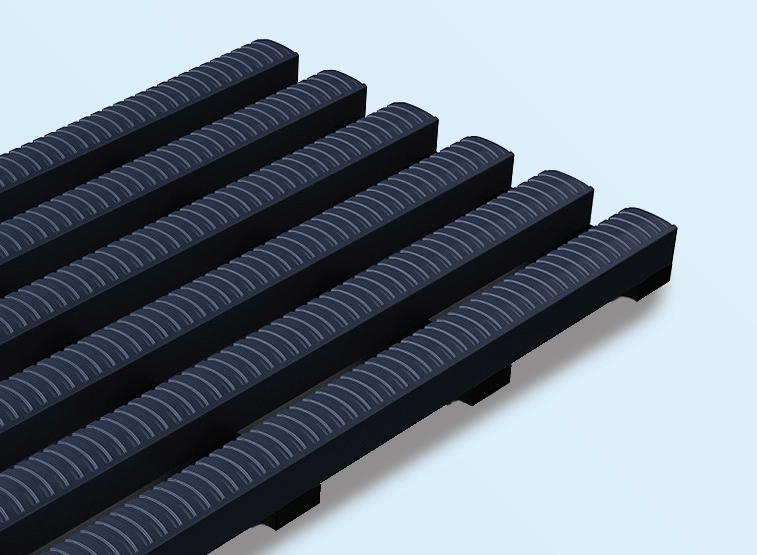
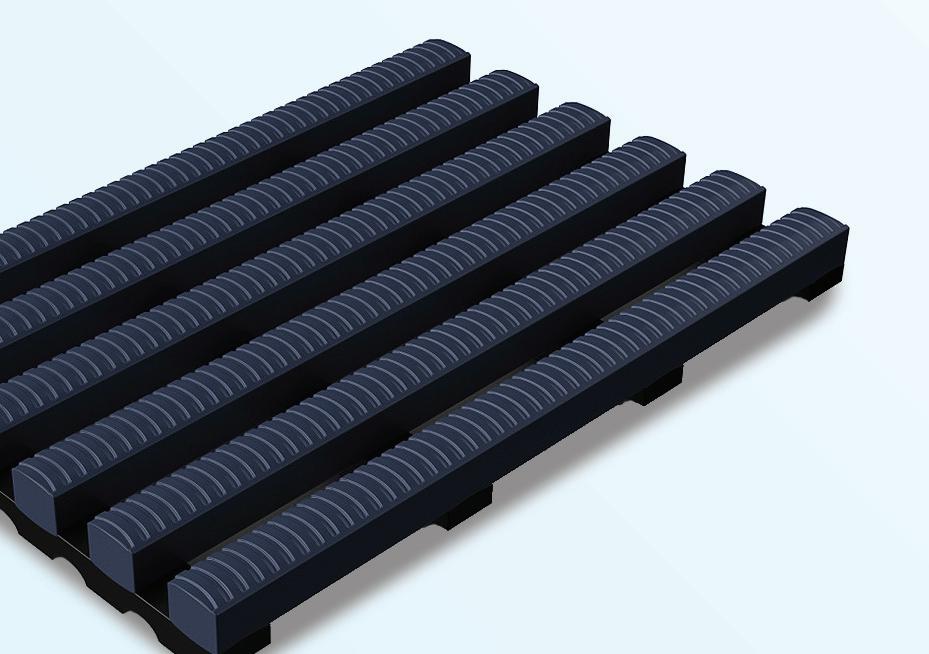






This year marks a significant milestone for Integrated Fire Technology (IFT): 10 years of pioneering fire protection solutions within the southern African mining sector.
Founded on a commitment to innovation, safety and service, IFT has become a trusted partner to some of the region’s largest mining operations—safeguarding both people and critical assets in one of the world’s most demanding industries.
IFT’s story began with a focus on protecting heavy mobile equipment—often referred to as ‘yellow metal’—using FOGMAKER’s advanced water-mist fire suppression systems. The mining environment, with its complex mix of combustible fuels, high temperatures and heavy-duty machinery, demanded a solution that could be both fast-acting and reliable. FOGMAKER technology provided exactly that. As IFT earned its reputation on mining sites, customers began turning to the company for broader fire suppression needs: from gensets and transformers to conveyors, motor control centres and lamprooms.
To deliver world-class coverage beyond mobile equipment, IFT partnered with AF-X Fireblocker and QTEC foam spray systems—expanding its portfolio with globally certified solutions.
Today, the company tailors systems to suit each application, often deploying multiple technologies in combination. For example, large mining trucks may use FOGMAKER to protect the engine compartment, while AF-X Fireblocker secures the sensitive electrical room. As the industry embraces battery-powered machines, IFT is already ahead of the curve, applying AF-X to safeguard battery compartments while using FOGMAKER to shield electric drivetrains and hydraulic packs.
“Each product solution has its own application criteria, further supported by global stan-


dards that we design and adhere to. There are some applications where we use a combination of products to provide a holistic solution,” says managing director, John Russell.
The past decade has seen a shift in the mining sector’s approach to fire safety. Beyond traditional building codes, insurers, regulators and mining majors are demanding higher levels of protection for specialised equipment and infrastructure. IFT has played a leading role in this evolution. One example is the increased protection of conveyor belt drives and pulleys, spurred by several tragic fires in South Africa. By providing systems designed for these high-risk areas, IFT has directly contributed to saving lives and preventing costly operational downtime.
At the heart of IFT’s success lies its understanding that fire suppression is not just about equipment—it’s a service-driven industry. With fire systems classified as Class A safety devices on mines, reliability and response time are paramount. IFT has built a strong regional network of distributors and technicians, ensuring on-site support by certified professionals. Quality control is reinforced through regular planned task observations, guaranteeing that service standards remain consistent across diverse jurisdictions.
Adds Russell: “Having world-class premium products and brands, which have been globally certified, ensures Integrated Fire Technology solutions in the industry are reliable and fit-for-purpose.”
Looking forward, IFT is preparing for the mining sector’s next wave of change. Battery-powered machinery, digital interconnectivity and smarter, preventative fire detection systems are all shaping the company’s future strategy. By integrating its solutions with emerging technologies, IFT is positioning itself to remain the partner of choice for mines determined to protect both their workforce and their investments.
Ten years in, Integrated Fire Technology has grown from a single-solution provider into a comprehensive fire protection leader. For southern Africa’s mining industry, that means safer operations, stronger resilience and a partner that will continue to innovate for the decade ahead.
For more information, visit ift.africa
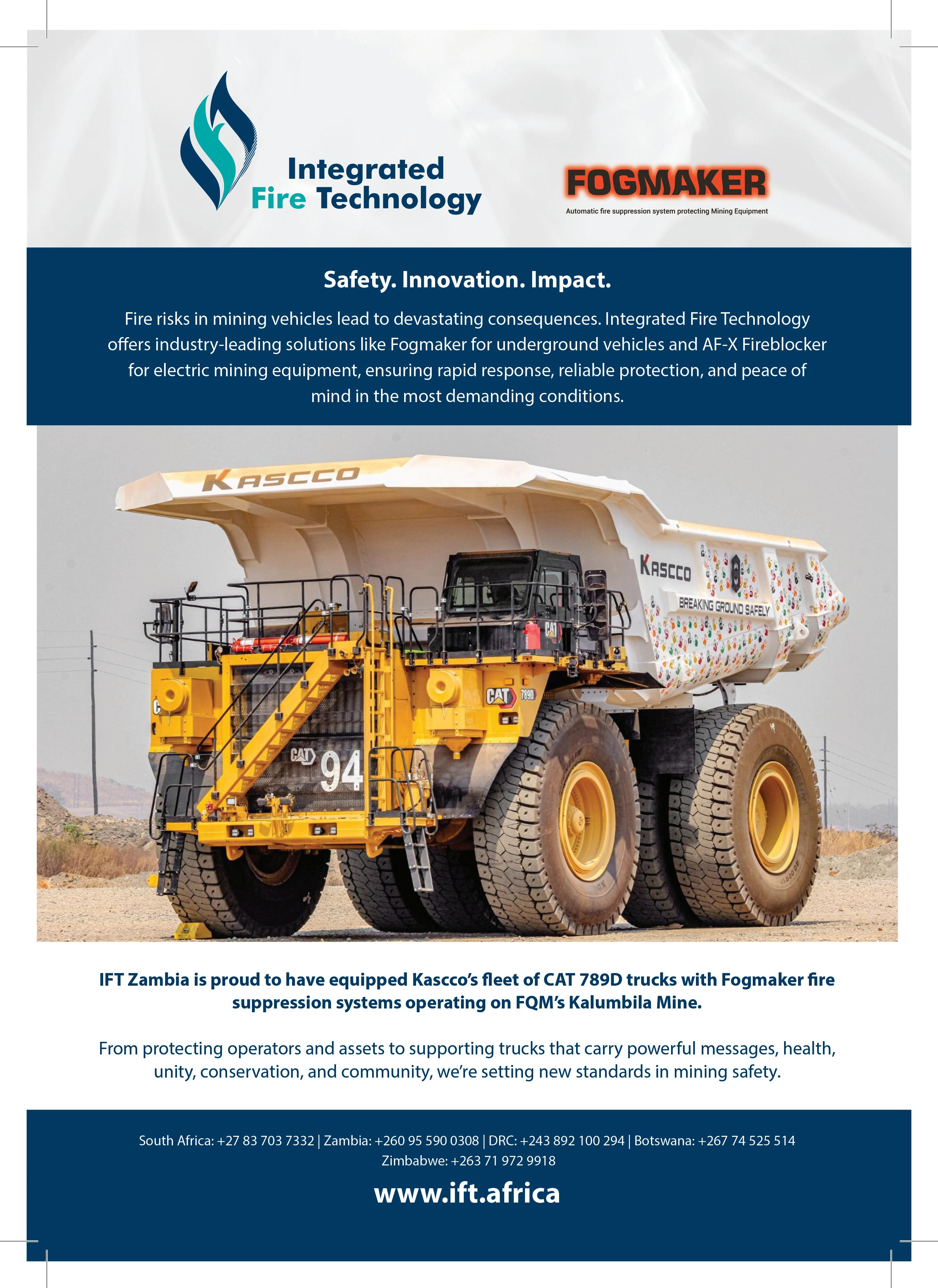

Controlling dust and managing road surfaces are vital for safe, efficient operations in mining
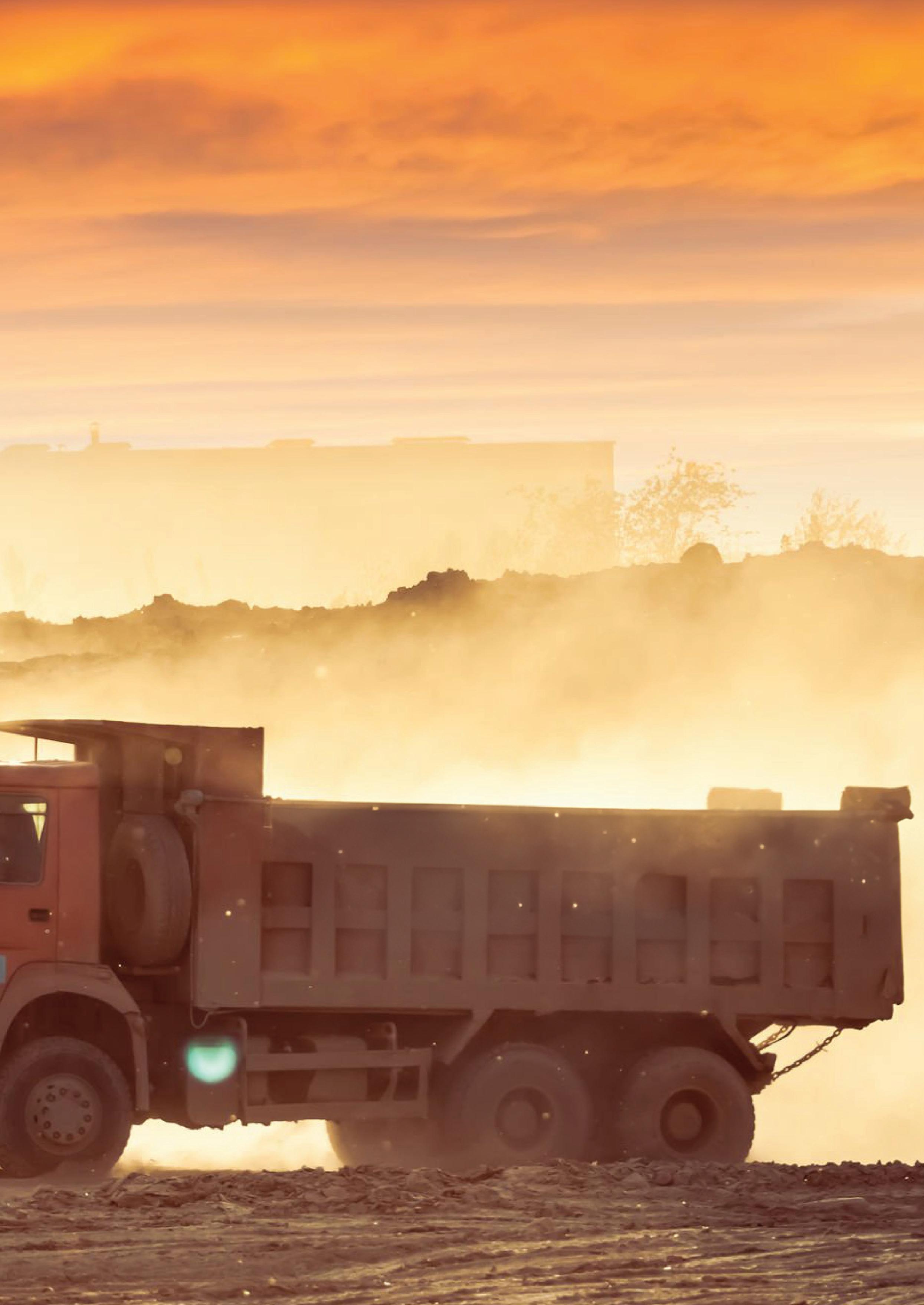

In many work sites, especially mines and quarries, dust is more than just an annoyance. It lowers visibility, damages machines and affects health. If not managed, fine particles settle on electrical components, clog filters and lead to breakdowns. For workers, breathing in this dust over time causes respiratory problems and worsens existing conditions like asthma.
A smart dust control plan is not just about following health regulations. It keeps operations running smoothly and safely, says Dust-A-Side (dustaside.com).
In dry areas, simply spraying water on dusty roads or stockpiles may work for an hour, but it dries out fast. Chemical dust suppressants, binders or wetting agents are used to lock in fine particles. Some work by drawing moisture from the air, others form a crust that holds dust down even in windy conditions. Studies show these binders are non-toxic to humans, animals and plants, and they cut overall water use by improving spray effectiveness. Applying these products on haul roads, stockpiles and work zones creates a crust that resists wind uplift and vehicle disturbance.
up two fog units at its ore transfer area. Before the change, visibility often dropped below safe levels by midday. Drivers had to slow down or stop entirely. After installing fog units, the dust haze dropped, allowing full-shift operations without delay. On top of that, water use dropped by 60% compared to old sprinkler methods.
Large operations often need a stronger solution for airborne dust. That is where fog cannons come in.
Fog systems are also mobile and can be moved where needed. They can be mounted on trailers or fixed platforms and adjusted to follow changing wind patterns. This is useful in open pits where the activity zone changes often. Instead of digging new pipes or installing fixed systems, teams can just tow the cannon into place and switch it on. Choose a fog cannon model based on the target area’s size and wind conditions. High-pressure pumps extend reach in windy sites, while low-pressure units rely on evaporation to bind dust in calm environments. Operators should follow a schedule that aligns with peak dust-generation periods—such as shift changes or blasting—to maximise suppression.
Many companies now track how often they need to water roads and how fast dust levels rise again. This helps them choose the right solution instead of wasting water or fuel.
Large operations often need a stronger solution for airborne dust. That is where fog cannons come in. These machines spray a fine mist into the air across open areas like crushing zones or loading points. The mist bonds with the floating dust and causes it to settle before it spreads.
One site in Limpopo saw immediate benefits after setting
Haul roads on mining and construction sites take a beating. Massive trucks carry heavy loads all day—and without maintenance, these roads fall apart. Potholes, ruts and loose gravel slow down traffic, cause more wear and tear on vehicles, and increase fuel use.
Proper haul road management protects vehicles and crews, and it also delivers exceptional return on investment by reducing fuel use, tyre wear and repair costs. Beyond dust suppression, haul road programmes include grading to correct rutting, drainage control to prevent washouts, and surface stabilisation to maintain load-bear-




Many site managers know they need to improve dust or road conditions, but struggle to show how much money these projects will save.
ing capacity.
A strong haul road management system starts with proper planning. This means grading roads regularly, checking for drainage problems and applying dust suppressants that double as binders.
One operation in the Northern Cape set up a schedule where each road segment was inspected weekly. Graders were sent to fix dips before drivers reported them. Tyre costs dropped, and driver complaints fell by half in just three months.
Some sites now use drone footage or mobile apps to log road conditions and plan maintenance. This keeps teams ahead of problems and cuts down on emergency fixes that disrupt production.
Sensors and dashboards track road condition, allowing rapid deployment of maintenance crews. Studies report that such integrated programmes can cut water consumption by over 90% and slash road maintenance operations significantly.
Many site managers know they need to improve dust or road conditions, but struggle to show how much money these projects will save. That is where added value quantification helps. It is a method of collecting numbers from different areas maintenance costs, lost time, health claims—and working out how much is saved when improvements are made.
It uses data from sensors, cost-tracking and operational metrics to calculate direct savings as well as indirect gains, such as improved worker safety and regulatory compliance. Presenting this analysis helps decision-makers see the full impact of dust and road programmes.
One chrome site ran the numbers after switching to fog machines and surface binders. In the six months after the change, grader hours dropped by 40%, water use halved and fewer workers took sick leave for cough-related is-
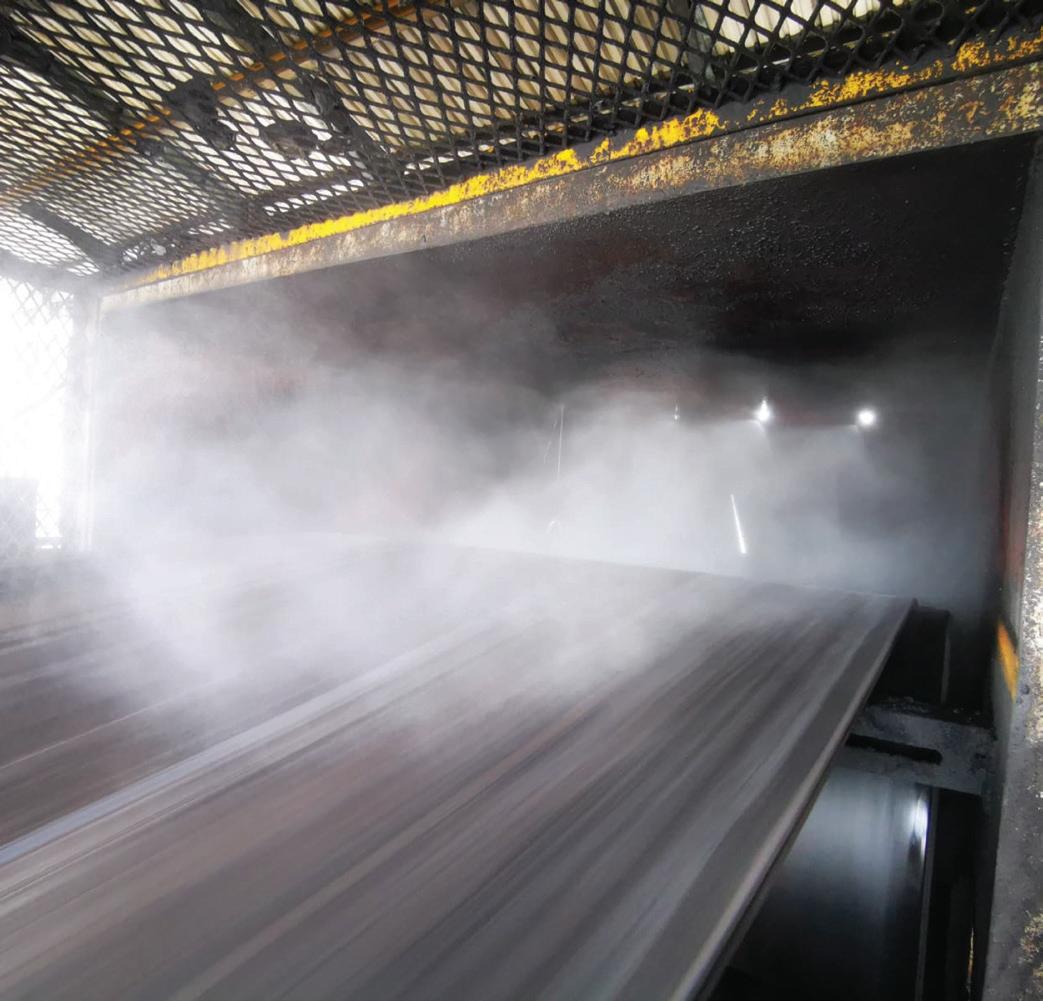
sues. These results were presented in a report, showing the spend on dust control would be recovered within one year. This kind of data makes it easier for leadership to approve future site upgrades.
Important indicators include water usage per kilometre of road, frequency of grading interventions, truck cycle times and particulate levels at site boundaries. Regular reporting against these metrics demonstrates progress and supports continuous improvement.
The same method can be applied to erosion prevention and road care. Whether it is fewer spills, better tyre life or more uptime, the results are often clear once they are tracked.
The best results often come from small steps. A site visit, even just with a clipboard and pen, can show which roads cause the most complaints, where the dust clouds rise or where rain causes washouts. Pick one issue and focus efforts there. If it is dust near the loading zone, trial a fog cannon or road binder. If trucks are wearing tyres too quickly, check road grade and vibration logs.
Keep notes. Compare fuel use, maintenance hours and downtime before and after. If you see improvements, roll out the method wider. Teams will be more willing to help when they see results in their daily work.
An effective environmental management plan links dust control and erosion control with dynamic haul road management and targeted fog cannons in high-wind zones. Backing up these measures with added value quantification ensures each rand spent can be traced to specific performance gains.
Safe, clean and efficient worksites do not come from one big fix. They come from practical habits: fixing roads, reducing dust and keeping soil where it belongs. When sites manage these basics well, they save time, money and effort—every single day.


How artificial intelligence is transforming water treatment management in African mining

In the ever-evolving landscape of mining in southern Africa, sustainability has become a non-negotiable priority. Amid growing environmental, social & governance (ESG) pressures and increasingly scarce resources, mining companies are being compelled to rethink how they manage one of their most critical inputs: water.
From drilling and mineral processing to dust suppression and tailings management, mines consume vast volumes of water every day. But thanks to rapid advances in artificial intelligence (AI) and machine learning, there is a new wave of innovation helping mines become far more efficient—and sustainable—in how they treat, reuse and manage water.
Across Africa’s mining heartlands— from South Africa’s platinum belt to Zambia’s Copperbelt and Namibia’s uranium operations—AI is quietly reshaping how the sector approaches water treatment. In the process, it is not only helping reduce waste and cut operating costs but also making tangible ESG gains while improving the long-term resilience of mining operations in water-stressed regions.
“Water is no longer just a utility in mining—it’s a strategic asset,” says an environmental engineering consultant based in Johannesburg.
“The integration of AI into water management systems allows mines to treat water more intelligently, reuse it more efficiently and manage risks more proactively. That’s critical for a continent where water security is often under threat.”
Mining is among the most water-intensive industries in the world. In countries like South Africa, which already face chronic water scarcity, mining operations account for a significant portion of industrial water usage. A single platinum or gold mine can consume millions of litres of water daily for mineral extraction, slurry transport, cooling and refining processes.
But water is not just consumed— it also becomes contaminated. Mine water often carries heavy metals, acids, suspended solids and process chemicals. If not adequately treated, this can lead to environmental degradation, legal liability and reputational harm.
With mounting pressure from investors and regulators to comply with ESG frameworks, many mining companies are turning to smarter technologies to reduce their water footprints.
Today’s investors want to see ESG metrics hardwired into mining operations. AI offers a toolset that can deliver measurable improvements in how mines handle water, which is a key part of that ESG puzzle.
At the core of this transformation is the integration of AI and machine learning into water treatment and monitoring systems. These technologies can analyse massive streams of real-time data from sensors across mine sites: tracking water quality,
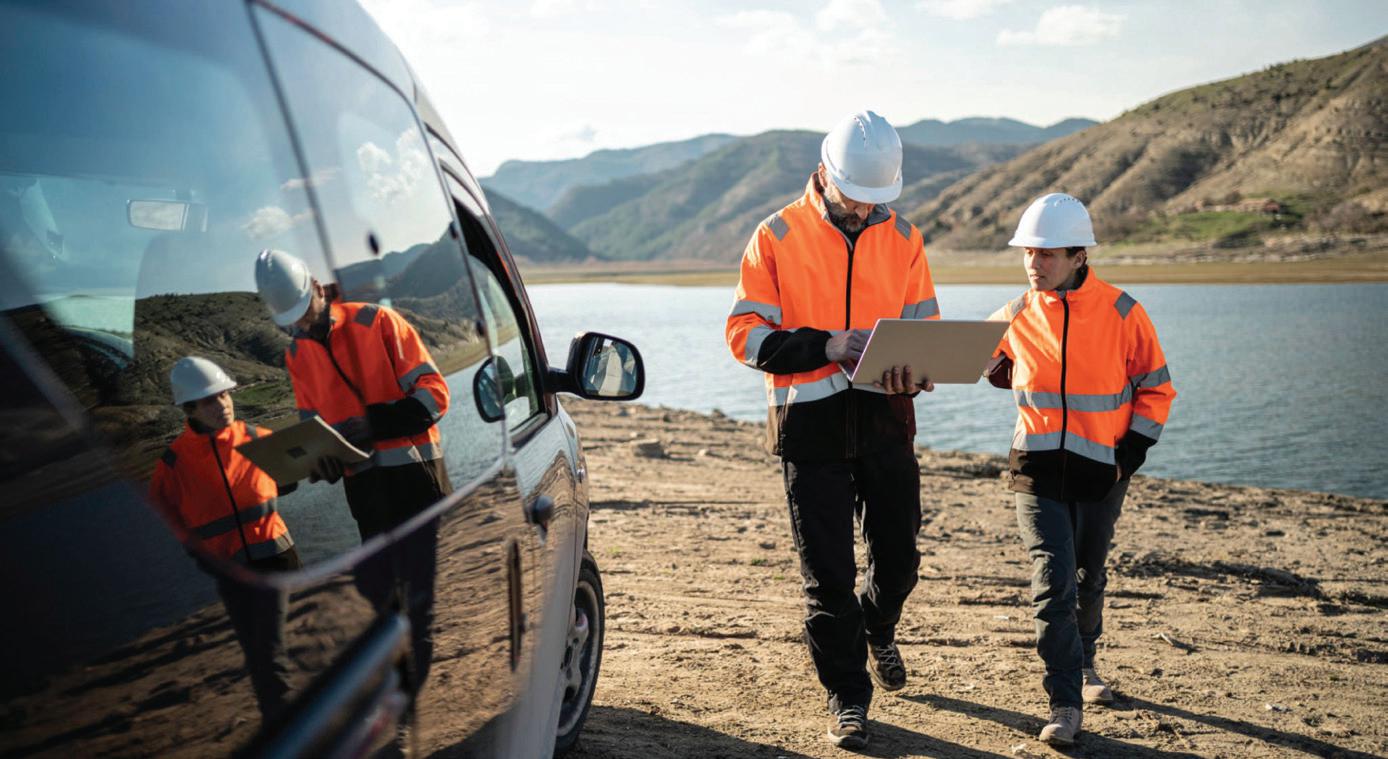
every day.
flow rates, temperature, pH, conductivity and contaminant levels.
Using predictive modelling, AI systems can identify anomalies in water systems, detect leaks or equipment faults and recommend treatment adjustments to optimise water reuse and discharge quality. In some advanced operations, autonomous AI–powered systems can even control pumps, dosing equipment or filtration units without human intervention.
For instance, South Africa’s Exxaro Resources has been experimenting with AI–powered water quality sensors that monitor effluent discharges and trigger automated responses in its treatment plants to maintain compliance with environmental permits.
“These systems are not just responsive—they are predictive,” says Margaret Bwalya, a water technologist in Lusaka who has worked with several copper mines in Zambia. “They allow operators to stay ahead of problems and minimise downtime, contamination and compliance failures.”
A key promise of AI in mine water management lies in enabling circular water systems, where wastewater is treated and reused in a closed-loop manner rather than being discharged or lost to evaporation.
Machine learning algorithms can help determine optimal water treatment regimes that maximise reuse potential, reduce chemical inputs and cut energy use. For example, AI can predict the best times to recirculate process water, or adjust treatment protocols based on the varying chem-

ical composition of ore bodies being processed.
A notable case is Debmarine Namibia, which uses AI–augmented reverse-osmosis systems aboard its marine diamond mining vessels to recycle greywater and reduce freshwater intake at sea—an innovation that saves thousands of litres of water per day.
“AI gives us the ability to turn every drop into data, and every data point into an insight,” the company states. “That’s how we reduce waste and increase efficiency on vessels where every litre counts.”
For mining companies, investing in AI–based water treatment solutions is not just about ticking ESG boxes—it’s also about protecting profits. Traditional water treatment systems are often inefficient, with high energy and chemical costs. AI technologies can reduce these overheads by streamlining processes and reducing human error.
In regions where water access is regulated or where companies pay for

extraction and discharge volumes, reducing net consumption through AI–driven reuse translates directly into operational cost savings.
There is also the reputational and legal risk reduction that comes with improved compliance and fewer environmental incidents.
The payback period for smart water systems can be surprisingly short. Once the AI model is trained, it continues to learn and improve. That means compounding returns over time—not just financially but in terms of stakeholder confidence as well.
A McKinsey study on digital water in mining estimates that advanced analytics and automation can reduce freshwater consumption by up to 30% and treatment costs by up to 40%, depending on the mine type and location.
Despite the promise, integrating AI into mine water systems is not without challenges. Many older mines still rely on legacy water infrastructure, which lacks the digital instrumentation required for real-time data acquisition. Retrofitting these systems can be costly and time-consuming.

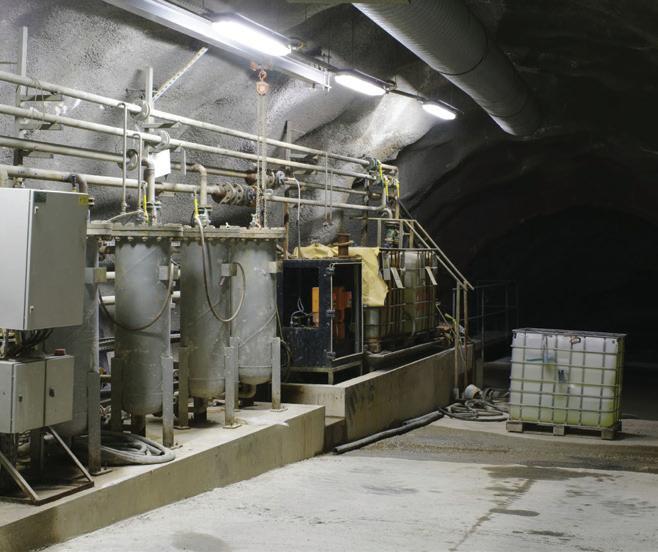
Data quality is another issue. AI systems require clean, consistent and high-frequency data to deliver accurate outputs. In some remote or under-resourced mines, there may be gaps in connectivity, sensor calibration or data governance.
Moreover, there is a skills gap. AI deployment requires not only IT specialists but also engineers who understand both water chemistry and machine learning logic: a hybrid skill set that is still rare in many African contexts.
“There’s a tendency to buy a black-box solution and hope it works,” cautions Bwalya. “But AI isn’t magic; it’s a tool that needs local understanding and ongoing fine-tuning. Mining companies need to invest in training and cross-disciplinary teams.”
There are also regulatory hurdles. In several southern African countries, environmental guidelines around water discharge and reuse were written before digital systems became commonplace. This can lead to uncertainty over compliance thresholds or the legal recognition of AI–generated water quality data.
Still, the direction of travel is clear. As water stress intensifies across southern Africa and ESG reporting becomes more stringent, the adoption of AI in water treatment is expected to accelerate.
From junior explorers to established multinationals, mining companies are starting to view water not just as a utility to manage but as a domain where competitive advantage can be gained through innovation. In this context, AI is emerging as both a necessity and an opportunity.
The mining sector has always been about extracting value from the ground. Now it is about extracting more value from the water one uses to do it—and doing so responsibly.
As African mining companies seek to future-proof their operations against environmental and economic uncertainty, those who embrace intelligent water management will be better positioned to meet investor expectations, regulatory demands and community needs.
The age of AI–powered water stewardship in mining has arrived—and with it, the possibility of smarter, leaner and more sustainable operations across the continent.
Using predictive modelling, AI systems can identify anomalies in water systems, detect leaks or equipment faults


Mining operations demand equipment that performs under relentless conditions: from blistering 50°C heat and abrasive dust to high electrical DC loads that strain conventional systems. In this environment, uptime is everything.
That is why Prestolite Electric has become a trusted partner to the global mining industry worldwide, delivering high-output alternators and powerful starter motors that extend service life and reduce costly downtime.
Unlike standard-fit units that offer just enough amperage for baseline systems, Prestolite products are engineered to handle high-amp auxiliary loads with ease. The result? Longer lasting high performance, reduced component failure, optimising yield per tonne.
The benefits are proven in the field. Prestolite’s SRE185/275-24JB & PAD Mount 24V185A and 275A brushless
alternators are designed for extreme temperatures (-40°C to 125°C), with high-heat and dust-resistant bearings and seals. Their isolated ground technology protects engines against stray voltage and electrolytic damage, while remote sense capability maximises charging efficiency and extends battery life. Operators also gain best-in-class charging at engine idle—a critical advantage in mining fleets where idle time is significant.
Prestolite’s M128R 12kW gear-reduction starter motor further demonstrates the company’s innovation. Lightweight at just 17.5kg (nearly half the weight of some competitors’ 50MT at 34kg units), it delivers soft-start functionality that reduces ring gear wear while lasting up to three times longer than rival products. Oil-sealed designs also en-
sure reliable performance in wet clutch applications.
Backed by over 110 years of engineering history and supplying more than 40 OEMs worldwide—including Caterpillar, Cummins, Komatsu, MTU, Perkins and Hitachi—Prestolite is synonymous with durability and performance.
In southern Africa, Shelhurst Components Pty Ltd proudly represents Prestolite Electric as the master importer and stockist. With local inventory and technical support, Shelhurst ensures mining operations across the Southern African Development Community region have immediate access to the full Prestolite range—helping operators keep fleets reliable, reduce downtime and, ultimately, drive greater productivity.
Optimise yield per tonne. Reduce downtime. Fit Prestolite. Visit prestolite.co.za for more information.

Prestolite products are engineered to handle high-amp auxiliary loads with ease


